- The 12 Most Beautiful Towns...

The 12 Most Beautiful Towns and Villages in Serbia

Belgrade and Novi Sad are undoubtedly the main draws of Serbia. The two biggest cities deserve more than they get, but even city-loving travellers will agree that it takes a lot more than metropolises to make a country. Pockets of Serbia are still delightfully traditional, and those who wisely venture beyond the cities are rewarded with centuries of history and truly remarkable aesthetics, not to mention some curious spots to boot. Peppers, too, lots and lots of peppers. Here are 12 of the finest towns and villages from the nation of Tesla, Pupin and Milanković.
Sremski karlovci.
It is important to avoid favourtism, but Sremski Karlovci’s position at the top of this list is no coincidence. The town, located just five miles (eight kilometres) from Novi Sad , was once the seat of the Serbian Orthodox Church in the Habsburg Monarchy, but its historical importance is just one of many reasons to visit. The town is full of elegant and varied architecture, and seems packed with more points of interest than can fit within its borders. The very first Serbian gymnasium still stands here, and the Peace Chapel is unlike anything else seen in the region. The pace of life is borderline perfect as well – a sleepy town with just enough bustle to excite. The word “jewel” is vastly overused, but sometimes it just fits.

Eastern Serbia isn’t overflowing with gorgeous cities (although the biggest man-made hole in Europe can be found here), but the little town of Knjaževac bucks the trend and then some. Situated between three different mountains, Knjaževac’s centre is tailor-made for delightful Sunday strolls, lazily taking in the day along the twinkling headwater of the Timok River. Knjaževac almost gives the impression of a sleepy Central European town, as small colourful houses idly crowd together as if vying for architectural pride of place. This could be Austria, this could be Slovenia, but this is Serbia. The wine in the region isn’t half bad either.
It might not seem particularly fair to include a village that was purpose-built for cinema, but it is difficult to ignore the charm of Drvengrad. Also known as Küstendorf, Drvengrad was constructed specifically for Emir Kusturica ’s classic Life Is A Miracle (2004) and is another delight in Zlatibor, one every bit as dreamlike as Sirogojno. There is curiosity here, too, with streets named after such luminaries as Joe Strummer, Diego Maradona, and Nikola Tesla. The buildings are dedicated to modern icons like Ivo Andrić and Stanley Kubrick. Drvengrad is unique, a true playground of a creative genius.

Rajski Konaci
A dreamy ethno-village in central Serbia, Rajski Konaci is the perfect place to visit if you’re interested in making your own rakija, the traditional alcoholic drink popular in Serbia. Who doesn’t want to do that? Rajski Konaci is what would come to pass if a child was given colouring pens and told to draw a village – all vibrant buildings, homey comfort, and lush greenery. It might not be the easiest to reach, but getting to Rajski Konaci is worth every moment of strife.
The name translates as “Wet Mountain”, but don’t let that fool you. Mokra Gora is another wonderful spot in Zlatibor that is tied to Kusturica and Life is a Miracle (2004), albeit one that is slightly overshadowed by the relative modernity and ethno-splendour of Drvengrad. Mokra Gora is best known for its unique narrow gauge railway, the route of which looks like a figure eight when viewed from the sky. It is unlikely that visitors will get a chance to see the tracks from above, so you’ll just have to trust us on that one.
Serbia is a nation full of historical spots, and Topola makes a great case for being somewhere near the top of that list. It was here that Karađorđe (Black George) was chosen as the leader of the (unsuccessful) First Serbian Uprising in 1804, which was essentially the starting point of modern Serbia as an independent state. Karađorđe and his family are buried in the magnificent St George’s Church, known colloquially as Oplenac. The church has an incredible interior mosaic made of some 40 million coloured pieces. Topola is every bit the belly of this wonderful nation.

Located just 11 miles (18 kilometres) from the border of Serbia and Hungary, Palić is a fixture on the summer trip list of anyone in the area with an ounce of sense. The town actually has a Hungarian ethnic majority population, and those looking for a stunning example of Vojvodina’s Hungarian influence need not look any further. Nearby is Lake Palić, a body of water that has been around for thousands of years or ever since the shepherd Paul lost the lamb with the golden fleece and cried so much that a lake was formed from his tears. True story.

Donja Lokošnica
For most of the year, Donja Lokošnica is just another village in the south of Serbia, home to just over a thousand people and not much else. The end of summer sees the village transform, however, from a sleepy regional town into the red pepper capital of the world as it becomes swathed in a coruscating red. Autumn is known as the season of colour, and nowhere else is this truer than in Donja Lokošnica.

Four traditional houses made of straw, mud and beams. That might not sound like the most tantalising brew, but then Latkovac isn’t everybody’s cup of tea. Not too far from the city of Aleksandrovac, Latkovac is another fascinating ethno-village that is as pretty as it is intriguing. The village came into being some 500 years ago, when it was so small that only one fence was needed to separate it, and little has changed. You can even enter into an old courtroom here, although justice has long since left that particular building.
The closest Serbian town to the sea, Prijepolje lies on the confluence of the delightful Lim and Mileševka rivers. The town has played an important role throughout the region’s history, initially serving as a transport stop during Roman and Ottoman times before becoming industrialised in the 20th century. The town is surrounded by forests and the city itself is home to a couple of exquisite little riverside beaches. The Mileševa monastery is nearby, which is the former resting place of Serbia’s most important religious figure: St. Sava.

Situated on the right bank of the iconic Drina River, Perućac has an entire laundry list of attractions to be ticked off, one by one. Its riverside location is splendid, and Tara National Park is right around the corner. This fisherman’s paradise is still relatively unexplored by those from outside Serbia (and most in it), and Lake Perućac in particular is just waiting to be discovered. The lake was in the news in the 90s for all the wrong reasons, but the time for that to change is now. This article was originally published by Lani Seelinger in December 2015 and has since been updated.
Since you are here, we would like to share our vision for the future of travel - and the direction Culture Trip is moving in.
Culture Trip launched in 2011 with a simple yet passionate mission: to inspire people to go beyond their boundaries and experience what makes a place, its people and its culture special and meaningful — and this is still in our DNA today. We are proud that, for more than a decade, millions like you have trusted our award-winning recommendations by people who deeply understand what makes certain places and communities so special.
Increasingly we believe the world needs more meaningful, real-life connections between curious travellers keen to explore the world in a more responsible way. That is why we have intensively curated a collection of premium small-group trips as an invitation to meet and connect with new, like-minded people for once-in-a-lifetime experiences in three categories: Culture Trips, Rail Trips and Private Trips. Our Trips are suitable for both solo travelers, couples and friends who want to explore the world together.
Culture Trips are deeply immersive 5 to 16 days itineraries, that combine authentic local experiences, exciting activities and 4-5* accommodation to look forward to at the end of each day. Our Rail Trips are our most planet-friendly itineraries that invite you to take the scenic route, relax whilst getting under the skin of a destination. Our Private Trips are fully tailored itineraries, curated by our Travel Experts specifically for you, your friends or your family.
We know that many of you worry about the environmental impact of travel and are looking for ways of expanding horizons in ways that do minimal harm - and may even bring benefits. We are committed to go as far as possible in curating our trips with care for the planet. That is why all of our trips are flightless in destination, fully carbon offset - and we have ambitious plans to be net zero in the very near future.

Architecture
The 9 most impressive civil engineering projects in serbia.

See & Do
The best spas and wellness retreats in serbia.

Places to Stay
The best hotels to book in serbia for every traveller.

The 7 Most Beautiful Caves in Serbia

Bars & Cafes
The 7 best bars and cafes in valjevo, serbia.

Balkan Brass: Visit Serbia’s Guča Trumpet Festival Through the Lens of Photographer Tommy Sussex

Guides & Tips
A day in belgrade: how to spend 24 hours in the serbian capital.

Restaurants
The 7 best restaurants in novi pazar, serbia.

The Top 11 Things to Do in Vojvodina, Serbia

Why You Need to Visit Southern Serbia

7 Awesome Independent Stores in Dorcol, Belgrade

10 Great Poems that Capture the Spirit of Serbia
Culture trip spring sale, save up to $1,100 on our unique small-group trips limited spots..

- Post ID: 476436
- Sponsored? No
- View Payload

- Living In Croatia
- Croatian Recipes
- Balkan Recipes

Home > Discover The 57 Best Things to Do In Serbia With Our Travel Guide
Discover The 57 Best Things to Do In Serbia With Our Travel Guide

Written by our local expert Bram
Bram was born and raised in Belgium and has traveled the Balkans & beyond. He is a professional freelance travel writer and photographer specializing in outdoor travel with an emphasis on national parks, nature, and wildlife.
Landlocked countries are often filled with countless different landscapes and sights to be explored, as is the case with Serbia, one of the best places to visit in the Balkans. Here are the best things to do in Serbia.

Skip Ahead To My Advice Here!
Serbia Travel Guide: Best Things To Do In Serbia
Have you ever considered visiting Serbia?
Most people can rattle off the top 10 things to do in Serbia, but we went a little further—listing more than 50 ideas of what to see while you are in the Balkan beauty.
A complete list of Serbian attractions would be far too many to list, but we did our best to ask our team far and wide which of the top sights in Serbia they recommend.
This list will prepare you to rent a car and explore Serbia yourself!
Historical And Cultural Sites
1. studenica monastery.

Surrounded by the beautiful Ibar River gorge, you will find the Studenica monastery. Here, you will find the Church of the Mother of God, frescoes, and art back to the 13th century. The former royal history here means unique architecture dating back to 1183.
2. Lepenski Vir
This hugely popular archaeological site is set in the equally beautiful Derdap Gorge, next to the Danube. Many artifacts from 6500 – 5500 BC have been found here, and the central part is thought to have been a former ritual site. There are many other areas of interest to explore.
3. Gamzigrad
Gamzigrad is an exceptionally well-preserved former Roman town dating back to the 3rd or 4th century. UNESCO listed that it is packed with remains to explore , including an imperial palace complex and former city walls.
4. House Of Flowers Mausoleum
Head to the resting place of the former president of Yugoslavia, Tito, and gaze upon the architecture and water features that decorate it. Situated near the main entrance, you will also see a terrace designed to overlook the entire city, so great views can be seen from here.
5. Belgrade Fortress
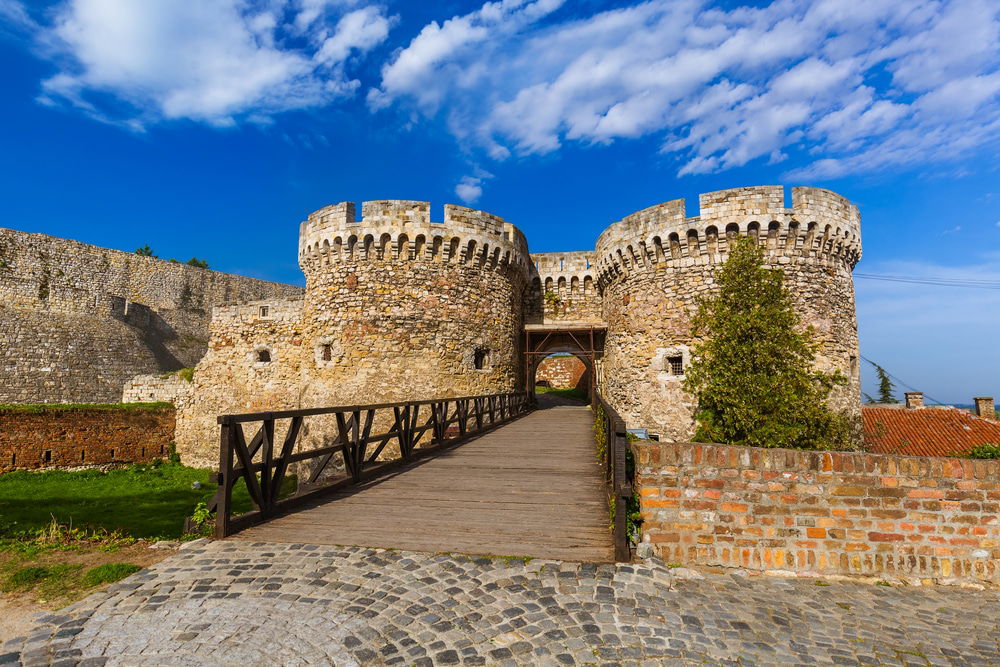
Exceptionally well preserved, this is a place to visit for all the family, with fantastic views from the top over the whole city. The complex includes museums and parks the children will enjoy, as well as great fortifications and history to explore.
6. Viminacium
Dating back to the 1st century, you will find ruins of a former settlement that is still incredibly preserved considering its age. You can head here from February to November and tour the area, and it’s certainly worth reading up a little beforehand to get the most out of your time in this incredibly historic area.
7. Golubac Fortress
Right on the banks of the mighty Danube River, you will find this fairytale city, looked over by an impressive fortress high on the hillside. Views from here are breathtaking, located at the widest section of the river itself.
8. Ethnographic Museum
Located in the capital, this is the best way to head back in time without venturing too far out of the city. Here, you will find artifacts of old village life, traditional costumes, and information on ancient traditions.
9. Nikola Tesla Museum

Belgrade has numerous museums, but this particular one has interactive displays and live shows of inventions by the scientist Nikola Tesla ; it is a great place to take the kids or anyone interested in science.
10. Red Cross Concentration Camp
In Niš , you will find this former Nazi concentration camp, one of the best preserved on the continent. This is certainly not a visit for the faint-hearted, but it will undoubtedly make you think about past atrocities, with stories and displays about those difficult times.
11. Palace Of Princess Ljubica
Dating back to 1831, you will find true old-world luxury here, with highly well-preserved buildings and artifacts. There is a guided tour every Saturday to help you learn more about privileged life back in the day.
12. Petrovaradin Fortress

History buffs should be heading to this museum, with a giant clock tower with reversed time hands, allowing fishermen from far away to tell the time. The citadel sits high on a hill, with many steps to reach it, and is a great window back in time to when prisoners were held as far back as 1692.
13. St Aleksandar Nevski Church
The interior of this church of St Aleksandar is breathtaking. It dates back to around 1877, making it one of the oldest.
14. Gallery Of Frescoes
In Belgrade, there is a museum dedicated to all things artistic. It has full-sized copies of art, mainly relating to church designs from the Byzantine period.
15. Medieval Capital And Roman Legacy
After a unique day tour from Belgrade, you should take a closer look at the Medieval Capital and Roman Legacy Tour.
This eight-hour excursion takes you to the historic city of Smederevo , which was the capital of Serbia in the Middle Ages. Since Roman times, this ancient settlement was one of the gateways between the West and East. Incidentally, it was the first Roman town sacked by Atilla the Hun and the last Serbian town to fall to the Ottomans.
Journeying down the Danube River, you will explore the region’s history, from Roman ruins to Byzantine heritage and Serbian culture . After visiting Smederevo, the tour continues with a traditional Serbian lunch, a visit to a local winery, and a stroll around the magnificent Roman Complex of Viminacium.
16. Ottoman Era In Nis – Skull Tower
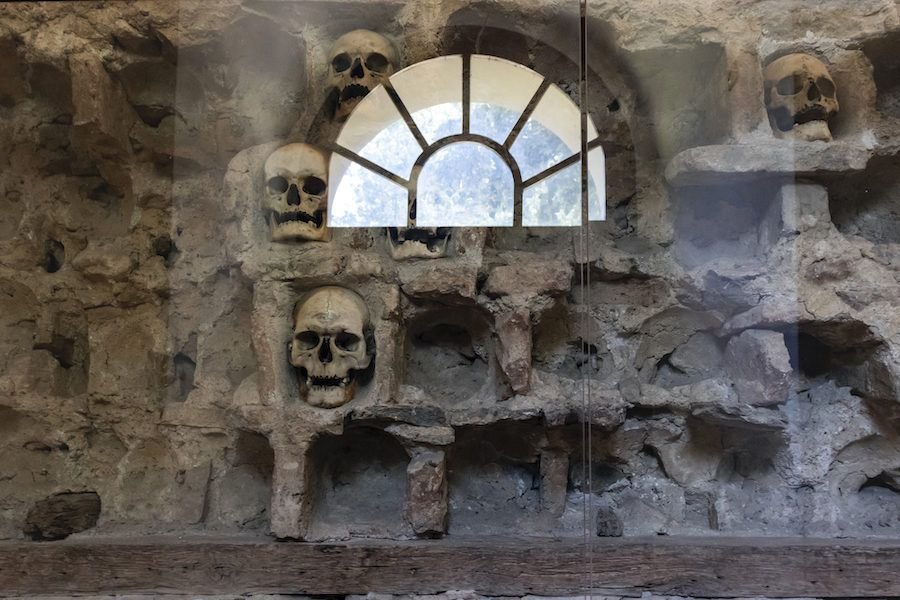
Located in the country’s southeast, Nis is the third-largest city in Serbia . It is packed with relics and ruins dating back to the Ottoman era. Mediana, a former Roman town, a massive fortress, and the worryingly named Skull Tower, is close by.
Nature And Outdoor Activities
17. palic natural spa.

Close to the town of Palic, you will find a dedicated and stunning nature park , home to a natural spa on the northern section of Palic Lake. Here, you can spot wildlife until your heart’s content, with countless species of birds to check out.
18. Zaovine
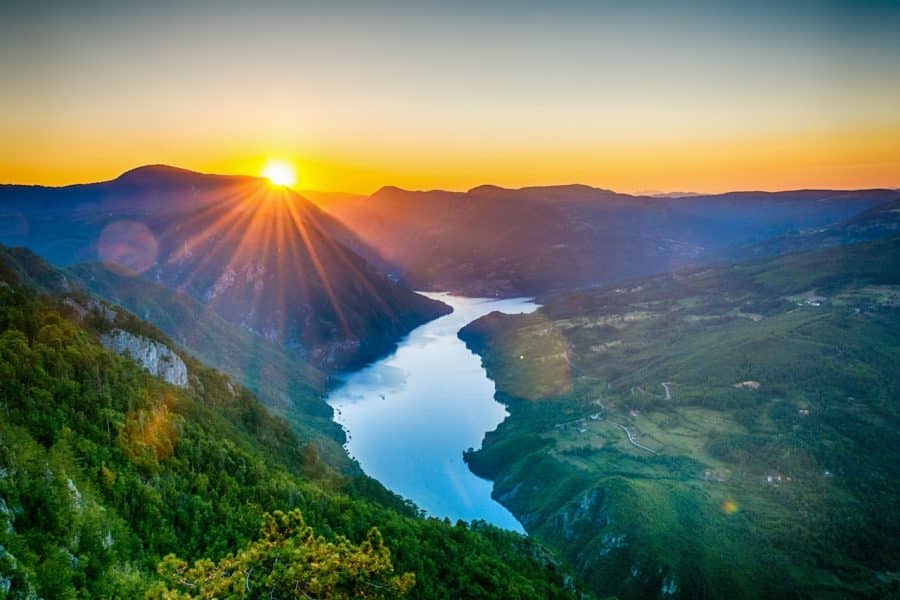
Families will love heading to this beautiful national park in the high mountains of the Tara, Crni Vrh, Stolac, and Zvezda ranges. You can enjoy hiking and water sports during the summer, and you can ski and snowboard during the winter snow.
21. Djerdap National Park
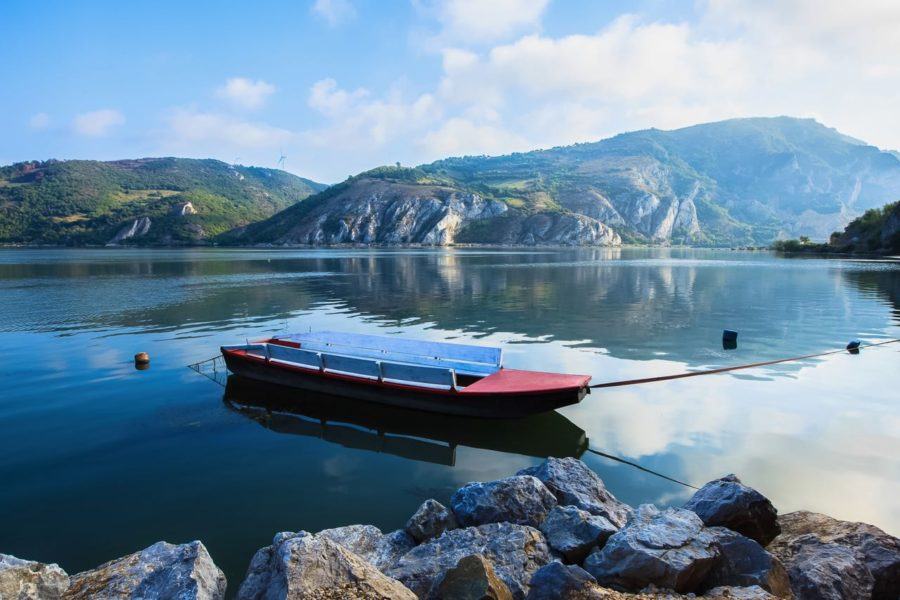
This vast national park is fantastic for nature lovers and is home to many wildlife and flora species. Again, you can enjoy hiking and walking trails and check out the rugged Djerdap Gorge.
22. Sargan Eight Railway Starting At Mokra Gora
This picturesque railway route was once part of the way through Belgrade to Sarajevo, which has since closed and takes three hours to complete.
Get your countryside destinations fixed by heading through the lush, green countryside for much of the way. You begin your ride at Mokra Gora , near the border with Bosnia and Herzegovina. It’s the ideal thing to do with kids in Serbia.
23. White Water Rafting (Uvac, Lim & Drina Rivers)
You must visit at least one of the many major rivers in Serbia, and Spring is the best time to go.
Try your hand at rafting just after the snow melts and rivers are flowing fast! The rivers Drina, Lim, Ibar, and Uvac are top spots for the sport, with various classes of white water , so you are sure to find one that suits your skill level.
24. Bird Watching
The unique natural and green landscapes across the country are a fantastic bird-watching opportunity, and Serbia is home to around 360 species. The top spots are the Uvac River Gorge, Mount Tara, and Djerdap Gorge.
25. Marked Hiking Trail
We’ve mentioned a few areas with hiking opportunities, but Serbia is a haven for hikers overall . The Djerdap National Park, Fruska Gora, and the Tara National Park are some notable destinations.
26. Canyoning
The huge mountains and gorges that make up the entire country’s backbone are fantastic for canyoning. If you make your way to Tara National Park to try it, beware of the bears! Tresnjica Gorge and Seoski Potok are two incredible destinations to give this sport a try.
27. Danube Cruise
The section of the Danube, which runs through Serbia, can easily be cruised by boats of various sizes and with several different itineraries. Do a little research ahead to see where you want to go and decide if you wish to go for a small, quaint, or sizeable ship-style cruise.
28. Swimming In The Sava
The Sava is the longest river in the region, so if you fancy taking a dip in its waters, head to Ada Medica, a small island that is also quite picturesque in its own right. There are private floating houses and cabins on stilts to be found here, as well as a beautiful grassed beach area.
29. Cheap Skiing At Kopaonik Ski Resort
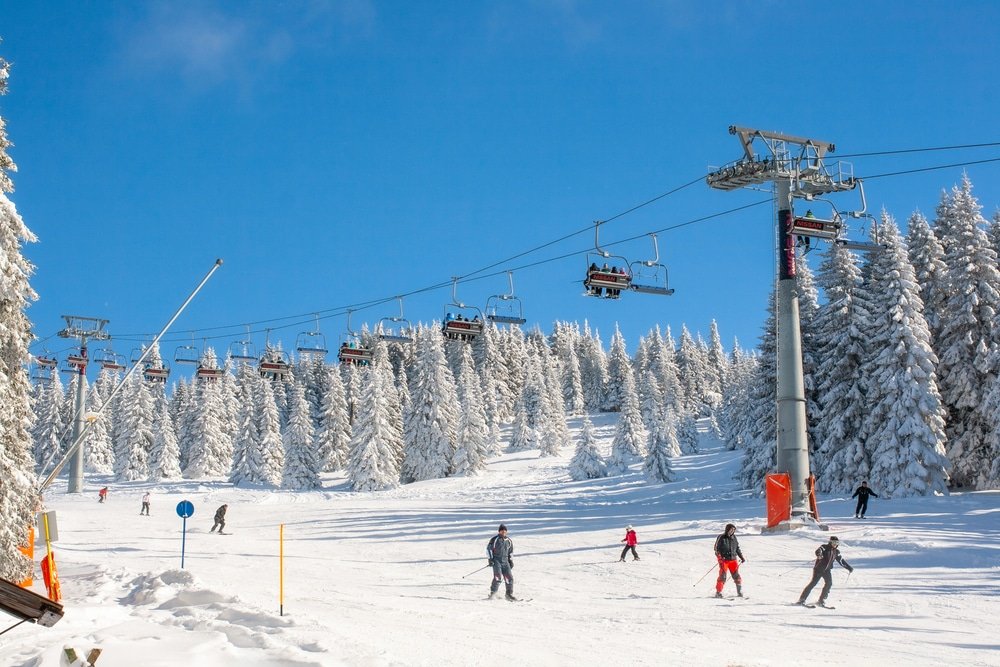
If you love skiing but can’t afford the enormous price tag of some of Europe’s better-known resorts , check out Serbia’s mountains for a much cheaper experience with the same thrill level.
Kopaonik in the south is a very popular spot, Zlatibor in the west, perhaps better for intermediates or beginners, and Mokra Gora, which has a snowboarding center.
30. Danube Bike Trail
Cycling is big business in Serbia, presumably because of the ever-changing landscapes, and there is no trail more epic than the scenic Danube Bike Trail. This is exceptionally long, so perhaps only follow part of it, with 1040km inside Serbia. If you want to compete more seriously, check out the Tour de Serbie every June.
31. Swimming In The Danube
If you are not a strong swimmer, don’t attempt this one, but if you are pretty experienced, you can take a dip in several spots on the Danube. One of the best places for swimming is Lido Beach on Great War Island (Belgrade); however, Lake Ada Ciganlija is also a good choice.
32. Miroc Mountain
You will need to apply for a permit to climb it, but the hassle and effort are worth it for the views you will see from the top. The highest peak is called Miroc, and you can find accommodation within the area relatively quickly, such as in Kladovo and Tekije.
33. Kopaonik
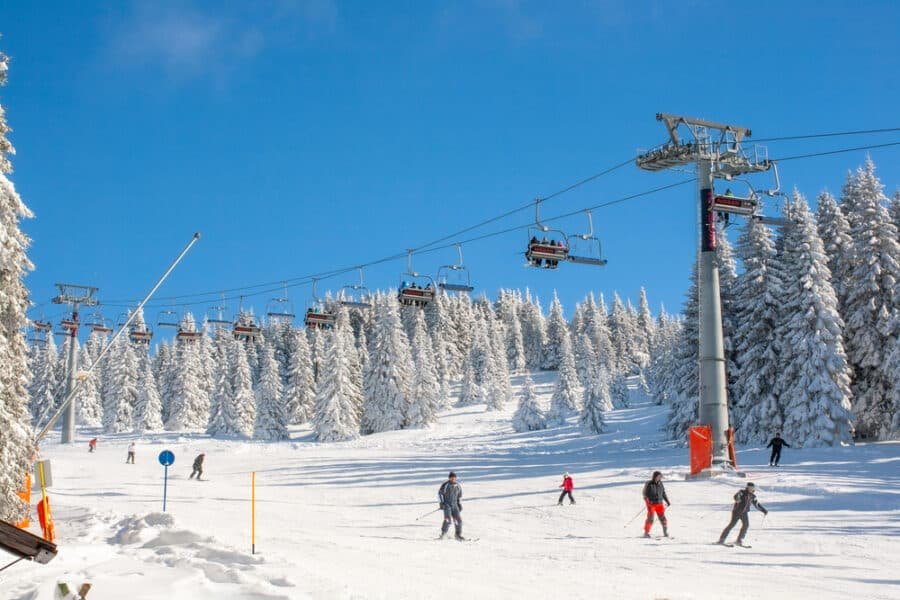
This beautiful mountainous park is one of the sunniest parts of the country, and you can enjoy great outdoor activities here, as well as walking and climbing, with amazing views to be seen. During winter, this area also turns into a ski resort .
34. Devil’s Town
The landscape will pique your interest. Right in the country’s south, you will find a town with an otherworldly appearance; it has been dubbed ‘Devil’s Town.’ This is perhaps because of the rocky erosion that has taken place over the years, or it could be because of local legends that tell tales of demons and creatures that roamed the land and made slightly worrying noises.
Brands We Use And Trust
Festivals and events, 35. drvengrad festival in kustendorff.
This popular cultural festival is a must-visit. It usually takes place in January and offers the chance to enjoy international and local films while also possibly spotting a celebrity or two.
36. EXIT Festival
If you’ve done sightseeing and are ready for something a little more modern, head to one of Serbia’s major cities – Novi Sad , just north of the capital. Here you can enjoy this hugely popular outdoor music festival .
Traditionally held in July, also known as ‘Exit in Serbia,’ the festival offers the opportunity to enjoy the warm sunshine before dancing the night away.
City And Urban Experiences
37. cycling tour of belgrade sights.
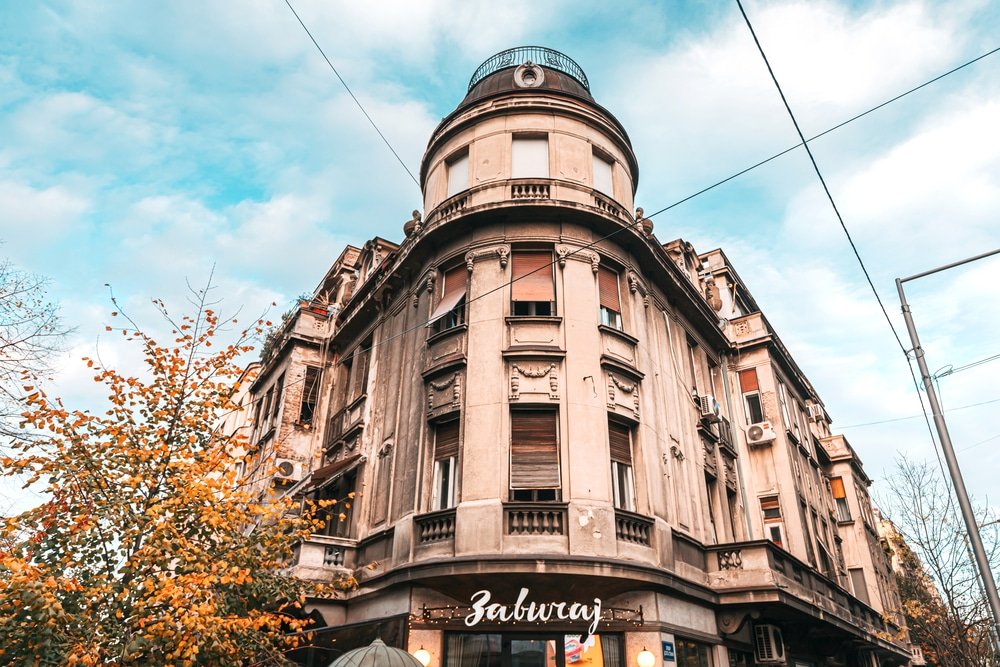
If you want to be active and see the sights simultaneously, I Bike Belgrade organizes guided cycling tours around the city’s central areas. These tours allow you to get some exercise, see the main highlights, and do it all with the help of a guide.
All you need to do is grab a Belgrade sightseeing map and pedal off on your adventure.
38. Hop-On & Off Belgrade Sightseeing Bus
A Belgrade top 10 list is never complete without this bus. This is an excellent family-friendly trip around the city – all without giving yourself blisters and hearing the kids moan about all the walking.
Use the hop-on, hop-off sightseeing bus to its maximum potential. It has several routes, and you can choose the way that suits your interests. Hop off if you want to explore further before re-joining the next tour.
39. Serious Shopping In Belgrade
You can’t deny it: while sightseeing and nature are lovely, sometimes we all want to indulge in a little retail therapy. In Serbia, your best destination is undoubtedly the capital city – Belgrade.
Packed with High Street shops, many names you will recognize, and more local stores, you can take a few souvenirs home .
40. Belgrade City Zoo
Right in the city’s heart, you will find this large and famous zoo, which is the perfect day out for all the families in Serbia. The zoo now covers a vast 14 hectares and is home to many species of animals.
41. Architecture On Belgrade’s Knez Mihailova Street
This used to be where the affluent lived, but nowadays, you can enjoy shopping, street art, and beautiful architecture on this iconic street.
The Serbian Crown Hotel is an excellent example of architecture and history; you’ll see just why it’s one of the most famous buildings in Serbia when you are there.
42. Authentic Cuisine In Skadarlija, Belgrade

Skadarlija is the city’s old quarter, dating back to around the 19th century, and is packed with restaurants, mainly serving traditional dishes. Be sure to try pljeskavica, a local meat dish, usually lamb, with various vegetables and the world-famous cevapi.
43. Vibrant Nightlife In The Capital
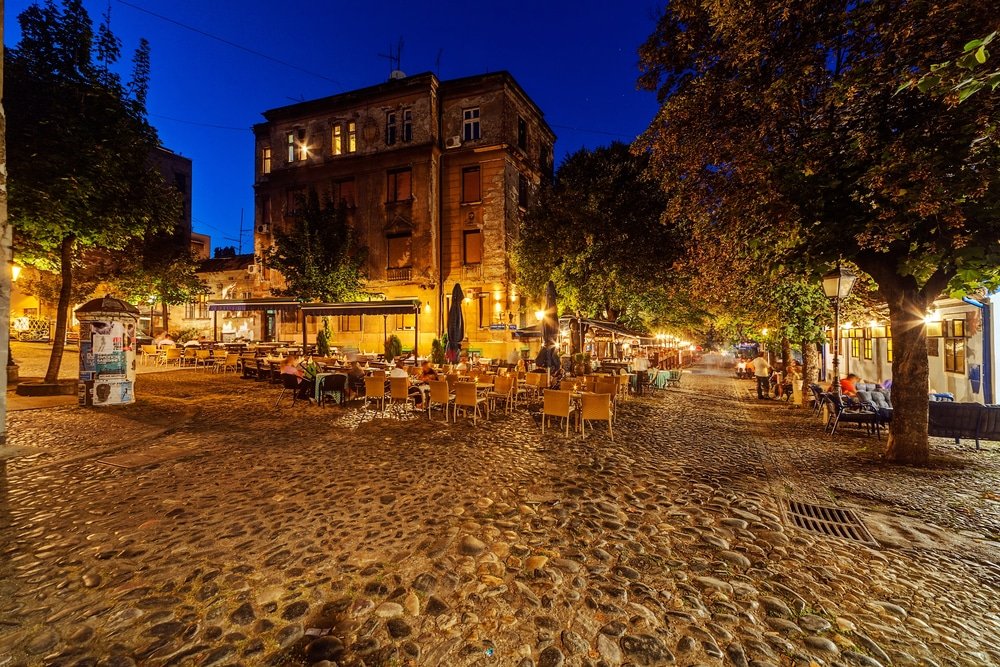
You might not have Serbia down as a place to party , but the capital city is bright and vibrant during the evening! If you’re looking for a place to dance, you can find cheap places to head, more affordable drinks, and a wide range of nightclubs.
44. Aviation Museum In Belgrade
Anyone interested in World War II should head to Belgrade’s Aviation Museum, where several planes are kept, as well as rare artifacts and pieces of aircraft.
45. Timber Town
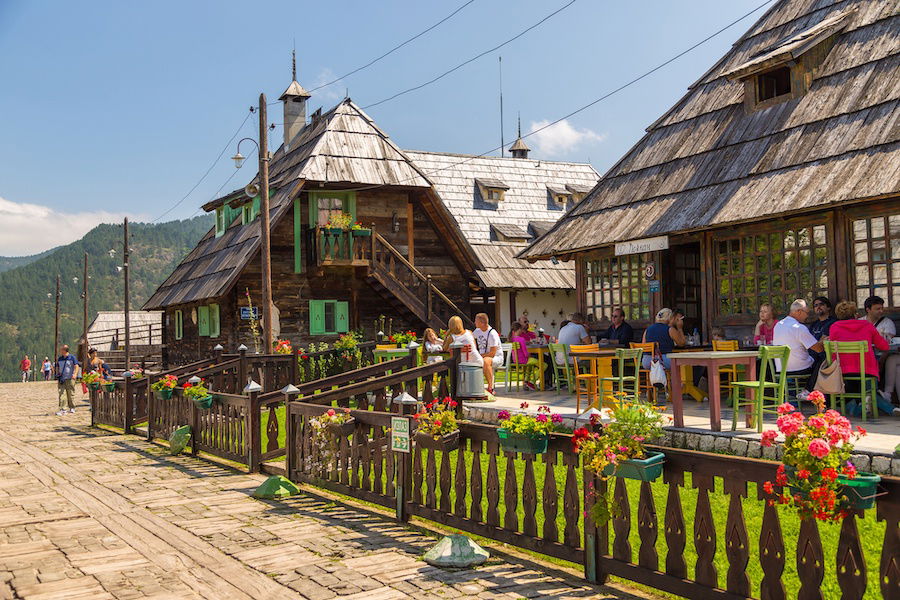
Drvengrad is home to Timber Town, overlooked by the imposing Zlatibor Mountain. This small village was built as a film set in 2002 and is a pretty and colorful place to visit. You can also see a full-sized statue of the actor Johnny Depp here – random but interesting!
46. Subotica

Other than Belgrade, a trip to Serbia must include Subotica . The city is a multicultural mix of Hungarians, Serbians , and Croatians living next to each other, and it has so far remained undiscovered by many.
Recreational And Leisure Activities
As already mentioned, a Danube Cruise makes for a beautiful recreational activity in Serbia. Don’t forget to add these other ideas to your itinerary too:
47. Open Air Museum In Zlatibor
The Sirogojno Open Air Museum is a great way to learn more about 19th-century life in the country while enjoying the fresh air! Wander around the hillside setting as you explore the museum and the wooden houses that make up its landscape.
48. Wine Route
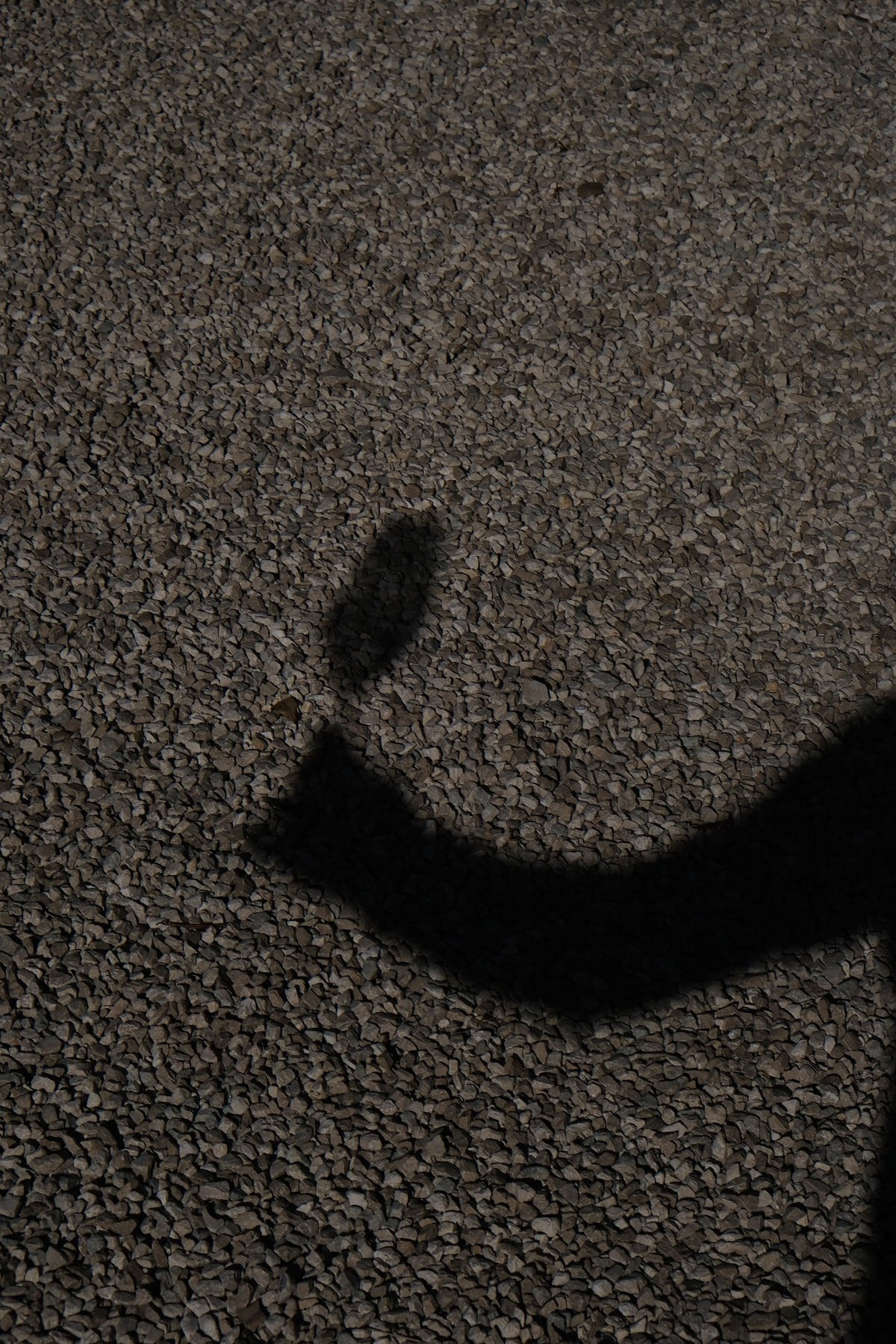
Serbia is packed with different wine routes to follow. You can check out the stunning scenery and taste and learn about production simultaneously.
Fruska Gora is a famous wine region where Riesling is produced. Sauvignon is popular here. The Smederevo Wine Route is another popular one, with the glistening Danube on one side and the Morava on the other side.
49. Bela Crkva
This small town is picture-perfect, surrounded by green hills, fragrant flowers, lakes, and small villages. If you want to explore Serbia’s authentic side, head here for tradition and culture, which is away from the big city.
50. The House On The Rock: Drina River House
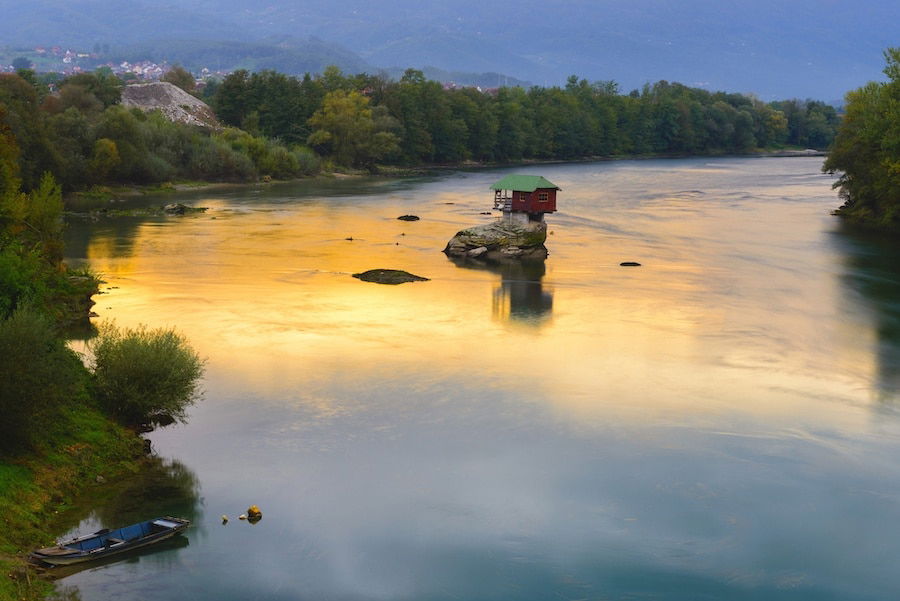
If you are in the River Drina area for rafting or a nature break, check out the famous house on the Rock; this is literally what it says, but it is worth more than that! This former fisherman’s residence was built in the middle of the river, perched high on a rock.
51. St Sava Church At Night

Belgrade is home to the seriously impressive and rather beautiful St. Sava Church. While this is a treat at any time of the day, at night, it is lit up and almost glows; certainly one for the camera.
52. A Day At The Beach In Novi Sad
While Serbia is landlocked, the huge Danube has some beaches, and the best is perhaps in Novi Sad , where there is a long stretch of sand to relax on and plentiful nightlife options for your evening entertainment.
Serbia Tours
While many travelers prefer to “do their own thing” and be spontaneous while on holiday, many people also like to be taken care of.
That could mean many things, from excellent restaurant service to superior hotel hospitality and facilities. Besides, organized tours can be considered a welcome service, eliminating the time and effort necessary to plan a trip. This leaves you much more time to enjoy what you’re doing. If you’re looking for some of the best tours in Serbia, take a look at those below. They’re all fantastic, comfortable, informative, and reasonably priced.
Serbia’s capital, Belgrade, is the country’s central hub of many things, from commerce to culture, architecture, and art. There are many tours in the city that you can join of all types and lengths. However, there are several great excursions if you plan to explore the rest of Serbia. Read on to find out some of the best tours in Serbia.
53. Belgrade (Walking) Tours
There are so many Belgrade tours that picking one can be challenging. From free historical walks to biking tours to Segway tours and bar crawls, you can explore this bustling, historic city in various ways.
An effective way to start any visit to a new city is by joining one of the free walking tours. That’ll give you an excellent introduction and allow you to get your bearings. Also, you might even meet some new friends in the meantime!
54. Food And Culture Tour In Belgrade

Of all of the tour choices in Belgrade, one stands out. The Food and Culture Tour in Belgrade. This tour is a great way to get to know Serbian culture , identity, heritage, and customs. You can look up what to eat in Serbia here to get a head start on the fun.
On this tour, you will taste a variety of typical dishes, snacks, and drinks in authentic Serbian eateries.
55. Pannonia Wonderland – Sremski Karlovci
The Pannonia Wonderland Tour takes you to Vojvodina, Serbia’s largest province, and its many highlights.
This fantastic tour immerses you in 17th- to 19th-century Serbia, arguably the nation’s cultural heyday.
Major stops include Novi Sad’s town with its numerous architectural masterpieces; Sremski Karlovci, a gorgeous Baroque village that used to be the Serbian cultural and spiritual center during the Austro-Hungarian period and is one of the country’s premier wine regions; and beautiful Fruška Gora National Park .
56. Down The Resava Gorge
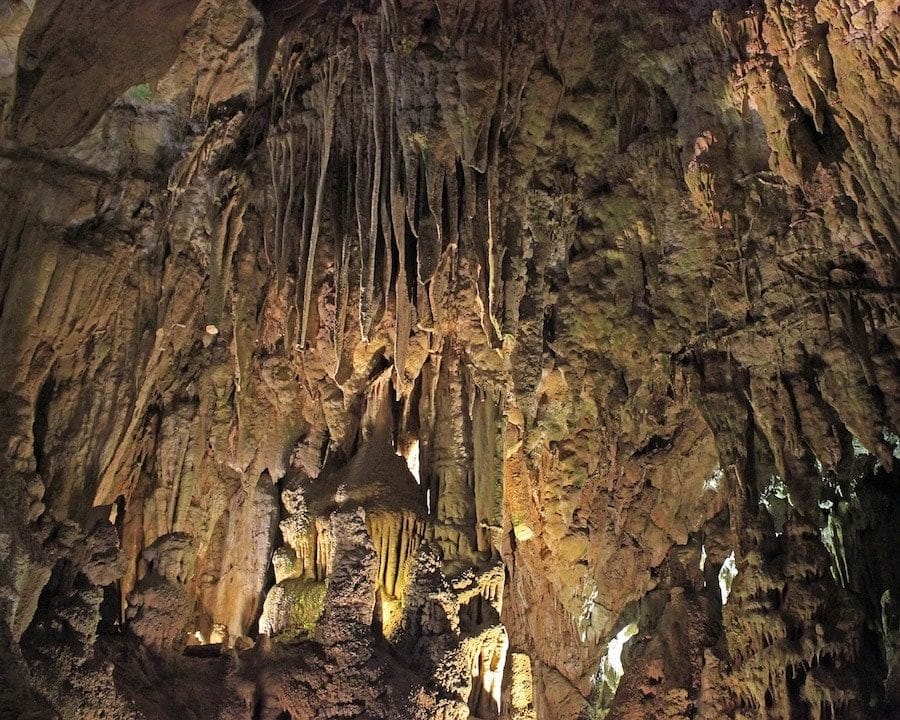
From a great cave and waterfalls to ancient architecture and one of the most unusual attractions in Serbia, the Down the Resava Gorge Tour has it all. Starting and ending in Belgrade , this day tour’s first stop is the town of Despotovac, where you will visit the Park of Miniatures.
This extraordinary place features many models of monasteries in Serbia dating back to the Middle Ages, offering a closer look into the medieval kingdom of Serbia.
Your afternoon activity is exploring Resava Cave, the oldest surveyed cave in Serbia—more than 80 million years old. The next stop is an actual monastery, the Manasija Monastery, dating from the 15th century. Lunch will be enjoyed while overlooking the beautiful Veliki Buk—Lisina waterfall.
57. Tara National Park

Last on our list of things to do in Serbia is one for adventurers. If you don’t have much time but still want to experience the tremendous Serbian outdoors, the Tara National Park Tour is one of the best tours in Serbia for you. This full-day excursion takes you into the mountains of western Serbia for a day filled with natural beauty and traditional food .
There are many highlights on the way, such as the Drina River itself and the house that stands on a rock in the middle of it, Perucac Lake, the Goat Rock viewpoint, and the Wooden Town, a traditional Serbian village constructed by Serbian film director Emir Kusturica.
Move This Adventure To Your Inbox & Get An Instant Freebie

No spam. Unsubscribe at any time.
Serbia’s Climate

Serbia has varying climates, depending on where you venture. If you plan on an epic country-wide adventure, you should be ready for different weather conditions depending on your travel direction.
The northern portion of Serbia is known to have a continental climate, which means winters are cold but not freezing and summers can be very hot and humid. Rain in this part of the country is spread evenly throughout the year.
If you head to the central part of Serbia , then you can expect a moderate continental climate, which is a slightly less extreme version of what you will experience in the north.
However, heading south, you will find winters that experience snowfall, often substantial, with freezing temperatures before the mercury soars during the summer, with very little rain at this time.
Where Is Serbia In The Balkans?
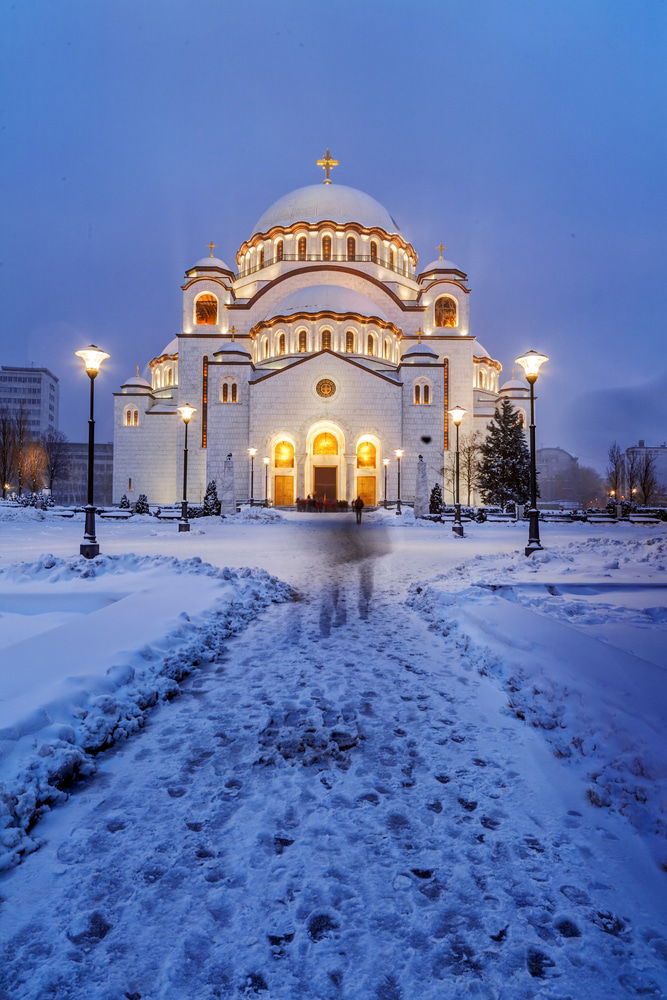
It is located in the South of Europe, part of the Balkans , sharing land borders with Montenegro , Bosnia & Herzegovina , Bulgaria , Croatia, Hungary, Macedonia , Albania , and Romania – every one of those countries has left its small mark on the country.
But Serbia isn’t a copy-paste of its neighbors—au contraire—Serbia has much on offer that is unique. Lucky for you, Serbia is not as touristy as its neighbor (hello, yes, we are talking about you, Croatia!).
Belgrade is Serbia’s massive capital city, packed with architecture and history to explore, but don’t just see Belgrade’s top attractions. The country is unquestionably an explorer’s dream.
Planning Your Trip: Serbia Travel Tips

- Croatia and Serbia have complex histories. While they are neighbors and share many similarities, we recommend you don’t ask just anybody about the ’90s war—the topic can make some very upset
- There is limited tourist information in Serbia , and many sites don’t even have signs – so ask a friendly local
- Serbia has an extensive bus network, making it easy to travel between the major cities. However, for things further afield, you will need to rent a car, book a group tour, or get a private transfer
- While flights to Serbia run all year round, you must factor in times when places and attractions are closed
Serbia might be relatively unknown regarding tourism, but this country boasts an exciting history, stunning natural treasures, and outdoor adventures. The capital is also home to an incredibly vibrant nightlife scene, making Serbia the perfect blend of old and new.
You’ve now got your list of the famous places in Serbia; tell us, are you ready to visit Serbia, and if so, where will you start first?
- Hostels in Serbia and Hotels in Serbia
- Day Trips From Belgrade
- Things to do in Belgrade
- Hiking Via Dinarica
- Best Souvenirs To Bring Home From Serbia
- 7 Best Ski Resorts In Serbia
- Ultimate Guide To The National Parks Of Serbia
- The 4 UNESCO World Heritage Sites In Serbia
Comments (9)
Serbia is so beautiful. It’s been trending as one of the hottest tourist destinations in the last years. Amazing place.
These all things really very interesting, do you know its also a good place to visit Serbia, The Nowhere in the Balkans is there anything quite like this
Nice blog, During this season I want to plan a trip to some attractive destination and I think Serbia is a best for visit…Thanks for give me a reasons to go there,It’s helpful for me..
Thanks for the great job you have done, Nice Details…
Such breathtaking scenery and stunning architecture!
Thanks for the amazing post. Loved the details. Never knew Serbia was this beautiful.
Such fantastic pictures..!! Loved your blogging. Great work and thanks for sharing this beautiful post…
Such a great comprehensive post. I didn’t realise there was so much to see and do in Serbia. We still need to do a wine/vineyard tour!
Woooooooooow! I love your pics and your story. We are normal, warm people, hospitality is extremely important here. Belgrade is like any other big city, parks, coffee shops, people, transportation. :D
Leave a Reply Cancel reply
Your email address will not be published. Required fields are marked *
Save my name, email, and website in this browser for the next time I comment.
This site uses Akismet to reduce spam. Learn how your comment data is processed .
Subscribe To Unlock Your FREE Customizable Travel Packing List & All Our Best Tips!
Unlock Your FREE Customizable Travel Packing List!
Subscribe Now For Instant Access To Stress-Free Packing

Home » Travel Guides » Serbia » 15 Best Places to Visit in Serbia
15 Best Places to Visit in Serbia
Serbia has something for everyone, from lively urban attractions, to calm and peaceful towns and villages that dot the magnificent countryside. It is also known for being one of the cheapest destinations in the Balkans, so if you are planning a trip to the region then Serbia is well worth a visit.
Aside from a wealth of cultural and historic relics to enjoy, there is also a swinging cafe and bar scene as well as throbbing nightlife and some of arguably the world’s best music festivals. Whatever you do, don’t be put off by Serbia’s often uncomfortable history. Times have changed, and this is one place not to miss.
Let’s explore the best places to visit in Serbia :
1. Belgrade

Serbia’s capital Belgrade is located at the intersection between the Danube and the Sava rivers, and is an eclectic, if sometimes arresting, mix of old and new styles, from 19th century buildings to Art Nouveau structures.
There is a little bit of everything in Belgrade, including the dominating Kalemegdan Fortress, located in Kalemegdan Park, the remains of which stand today. The park is also home to the Military Museum that even features the remnants of a US Stealth Bomber for those keen to learn about the military history of the region.
Aside from the fortress there are Orthodox churches, colourful facades, and quaint squares aplenty, but for something more unexpected head over to the island of Ada Ciganlija or ‘Gypsy Island’ in the south of Belgrade to find yourself at something of a self styled beach resort. Here you will find beaches that stretch along the banks of the Sava, and you can enjoy swimming, water sports like waterskiing, and a large area of parkland for those who enjoy checking out the local plant and wildlife.
Tours : For tours check out Travel & Event Team Serbia
2. Fruška Gora Mountain and National Park

Located in the region of Syrmia, Fruška Gora Mountain is found on the border with neighbouring Croatia, and is affectionately known as the ‘Jewel of Serbia’. The mountain region includes a protected area known as Fruška Gora Park, and is studded with vineyards and wineries that are well worth a visit for grape enthusiasts.
Rambling, hiking, climbing and picnicking are all popular pursuits in the region, but perhaps the biggest draw here are the Orthodox monasteries that are scattered all over the countryside, some of which are said to date back to the 12th century and are now protected. The scenery here is spectacular, and many visitors come to enjoy the stunning views and unhurried pace that allows you to explore the region at your leisure.
3. Sokobanja

Serbia is well known for its spa towns, once the retreat of choice of Roman emperors, and none more so than the town of Sokobanja in the east of the country.
Locals and celebrities flock here for the thermal waters that are said to have deeply healing properties, and there is a public ‘hamam’ or steam room that dates from the 17th century. As well as the hot springs, visitors also travel to Sokobanja for the crisp air said to be high in negative ions and free from air pollution due to the increased elevation, leading to the phrase ‘climatic spa’ to describe the treatment that breathing in the fresh air provides.

The region of Vinca, located outside of Belgrade, is one of the most important places in the history of Serbia, as it is home to the archaeological site Belo brdo, meaning ‘White Hill’. The area was made famous by the archaeological finds uncovered in Vinca, many made of stone or bone, including statues, ornaments, and drinking vessels, and visitors can tour the site as well as the museum that showcases these examples of Neolithic culture that are said to date from approximately 5,000 to 4,000 BC.
Vinca is also known as a stop off point for river cruises along the Danube, and the local docks are famous for the fish restaurants that dot the neighbourhood for those who want to try some of the freshly caught fish on offer.
5. Kopaonik

If you like winter sports and happen to be visiting Serbia during the winter season, from December to April, then come to the Kopaonik mountain range and get ready to hit the slopes, whatever your level of ability or previous experience. There are a whopping twenty four ski lifts that service the area, and categories of slopes of all levels to choose from, as well as skiing and snowboarding available at the Kopaonik Ski Resort.
If you happen to be travelling out of ski season, then there is still plenty to enjoy in Kopaonik, as you can partake in mountain climbing, hiking, and bird watching. Also of interest for hikers or ramblers are the wooden buildings that are plentiful in the region and include timbre shrines and churches.
6. Lepenski Vir

A famous site in the central Balkan Peninsula, Lepenski Vir dates from approximately 9,000 to 6,000 BC and features important archaeological relics that budding archaeologists are sure to love. The site features displaced and preserved buildings and sculptures, many of which feature fish motifs, as well as shrines and river stones said to represent ancient gods. The site also displays figurines from 7,000 BC in the form of pre-historic men and women in expressionistic styles.

The third largest city in Serbia, located in the south of the country, Niš is known for being a university town as well as the birthplace of the Roman emperor Constantine. As such, there is a relaxed and fun-loving vibe to the city, as well as a number of attractions of historical importance, not least the Memorial of Constantine the Great, proudly on show in the centre of the city.
Another place of historic note in Niš is the Niš Fotress, built in the 18th century, and it is here that the two sides of the city expertly meet, as the area in front of the fortress is home to rows of cafes that are much loved by the student population looking for some rest and relaxation.

The Zlatar Mountain Range, topped by the highest peak Golo brdo, is not a particularly well kept secret in Serbia, as locals flock here to enjoy all that the region has to offer. The area is full of meadows, lakes, and forests, and its elevation and fresh air have put it on the map as a kind of spa location for those looking to relax and commune with nature far away from the sprawling cities.
During the colder months, those who enjoy winter sport can indulge in skiing on the many slopes accessible via a dedicated ski lift that provides stunning views over the lush valleys beneath. There are also three artificial lakes that offer opportunities for boating, rafting, and fishing, as well as a number of picturesque wooden churches and monasteries scattered around the countryside.
9. Leskovac

If you come to the city of Leskovac in southern Serbia for one thing only, then make sure that it’s the meat. The city attracts hordes of visitors for its annual Roštiljijada or Barbecue Week held in September, a festival that celebrates all things grilled meat over a period of five days of revelry. To fully get into the meaty spirit, the main section of the city is closed off from cars, and food stalls set up in order for traders to show off their wares, and cooking competitions, music events, and performances are also held.
10. Oplenac

Oplenac, in western Serbia, offers a completely different view of the country, and is an important cultural and historical site due to the St George Church and the Oplenac Mausoleum.
The church, also known as Oplenac Church is an Orthodox church built in the 1900s that is also the final resting place of King Peter I, and the mausoleum section itself houses the remains of 26 members of the Karadordevic royal family. The church and mausoleum are said to be some of the most beautiful buildings in all of Serbia, in particular due to the decorative and impressive mosaics that cover the inside.
11. Novi Sad

The second largest city in Serbia, Novi Sad is the capital of Vojvodina Province, and is a stop on the tourist circuit that is definitely not to be missed. The city is perhaps most famous for its dominating landmark, the Petrovaradin Fortress, a protected building that dates from the 17th century and keeps a watchful eye over the city, as well as the EXIT music festival that is held annually in July, and is said to be one of the key summer music festivals to attend in the whole of Europe.
Picturesque spots in the city are also plentiful such as the Varadin Bridge that spans the Danube, and you can also enjoy river cruises to take in the city from the water if you prefer. For those who like history and culture, visit the Stari Grad area of the city, where you will find war memorials, museums, art galleries, bars, and cafes that make it the perfect place to wander the streets and soak in the atmosphere.
12. Mokra Gora

Mokra Gora is a lush valley with spectacular landscape that also houses the village of the same name whose claim to fame is its period railway.
The village has been restored to resemble its original state in days gone by, and a must-do activity here is to visit the famous railway station and take a train ride through the Mokra Gora valley, taking in all the sights along the way. The track is shaped like a figure eight and neatly loops back to Mokra Gora at the end of the trip.
13. Drvengrad

If you fancy doing something a little different in Serbia then don’t miss out on another attraction in the Mokra Gora valley, this time Drvengard or ‘Timber Town’.
The village was actually originally built as a film set by local director Emir Kusturica for the film ‘Life is a Miracle, and the village has stood ever since and is now a fully running ethnic open-air museum. With a strong dedication to the arts, there are film festivals, music concerts, art classes, and workshops held at Drvengrad throughout the year.
14. Sirogojno

Close to Mokra Gora you will find the quaint village of Sirogojno, that also features an open-air museum or self styled ‘ethnic village’ that includes period timbre structures like a traditional Serbian dairy, an inn and a bakery. Locals are on hand to demonstrate traditional arts and crafts from the region.
Sirogojno is said to be an excellent place to sample the local food and drink, with traditional Serbian dishes lovingly prepared from recipes handed down over centuries. If you want to try the local tipple then you can have a glass or two of ‘rakija’, a Serbian brandy.
15. Drina River

If you want to experience an adrenalin rush in the great outdoors then head to the west of Serbia to explore its wealth of majestic scenery and extreme sports options.
Of these, the Drina River is known as a great spot for those who want to try their hand at white water rafting, and you can sign up with a number of local companies who will take you out on the water with trained guides who will show you how to raft safely as well as talking you through the diverse flora and fauna in the region as you float by.
15 Best Places to Visit in Serbia:
- Fruška Gora Mountain and National Park
- Lepenski Vir
- Drina River
Best things to do in Serbia
Book your individual trip , stress-free with local travel experts
- roughguides.com
- best-things-to-do-in-serbia
Plan your tailor-made trip with a local expert
Book securely with money-back guarantee
Travel stress-free with local assistance and 24/7 support
written by Rough Guides Editors
updated 03.08.2023
Serbia is a buzzy and boisterous country, compact enough for visitors to sample both Belgrade’s urban hedonism and the gentler pace of the smaller towns or national parks. It's also one of Europe’s most affordable destinations to boot. Grittier than its neighbour Croatia , it is nevertheless an integral part of any backpacker’s Balkan tour . Here is our pick of the best things to do in Serbia.
1. Belgrade
2. novi sad, 3. exit festival, 4. fruška gora, 5. sremski karlovci, 6. subotica, 7. studenica monastery, 8. visiting tara national park - one of the best things to do in serbia, 9. perucac lake, 10. mokra gora village, 11. skull tower of niš.
- 12. Devil's Town
13. Iron Gates gorge
14. golubac fortress.
The information in this article is inspired by The Rough Guide to Europe on a Budget , your essential guide for visiting Europe.
Tailor-made travel itineraries for Serbia, created by local experts

7 days / from 1256 USD
Explore Serbia and Bosnia & Herzegovina
Explore the highlights of Serbia and Bosnia & Herzegovina. Enjoy interactive ways of sightseeing and get ready to discover some beautiful natural sites like the Zlatibor Mountain and the Međuvršje Lake. Don't forget to sample some local specialities like burek or ćevapi.

8 days / from 1379 USD
The treasures of Serbia
The treasures of Serbia are ready to be discovered. The trip starts in the capital city of Belgrade, where you can explore the bohemian heart of the city. You will be able to explore the natural and historic beauty of Serbia like Tara National Park and the century-old winery Aleksandrović.

17 days / from 3369 USD
Balkan Puzzle
A visit to the Balkans is an incredible experience, get ready for memorable flavours of the traditional cuisine and hospitable locals while you explore the sights: stunning panoramic views, tiny to the Adriatic coastline, idyllic and fertile valleys, pristine rivers and lakes.
One of the best things to do in Serbia is to explore the vibrant city of Belgrade. This is a vigorous, high-energy city, especially in spring and summer, when all ages throng the streets at all hours. With a seemingly endless supply of bars and clubs, the city’s pulsing nightlife is one of the unexpected high points on any European itinerary.
The city’s most attention-grabbing attraction is the Kalemegdan Fortress. Meanwhile just outside the park’s boundary is the Old City, whose dense lattice of streets conceals Belgrade’s most interesting sights. Beyond here lie several more sights worth seeing, including the Church of St Sava, one of the world’s largest Orthodox churches, and the very worthwhile Nikola Tesla Museum.
This tailor-made trip to the treasures of Serbia starts in the capital city of Belgrade, where you can explore the bohemian heart of the city. You will be able to explore the natural and historic beauty of Serbia like Tara National Park and the century-old winery Aleksandrović.
Where to stay in Belgrade
- For families: Hotel LoRa
- For couples: Eden Luxury Suites Terazije
Find more accommodation options to stay in Belgrade.

One of the best things to do in Serbia is to explore the vibrant city of Belgrade © Shutterstock
Situated on the main road and rail routes towards Budapest some 75km northwest of Belgrade, Novi Sad has long charmed visitors with its comely buildings – remnants of Austro-Hungarian rule. Today it’s an emphatically young town – especially in the summer when thousands of international revellers swarm to Petrovaradin Fortress for the four-day EXIT festival.
Where to stay in Novi Sad
- For price and quality: Hotel Fontana
- For couples and families: Fortress Apartments
Find more accommodation options to stay in Novi Sad.

Novi Sad, Serbia © Shutterstock
Novi Sad developed in tandem with the huge Petrovaradin Fortress (open access) on the Danube’s south bank. The fortress rises picturesquely from rolls of a green hillside, its delicate lemon-yellow buildings set inside sturdy fortifications.
For four days at the beginning of July, the grounds of Petrovaradin Fortress are overrun by EXIT Festival revellers. Now established as one of the premier music events in Europe, EXIT attracts some of the very biggest names in pop, techno and hip-hop.

Petrovaradin Fortress, Novi Sad, Danube, River, Serbia © Shutterstock
Shadowing Novi Sad to the south are the low rolling hills of the Fruška Gora, once an island in the now-evaporated Pannonian Sea. One of the best things to do in is to explore this national park with its orchards and vineyards and a web of simple hiking trails. The hills – known among devotees as the Holy Mountain – also house sixteen monasteries.
About 15km south of Novi Sad, just off the main road before the village of Irig, is Novo Hopovo, where a Byzantine church is housed within a picturesque monastery. Not far off are two more sixteenth-century monastic churches: elegant white Krušedol, and Vrdnik-Ravanica, which has Tsar Lazar’s collarbone on display.

Red Poppies dominate this view of Fruska Gora in Serbia © Shutterstock

Related articles from the blog

On the eastern fringes of the Fruška Gora National Park, the enchanting small town of Sremski Karlovci makes for a great little trip out of Novi Sad. Its main square, Branka Radičevića, with the Orthodox and Catholic churches and the Four Lions fountain is highly picturesque. However, Sremski Karlovci’s status as a national treasure comes courtesy of its speciality wine, Bermet, made exclusively here since 1770.
The tourist information office on the main square can point you to the delightful wine cellar owned by the Živanović family. Here you can buy your own supplies – swing open the side gate to enter their orchard. There’s also a quaint beekeeping museum. Alternatively, relax with a glass or two on the outdoor decking of the hotel of the same name on the main square.
Located approximately 175km north of Belgrade, Subotica in Vojvodina presents itself as a splendid alternative to the bustling capital. As one of the best things to do in Serbia, this charming city offers a captivating contrast to Belgrade's energy and vibrancy. Its Secessionist buildings, green spaces, wide pavements and burghers riding around on old-fashioned bicycles all contribute to its unspoilt, wholesome air.
Just a stone’s throw from Hungary, Subotica feels tangibly more like its northern neighbour. Historically, the ties are close: Subotica reached its apotheosis in the years of the Austro-Hungarian Empire when it was granted the status of a Royal Free Town.

Reichl Palace, Subotica © xbrchx/Shutterstock
The first and greatest of the Serbian monasteries is Studenica, set against the wild, roaming slopes some 12km (and accessible by bus) from the village of Ušče. It was established in 1190 by Stefan Nemanja, founder of the Nemanjić dynasty, whose marble tomb lies in the Church of the Virgin Mary.
The Rough Guides to Serbia and related travel guides
In-depth, easy-to-use travel guides filled with expert advice.

Studenica’s superb frescoes were the work of an innovative but still anonymous Greek painter who created trompe-l’oeil images to resemble mosaics.

Studenica, Serbia © Angelaoblak/Shutterstock
The Tara National Park is located in western Serbia and is named after the most beautiful mountain in Serbia, the Tara Mountain. Visiting the park is one of the best things to do in Serbia for outdoor enthusiasts. Here you will find a huge variety of recreational options, ranging from hiking trails, mountain biking to rafting on the Drina River.
In addition to the stunning nature, Tara National Park also offers a number of historical sites to explore. In particular, the Rača Monastery is a significant monument of Serbia's medieval heritage.

Beautiful autumn day in Tara National Park, Mokra Gora, Serbia © Shutterstock
Also, a must-see while in Tara National Park is the artificial Perucac Lake. The lake was made by damming the river Drina and constructing the Bajina Bašta hydroelectric station. The lake is a popular destination for all kinds of water activities, including boating and especially fishing. Situated near the lake is the Mramorje Necropolis, which is one of the best-preserved necropolises in the region.
If you are curious and looking for a remarkable journey filled with true wilderness, lovely people and life-changing adventures this tailor-made trip to Serbia & Montenegro is what you need. Enjoy the diverse UNESCO sites, glorious mountain peaks and crystal blue waters.

Perucac artificial lake on the Drina River in Serbia © Shutterstock
One of the best things to do in Serbia is to visit the picturesque mountain village of Mokra Gora, located between the mountains of Tara and Zlatibor. A popular tourist attraction here is the Šargan Eight narrow railway track, which offers the best way to enjoy the local stunning scenery.
Nearby on Mećavnik Hill is the famous ethnic village of Drvengrad. This village was built on the initiative of director Emil Kusturica and was the location for the production of his film "Life is a Miracle".

Ethno village near Mokra Gora in Zlatibor surroundings, Serbia © Shutterstock
The pleasant university town of Niš, 235km southeast of Belgrade, is a useful stopover point between Belgrade and Sofia or Skopje. Its collection of intriguing – if macabre – sights is a gritty reminder of the darker sides of Serbia’s history.
Ćele Kula (The Skull Tower) makes for gruesome sightseeing. It dates from 1809, when Stevan Sinđelić, commander of a nationalist uprising, found his men surrounded by the Turkish army on nearby Čegar Hill and took drastic action against his adversaries.
Following the battle, to deter future rebellion the ruling Pasha ordered that the heads of the Serbian soldiers killed in the battle be stuffed and mounted on the tower. 952 went into creating this macabre totem pole, though today only 58 remain.
Where to stay in Niš
- For cozy B&B: Bed and Breakfast Majesty
- For Luxury: Ambasador Hotel
Find more accommodation options to stay in Niš.

Skulls from skull tower in Nis - Serbia © Shutterstock
12. Devil's Town
Djavolja Varoš (Devil's Town) is a unique natural landmark in southern Serbia, which is a mountain formation that has been shaped by centuries of erosion. The name 'Devil's Town' has its origins in local legends and folklore, which attribute the creation of this formation to otherworldly forces.
Djavolja Varoš consists of more than 200 rock formations, varying in height from 2 to 15 metres. Nearby is the village of Djake (the name comes from the Albanian word "gjak", meaning blood).

The rock formations of Djavolja Varos located in Serbia © Shutterstock
One of the most stunning natural attractions in Serbia and Southeastern Europe is the Iron Gate, a gorge located on the Danube River. The name 'Iron Gate' is derived from the impressive rock formations and narrow passageway that create a gate-like entrance to the gorge. The towering walls of the gorge are reaching heights of over 300 metres, creating a majestic and awe-inspiring spectacle.

The Iron Gates is a gorge on the Danube River, Serbia © Shutterstock
The Golubac Fortress was once a fortified medieval town, on the south bank of the Danube River. Today it is known for its outstanding fortress, the origins of which can be traced back to the 14th century. In the past, the Golubac fortress had a very important military significance and played a major role in defending the region during conflicts throughout history.
When visiting the fortress, you can enjoy the medieval architecture and picturesque surroundings, take a tour of the fortress and also go boating on the Danube River.

Golubac medieval fortress located on the Danube river on Serbian bank © Shutterstock
Visiting Serbia is a truly unforgettable experience. For more inspirational travel tips check our Rough Guide books .
If you prefer to plan and book your trip to Serbia without any effort and hassle, use the expertise of our local travel experts to make sure your trip will be just like you dream it to be.
We may earn a commission when you click on links in this article, but this doesn’t influence our editorial standards. We only recommend services that we genuinely believe will enhance your travel experiences.
- Nature & Wildlife
- History Culture Heritage
- Inspiration
- See & Do
Planning your own trip? Prepare for your trip
Use Rough Guides' trusted partners for great rates
Travel advice for Serbia
From travel safety to visa requirements, discover the best tips for traveling to Serbia
- Eating and drinking in Serbia
- Getting around Serbia: Transportation Tips
- How to get to Serbia
- Sports and Outdoor activities in Serbia
- Travel Tips Serbia for planning and on the go
- Best time to visit Serbia
Find even more inspiration for 68 here
Ready to travel and discover serbia, get support from our local experts for stress-free planning & worry-free travels.
- Where to stay
- Travel advice
The 12 Most Beautiful Towns and Villages in Serbia
There is a whole lot more to serbia than belgrade's nightlife and exit festival. come discover tradition, nature, history, and a whole lot of peppers..

Belgrade and Novi Sad are undoubtedly the main draws of Serbia. The two biggest cities deserve more than they get, but even city-loving travellers will agree that it takes a lot more than metropolises to make a country. Pockets of Serbia are still delightfully traditional, and those who wisely venture beyond the cities are rewarded with centuries of history and truly remarkable aesthetics, not to mention some curious spots to boot. Peppers, too, lots and lots of peppers.
Here are 12 of the finest towns and villages from the nation of Tesla, Pupin and Milanković.
It is important to avoid favourtism, but Sremski Karlovci’s position at the top of this list is no coincidence. The town, located just five miles (eight kilometres) from Novi Sad , was once the seat of the Serbian Orthodox Church in the Habsburg Monarchy, but its historical importance is just one of many reasons to visit.
The town is full of elegant and varied architecture, and seems packed with more points of interest than can fit within its borders. The very first Serbian gymnasium still stands here, and the Peace Chapel is unlike anything else seen in the region. The pace of life is borderline perfect as well – a sleepy town with just enough bustle to excite. The word “jewel” is vastly overused, but sometimes it just fits.
If Sirogojno looks like something out of a dream to you, do not be alarmed. There is no need to rub your eyes frantically or resort to pinching bits of skin. Part of this village in Zlatibor is made up of an open-air museum, showcasing traditional ways of life from the region, dating all the way back to the 19th century. The wooden buildings that dot the landscape further enhance the time-travelling experience.
It was rightly declared a Cultural Monument of Exceptional Importance in 1983, and the conservative pace of life here is a hundred miles away (119, to be exact) from the chaotic tempo of modern-day Belgrade.
Eastern Serbia isn’t overflowing with gorgeous cities (although the biggest man-made hole in Europe can be found here), but the little town of Knjaževac bucks the trend and then some. Situated between three different mountains, Knjaževac’s centre is tailor-made for delightful Sunday strolls, lazily taking in the day along the twinkling headwater of the Timok River.
Knjaževac almost gives the impression of a sleepy Central European town, as small colourful houses idly crowd together as if vying for architectural pride of place. This could be Austria, this could be Slovenia, but this is Serbia. The wine in the region isn’t half bad either.
It might not seem particularly fair to include a village that was purpose-built for cinema, but it is difficult to ignore the charm of Drvengrad. Also known as Küstendorf, Drvengrad was constructed specifically for Emir Kusturica ’s classic Life Is A Miracle (2004) and is another delight in Zlatibor, one every bit as dreamlike as Sirogojno.
There is curiosity here, too, with streets named after such luminaries as Joe Strummer, Diego Maradona, and Nikola Tesla. The buildings are dedicated to modern icons like Ivo Andrić and Stanley Kubrick. Drvengrad is unique, a true playground of a creative genius.
A dreamy ethno-village in central Serbia, Rajski Konaci is the perfect place to visit if you’re interested in making your own rakija, the traditional alcoholic drink popular in Serbia. Who doesn’t want to do that? Rajski Konaci is what would come to pass if a child was given colouring pens and told to draw a village – all vibrant buildings, homey comfort, and lush greenery. It might not be the easiest to reach, but getting to Rajski Konaci is worth every moment of strife.
The name translates as “Wet Mountain”, but don’t let that fool you. Mokra Gora is another wonderful spot in Zlatibor that is tied to Kusturica and Life is a Miracle (2004), albeit one that is slightly overshadowed by the relative modernity and ethno-splendour of Drvengrad. Mokra Gora is best known for its unique narrow gauge railway, the route of which looks like a figure eight when viewed from the sky. It is unlikely that visitors will get a chance to see the tracks from above, so you’ll just have to trust us on that one.
Serbia is a nation full of historical spots, and Topola makes a great case for being somewhere near the top of that list. It was here that Karađorđe (Black George) was chosen as the leader of the (unsuccessful) First Serbian Uprising in 1804, which was essentially the starting point of modern Serbia as an independent state. Karađorđe and his family are buried in the magnificent St George’s Church, known colloquially as Oplenac.
The church has an incredible interior mosaic made of some 40 million coloured pieces. Topola is every bit the belly of this wonderful nation.
Located just 11 miles (18 kilometres) from the border of Serbia and Hungary, Palić is a fixture on the summer trip list of anyone in the area with an ounce of sense. The town actually has a Hungarian ethnic majority population, and those looking for a stunning example of Vojvodina’s Hungarian influence need not look any further.
Nearby is Lake Palić, a body of water that has been around for thousands of years or ever since the shepherd Paul lost the lamb with the golden fleece and cried so much that a lake was formed from his tears. True story.
For most of the year, Donja Lokošnica is just another village in the south of Serbia, home to just over a thousand people and not much else. The end of summer sees the village transform, however, from a sleepy regional town into the red pepper capital of the world as it becomes swathed in a coruscating red. Autumn is known as the season of colour, and nowhere else is this truer than in Donja Lokošnica.
Four traditional houses made of straw, mud and beams. That might not sound like the most tantalising brew, but then Latkovac isn’t everybody’s cup of tea. Not too far from the city of Aleksandrovac, Latkovac is another fascinating ethno-village that is as pretty as it is intriguing. The village came into being some 500 years ago, when it was so small that only one fence was needed to separate it, and little has changed. You can even enter into an old courtroom here, although justice has long since left that particular building.
The closest Serbian town to the sea, Prijepolje lies on the confluence of the delightful Lim and Mileševka rivers. The town has played an important role throughout the region’s history, initially serving as a transport stop during Roman and Ottoman times before becoming industrialised in the 20th century.
The town is surrounded by forests and the city itself is home to a couple of exquisite little riverside beaches. The Mileševa monastery is nearby, which is the former resting place of Serbia’s most important religious figure: St. Sava.
Situated on the right bank of the iconic Drina River, Perućac has an entire laundry list of attractions to be ticked off, one by one. Its riverside location is splendid, and Tara National Park is right around the corner. This fisherman’s paradise is still relatively unexplored by those from outside Serbia (and most in it), and Lake Perućac in particular is just waiting to be discovered. The lake was in the news in the 90s for all the wrong reasons, but the time for that to change is now.
This article was originally published by Lani Seelinger in December 2015 and has since been updated.

Rural Retreats
Naslov 3 dolor sit amet.
Virtually every village in Serbia has at least one rural retreat that will welcome you on your quest to explore undiscovered areas far from the urban hustle and bustle and the crowded tourist resorts, and yet close to national parks , nature parks, rivers , lakes , monasteries , archaeological sites ...
Along with the well-known hospitality of your Serbian hosts and hostesses, you will have an opportunity to experience the full diversity of rural Serbia. Vojvodina in the north is recognisable for its “salaš” country houses, known for their richly laden dining tables and their love of horses. In Šumadija and Morava Valley, you will stay in carefully furnished households and typical “Morava-style” houses. In the wine regions , rural retreats will often have their own, well-stocked wine cellars. On the mountains of Western Serbia, you will rest inside cosy log houses with traditional wooden sleeping quarters known as “vajat”, while the distinctive feature of Eastern Serbia is the traditional mountain houses with porches on Stara Planina mountain. For those who are unwilling to sacrifice comfort, Serbia offers small tourism complexes, complete with swimming pools and all other modern luxuries. Wherever you go, you are sure to wake up to the sounds of nature, feast on delicious homemade food and freshly picked fruits and vegetables, learn about rural customs and traditions, discover places off the beaten path and, perhaps most importantly, meet some wonderful people. Serbia awaits you with its rich and diverse rural tourism offerings.
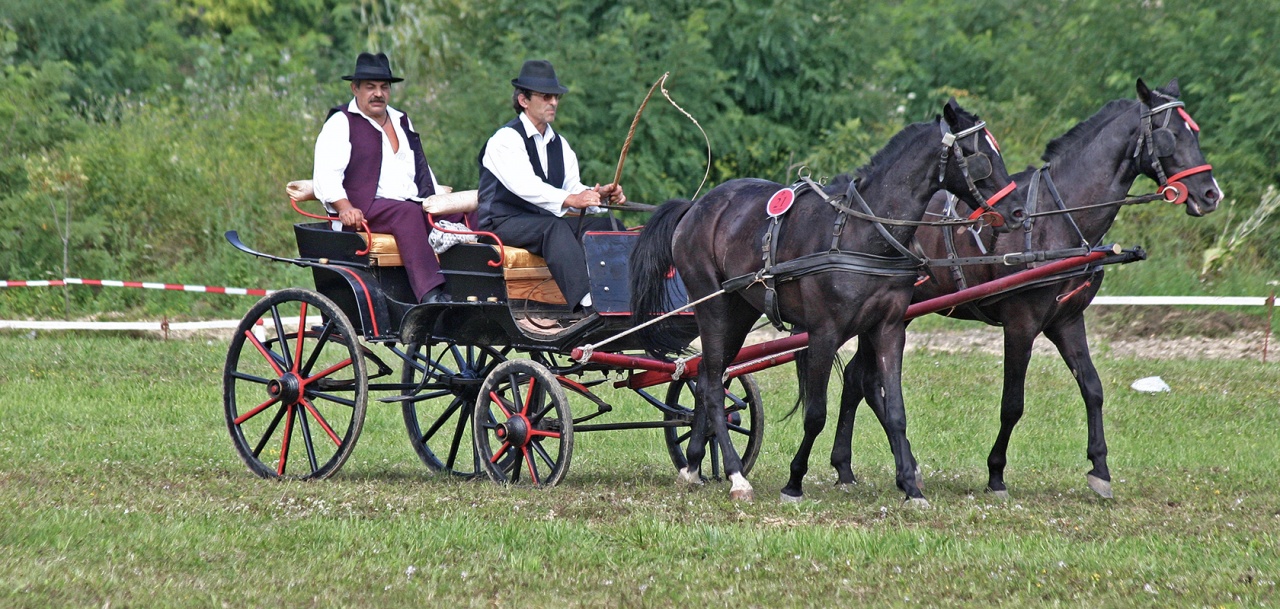
Active Holiday
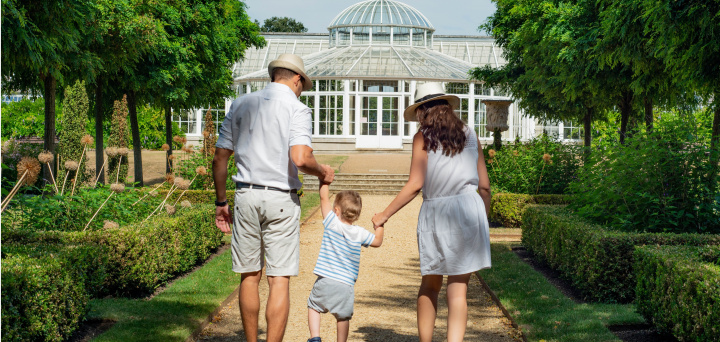
Family holidays
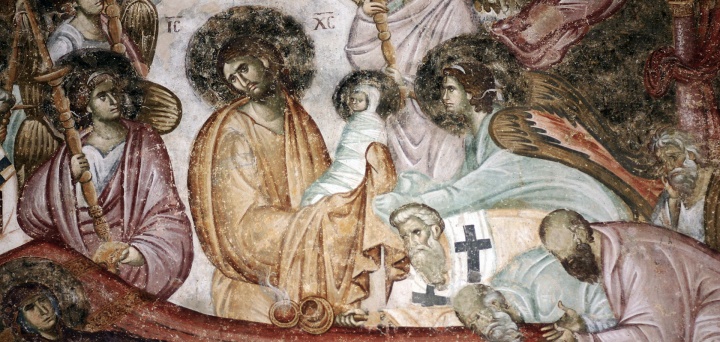
Thematic Routes
Must-see attractions in Serbia
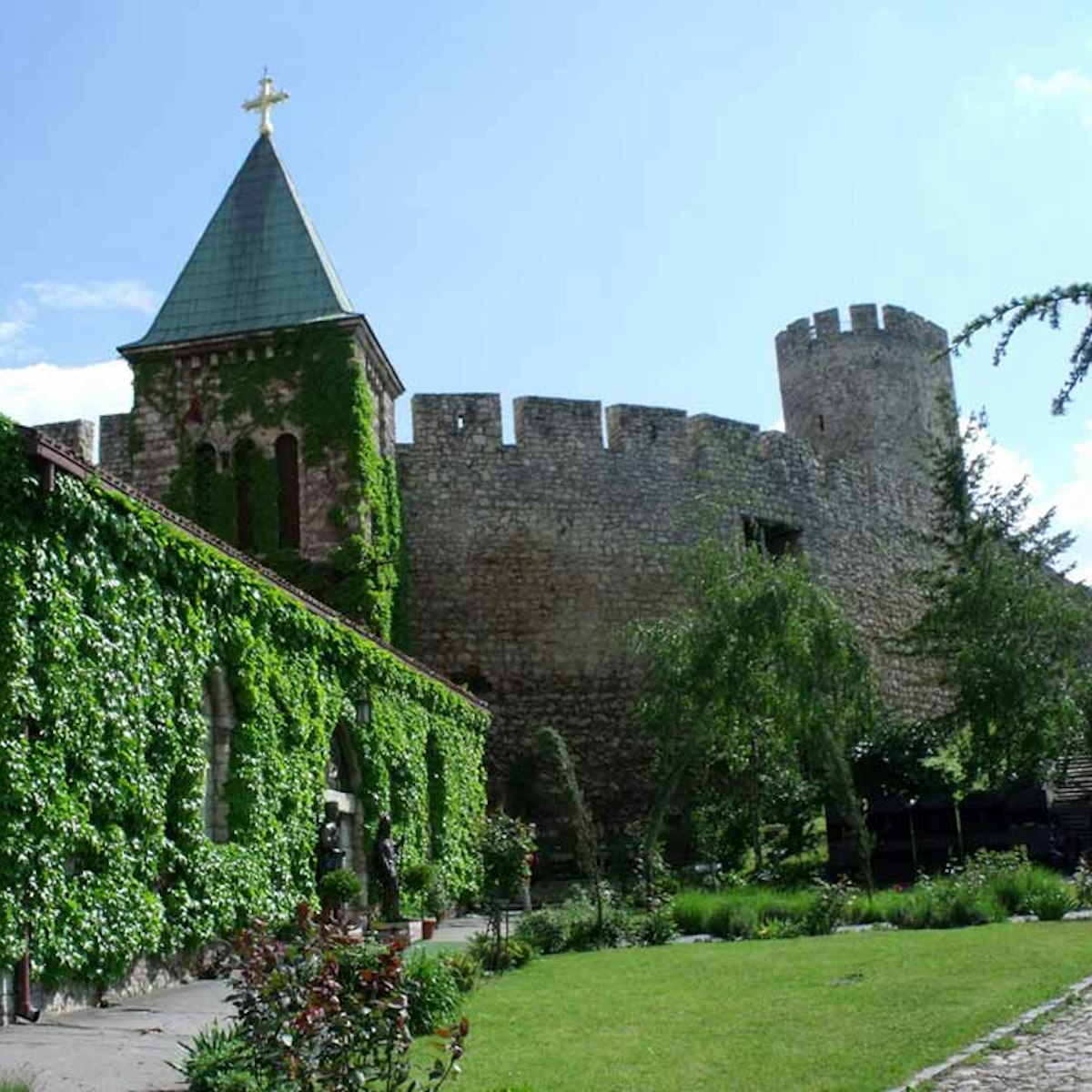
Belgrade Fortress
Some 115 battles have been fought over imposing, impressive Belgrade Fortress (aka Kalemegdan); the citadel was destroyed more than 40 times throughout…
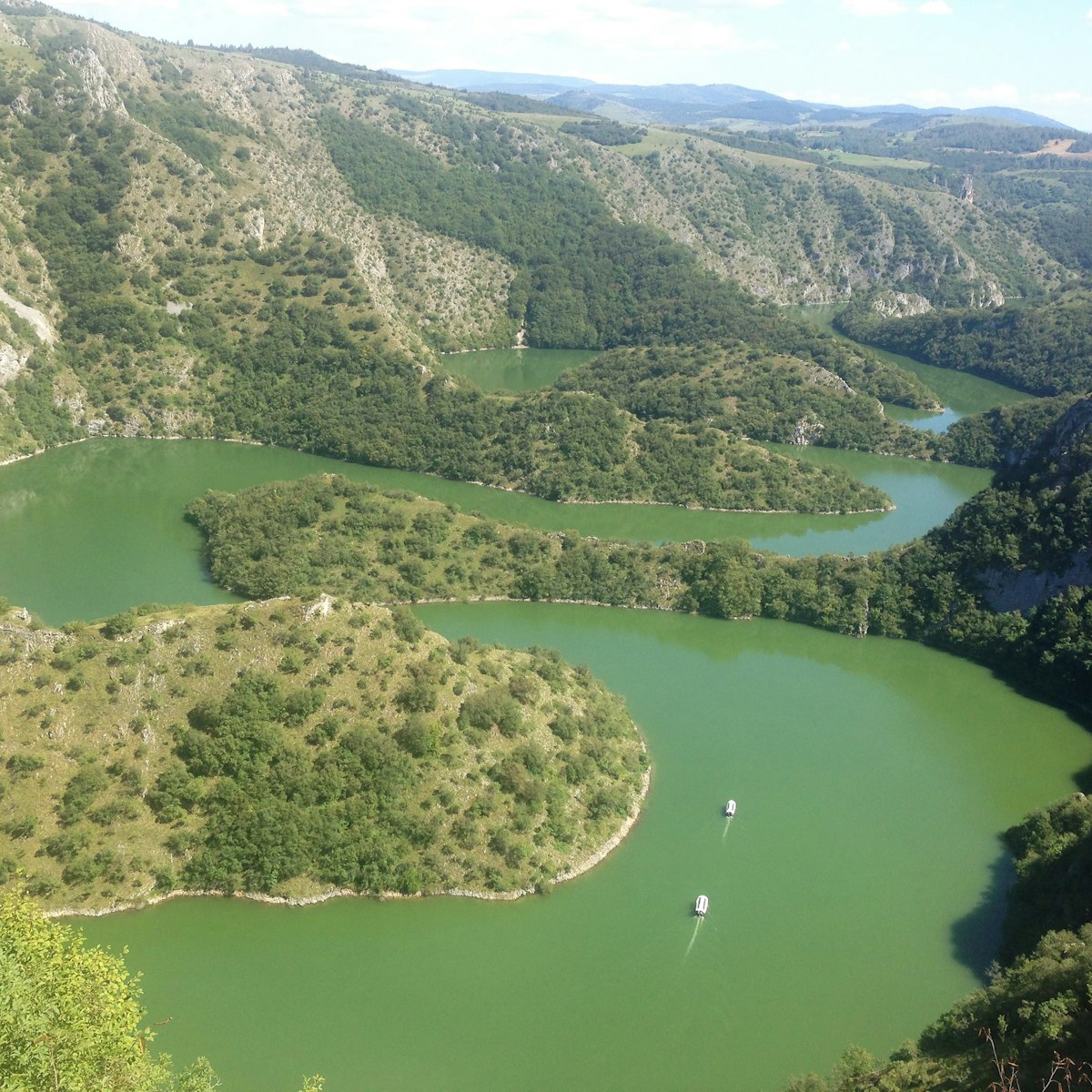
Uvac Canyon
The Uvac River's spectacular meanders are the highlight of the 75-sq-km Uvac nature reserve in southwestern Serbia. The incredibly green river snakes…
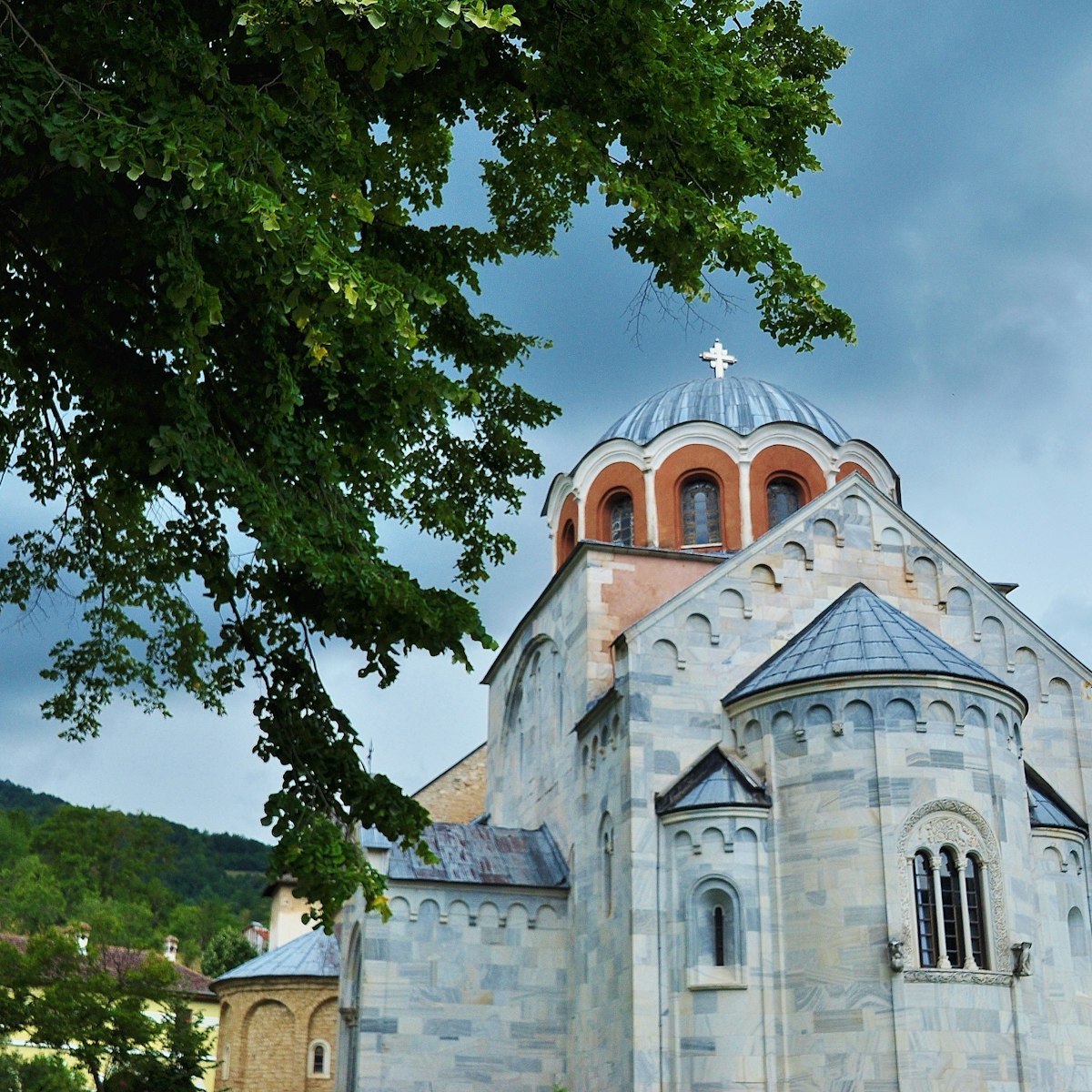
Studenica Monastery
One of Serbia's most sacred sites, Unesco-listed Studenica was established in 1196 by the founder of the Serbian empire (and future saint) Stefan Nemanja…
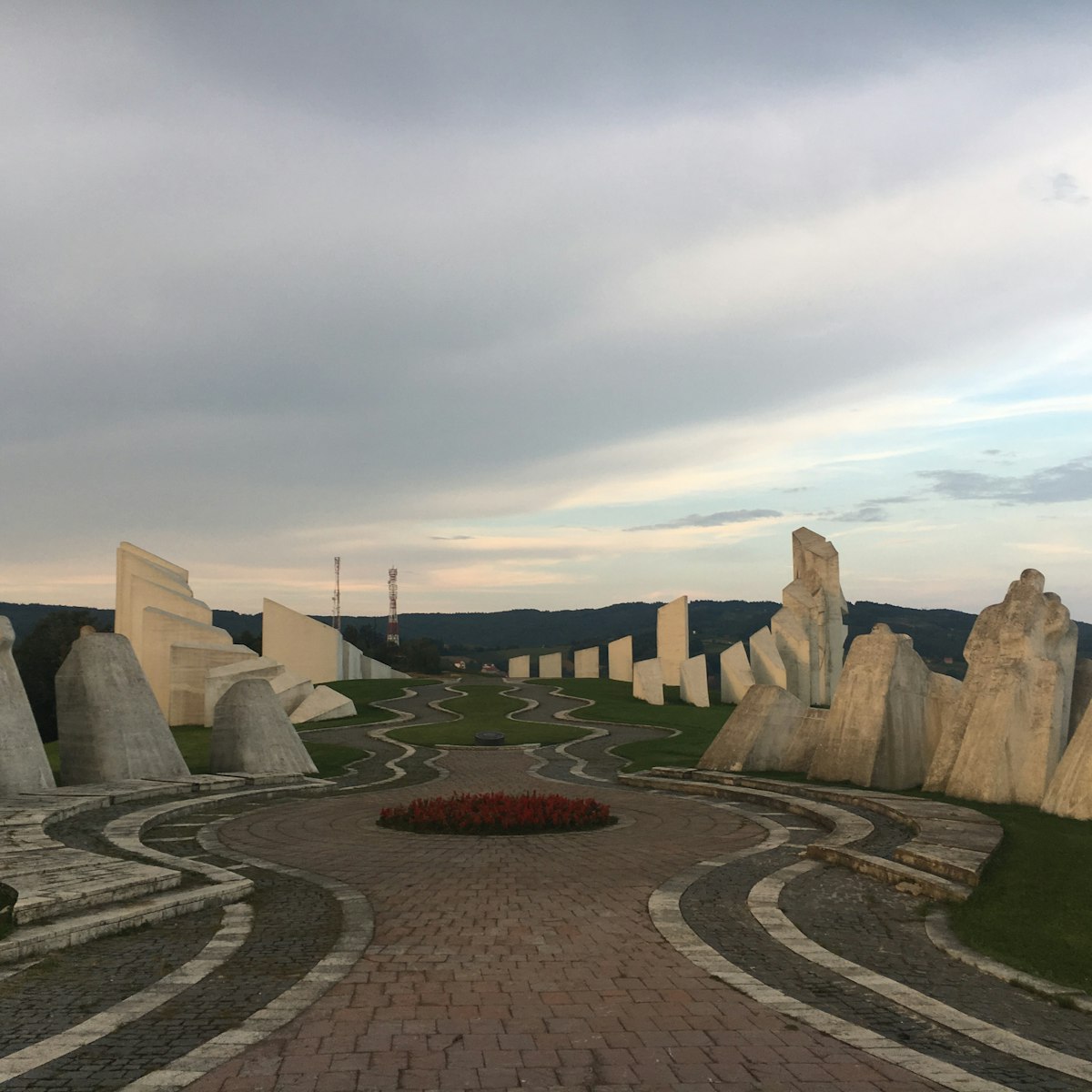
Kadinjača Memorial Complex
Serbia's most grandiose spomenik (Yugoslav-era memorial), Kadinjača commemorates the Partisans from the Workers' Battalion who perished on this spot…
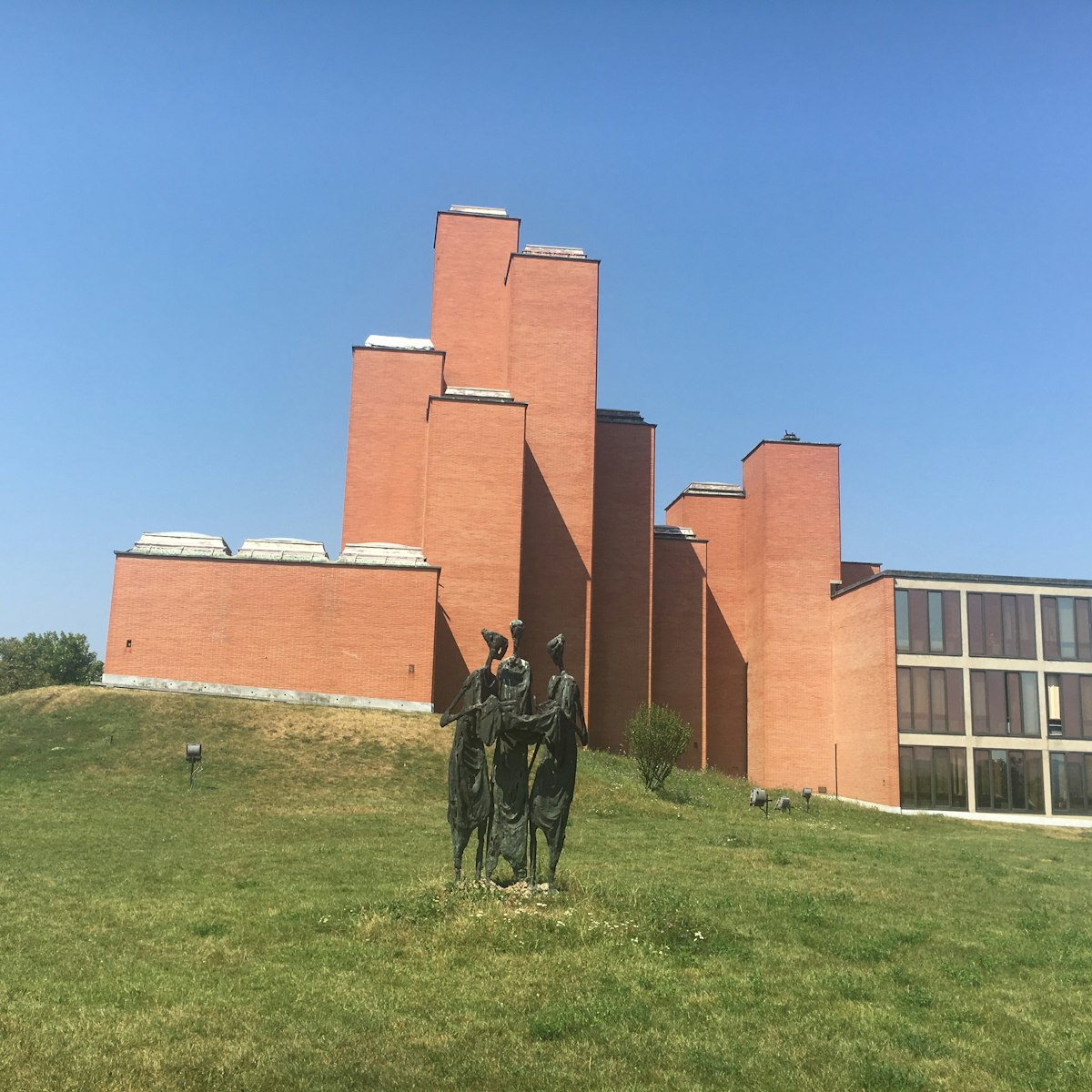
Memorial Museum '21st October'
Šumarice Memorial Park is home to a sombre museum that tells the harrowing story of the 1941 massacre of around 3000 Kragujevac civilians during the…
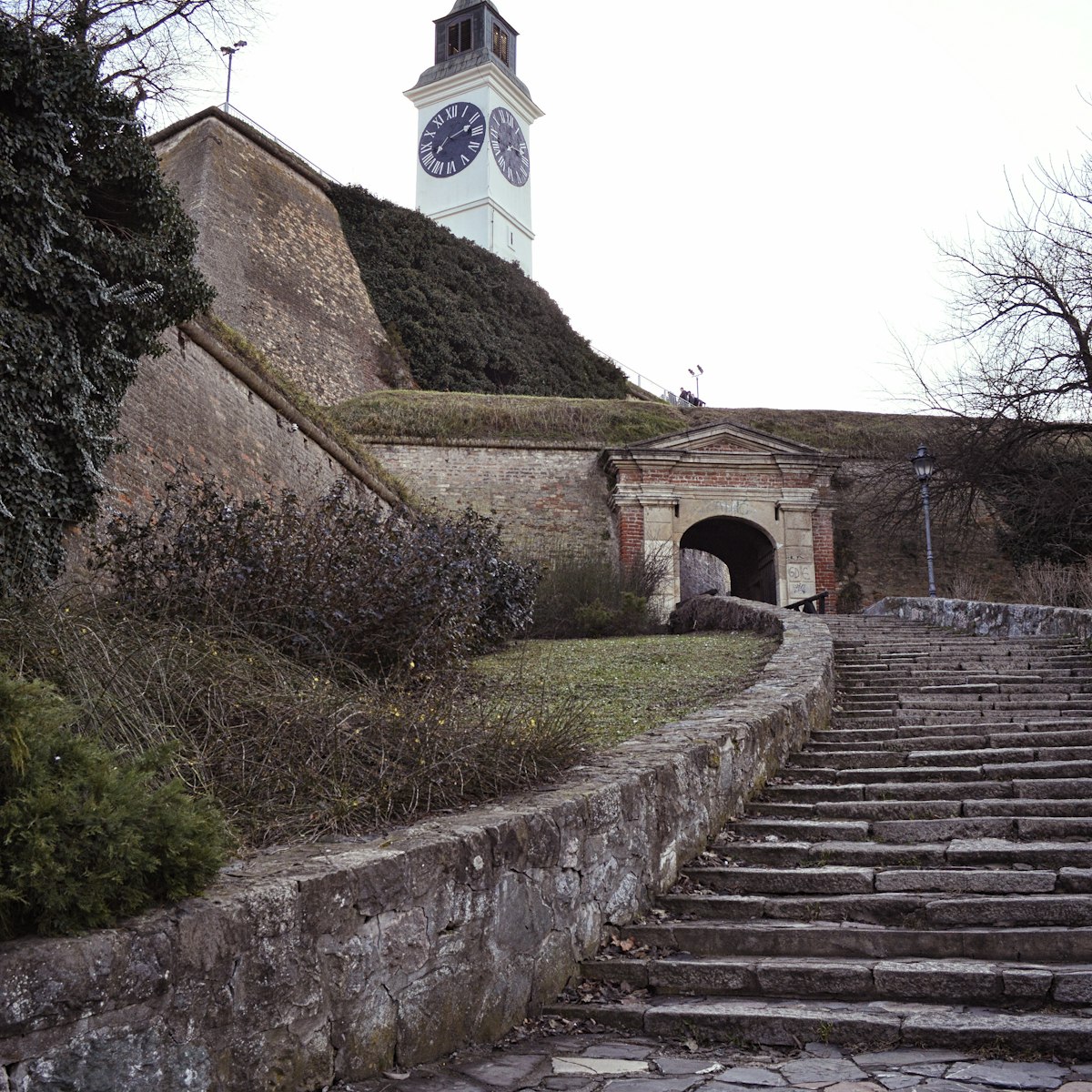
Petrovaradin Fortress
Towering over the river on a 40m-high volcanic slab, this mighty citadel, considered Europe's second-biggest fortress (and one of its best preserved), is…
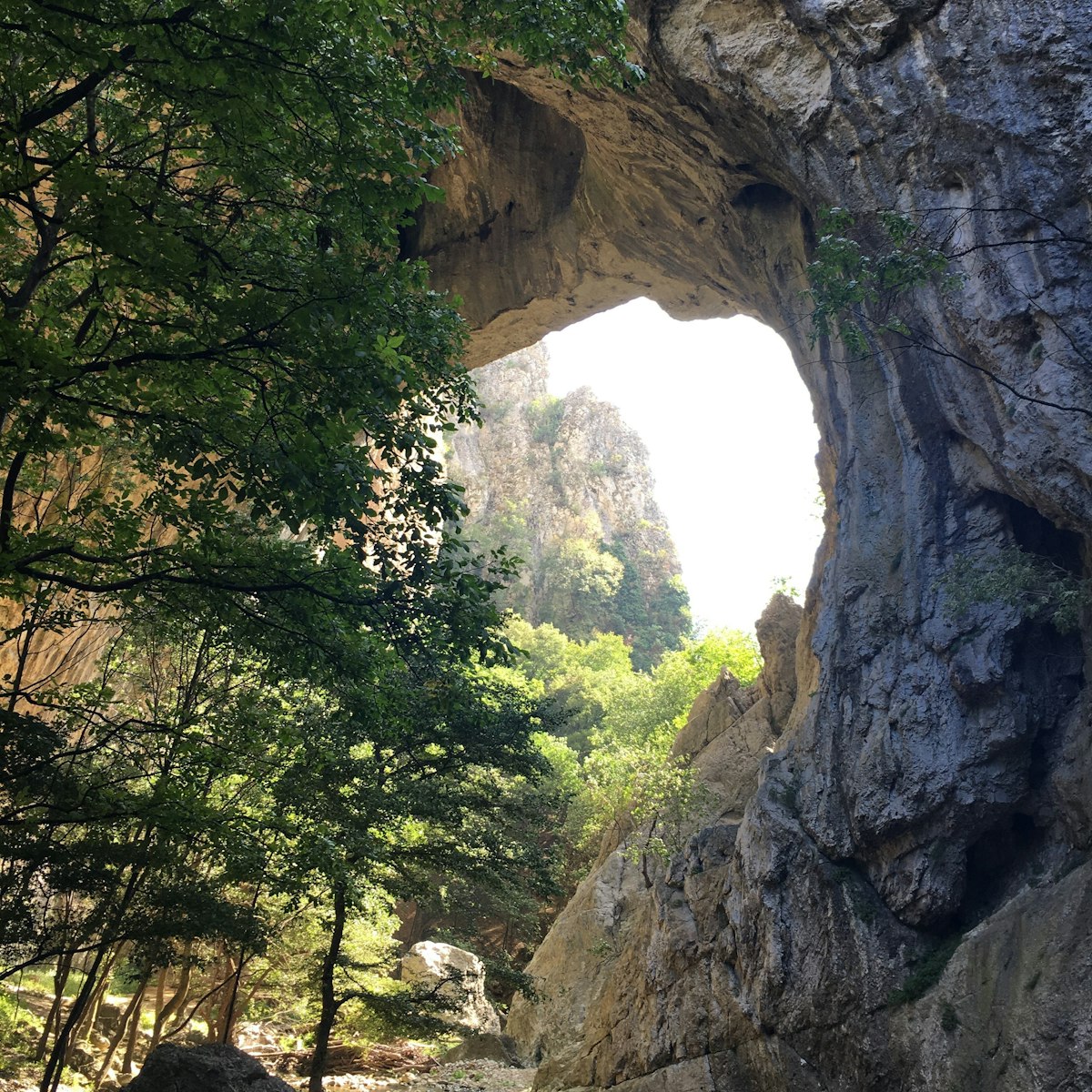
Vratna Gates
The remote Negotin region hides one of the country's more dramatic natural phenomena. Three gigantic stone arches – known as Small Gate (Mala kapija), Big…
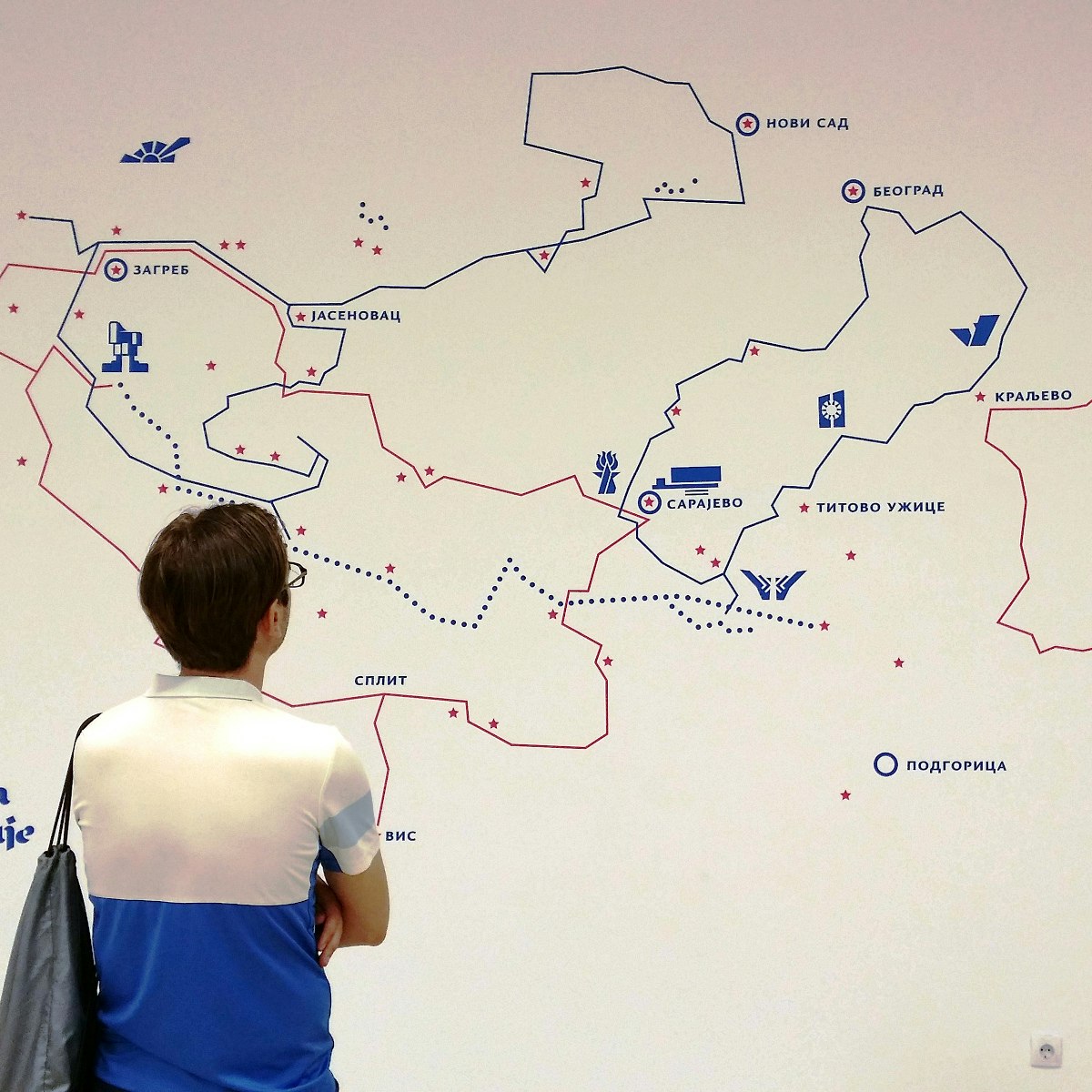
Museum of Yugoslavia
This must-visit museum houses an invaluable collection of more than 200,000 artefacts representing the fascinating, tumultuous history of Yugoslavia…
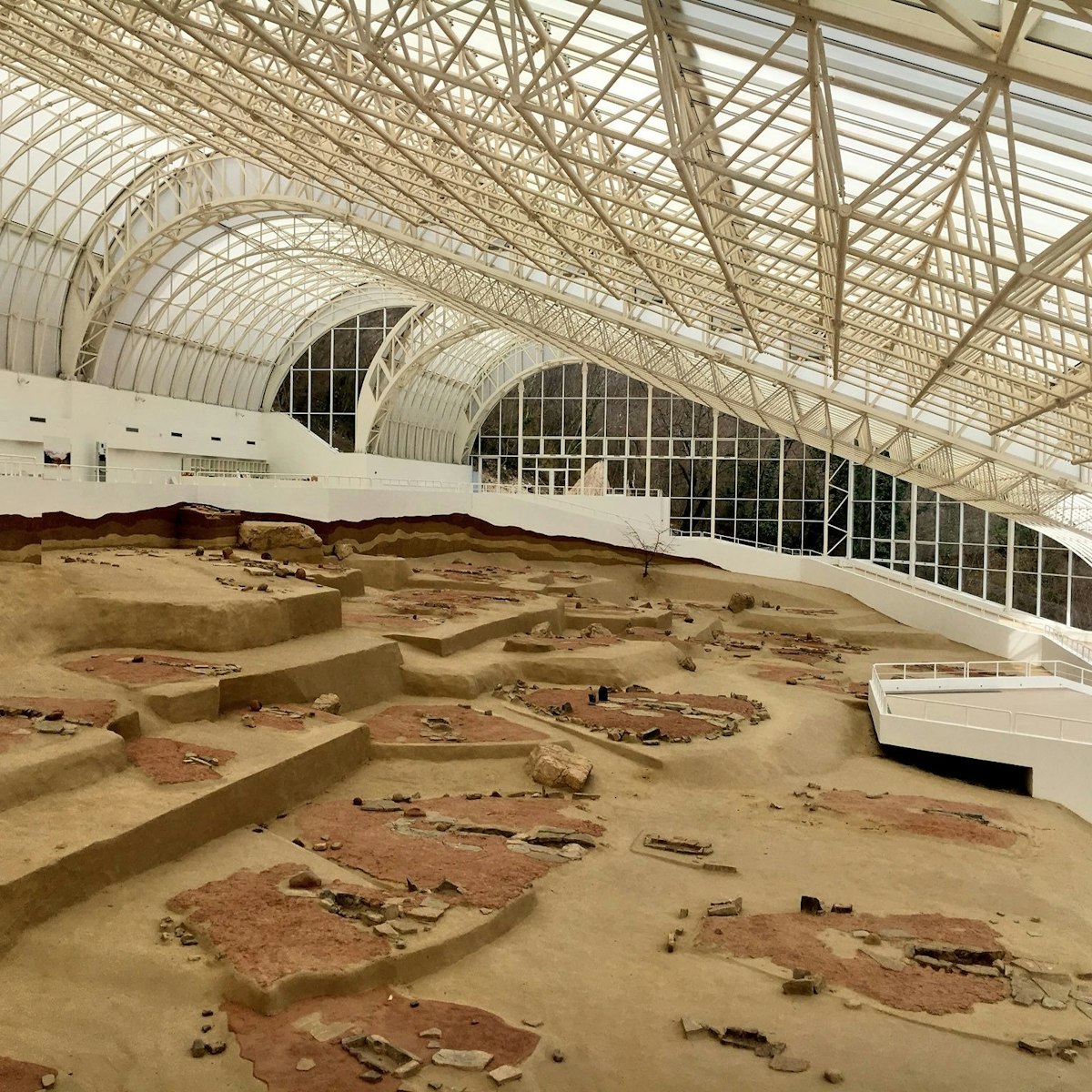
Lepenski Vir
What is now Đerdap National Park was once a major centre for Mesolithic- and Neolithic-era fishing communities, a past that has been wonderfully preserved…
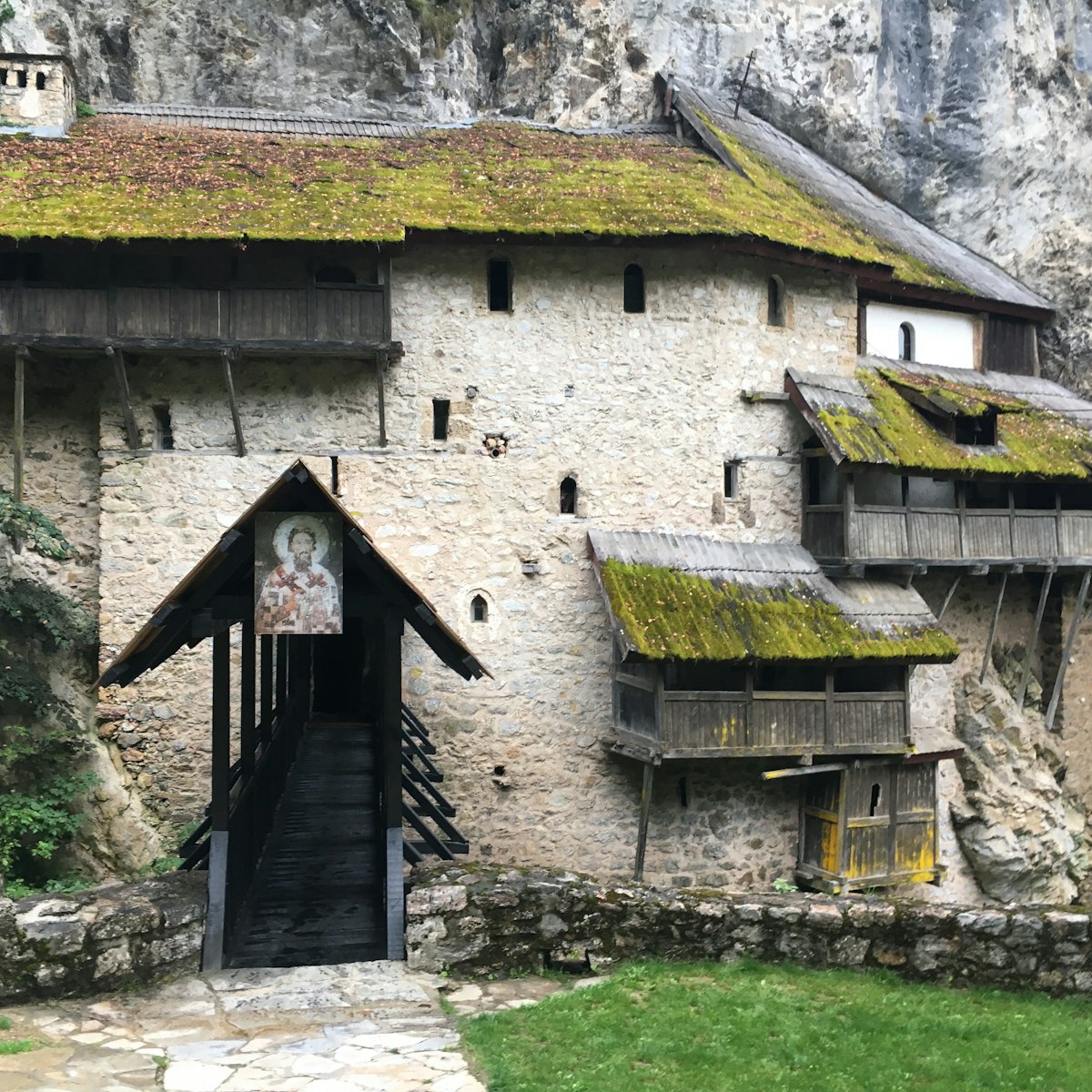
Crna Reka Monastery
Secluded 13th-century Crna Reka (meaning 'black river') has a unique setting among Serbian monasteries: it's built into caves, seemingly hanging off a…
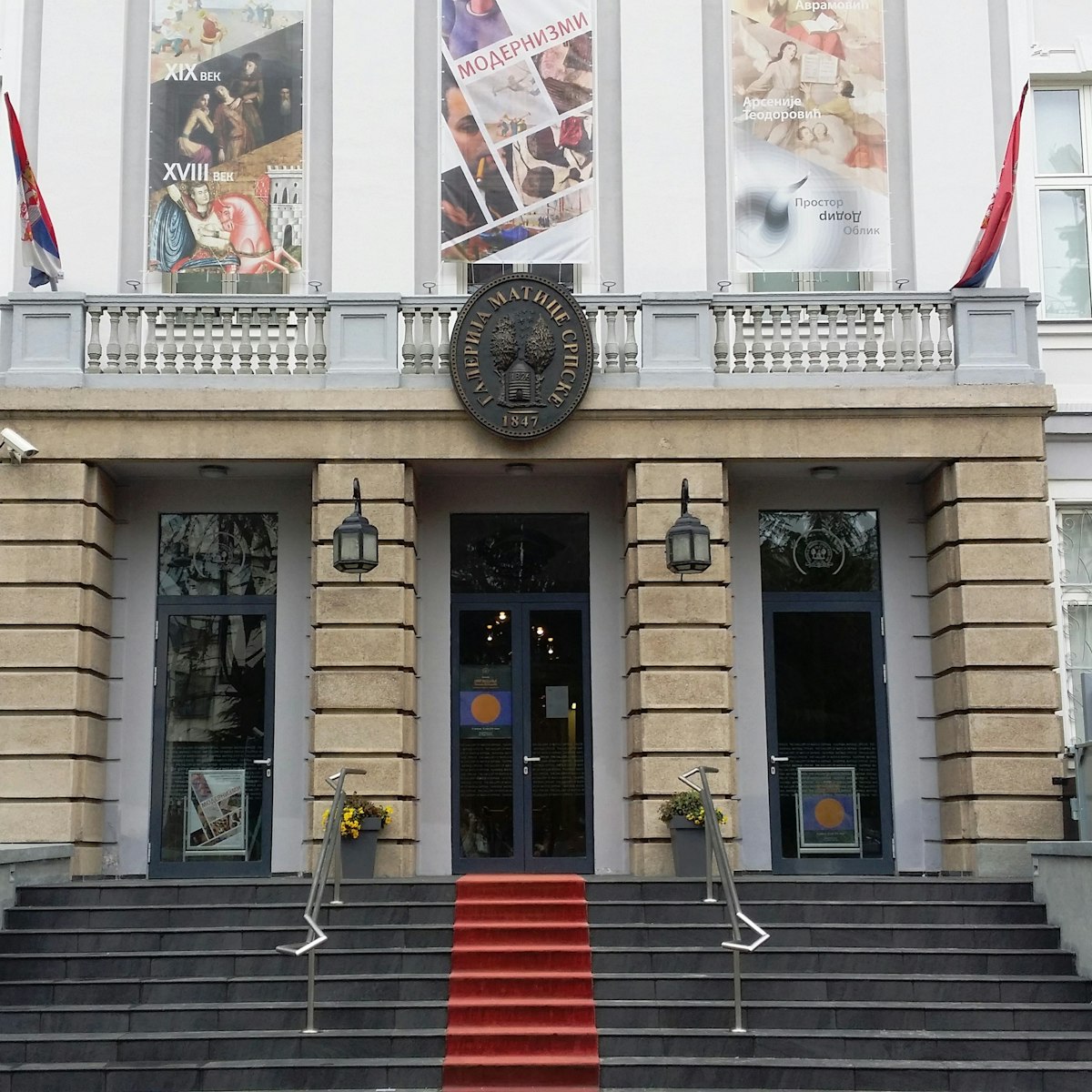
Gallery of Matica Srpska
First established in Pest (part of modern Budapest) in 1826 and moved to Novi Sad in 1864, this is one of Serbia's most important and long-standing…

Looming over Belgrade and topped with the tallest tower in the Balkans (204.5m), Mt Avala is a city landmark that makes for a pleasant break from the…

Museum of Contemporary Art
One of Belgrade's top cultural sights, this recently renovated museum is a treasure trove of 20th-century art from the ex-Yugoslav cultural space. The…

Marshal Tito's Mausoleum
A visit to Tito's mausoleum is obligatory. The big man rests in an aptly gigantic tomb in peaceful surrounds. Also on display are thousands of elaborate…
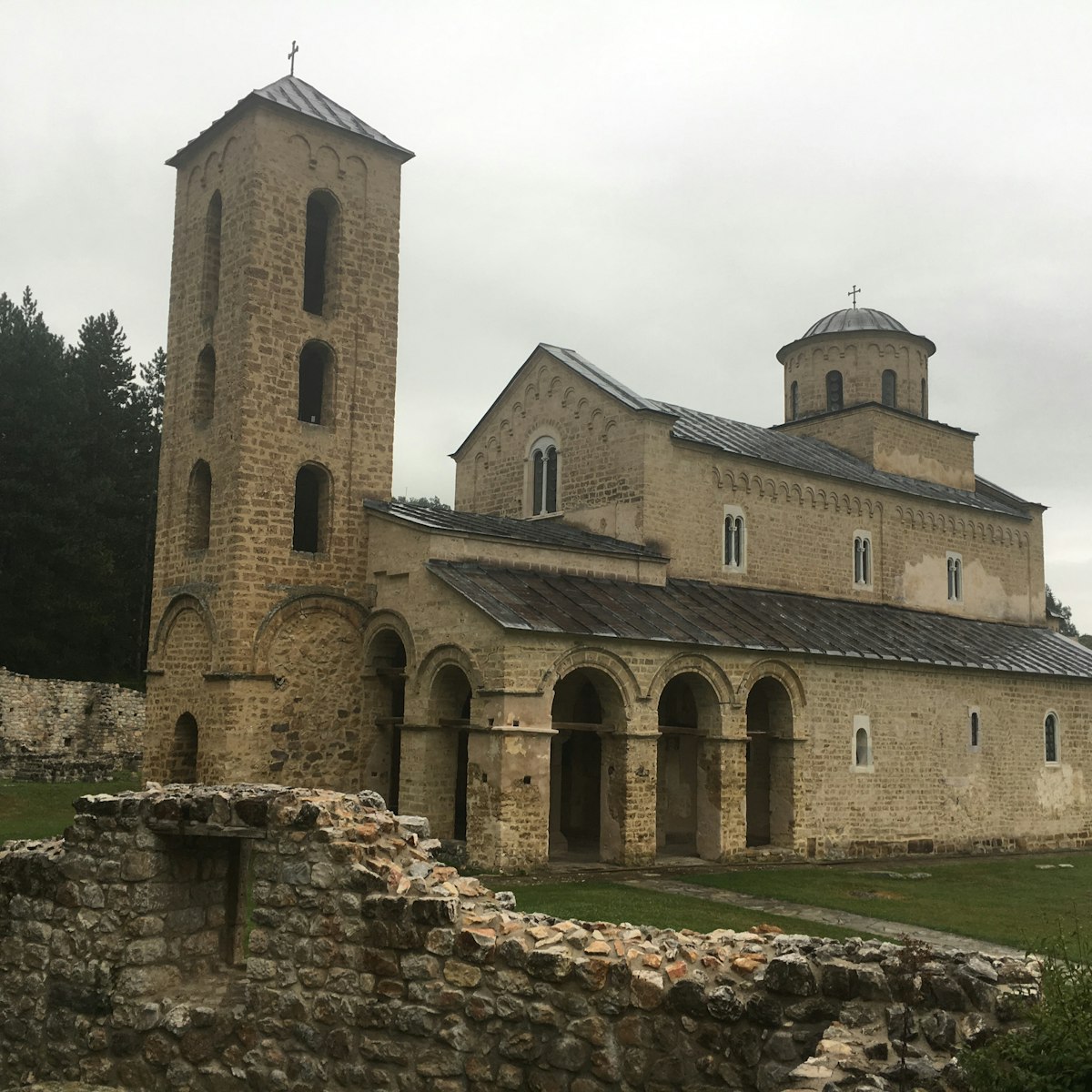
Sopoćani Monastery
Built around 1265 by King Stefan Uroš I (who is buried here), this Unesco-listed monastery was destroyed by the Turks in 1689 and restored in 1926…
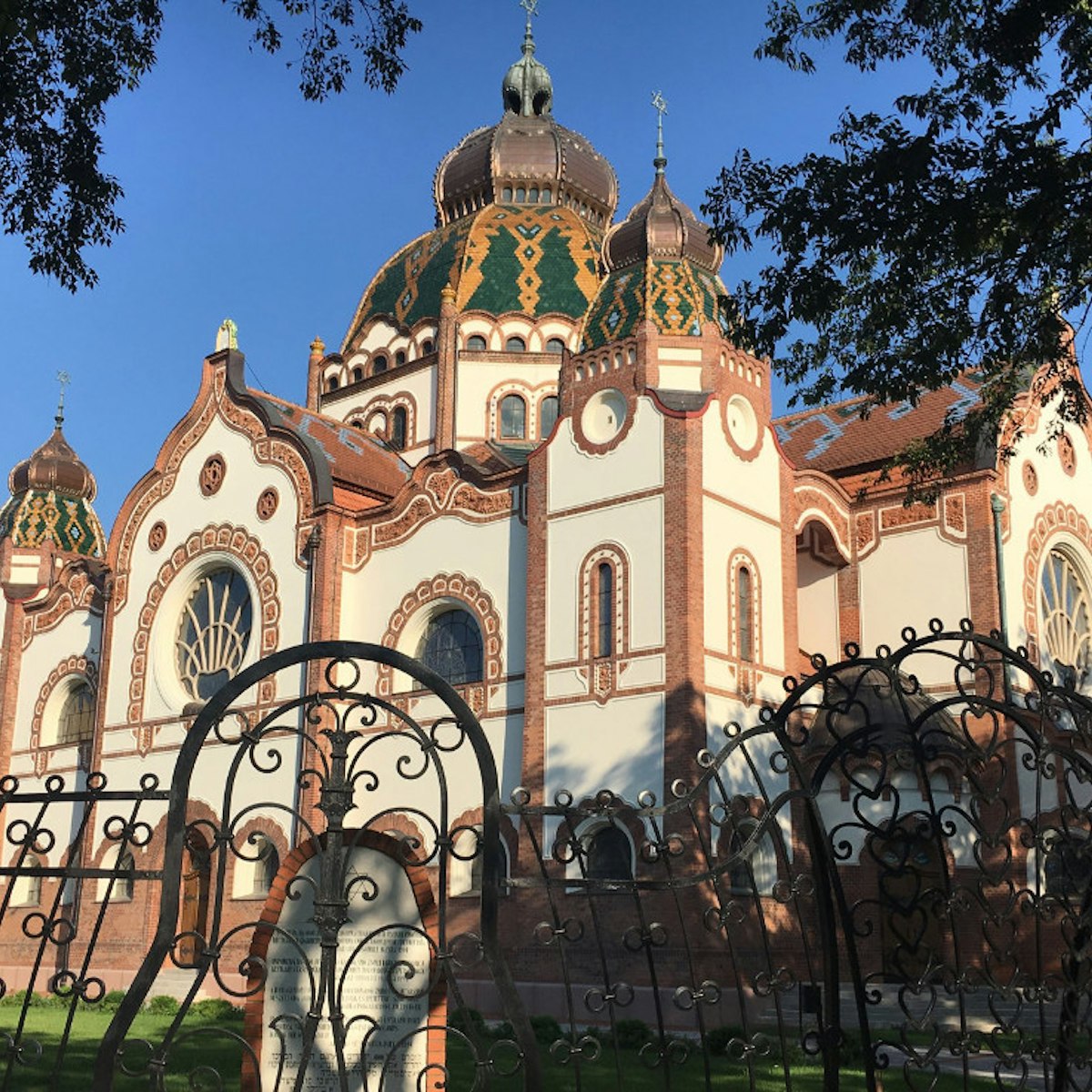
Subotica's first art nouveau building is the splendid 1902 synagogue designed by Marcell Komor and Deszö Jakab. Its stylised decorations in the form of…

Orthodox Cathedral
Second only in size to Belgrade's St Sava Temple, this huge Orthodox cathedral, completely restored after being destroyed in a fire in 2001, was…
Museum of Srem
The regional museum in the town of Sremska Mitrovica has a rich collection spanning prehistoric, Roman and medieval periods. Its undisputed highlight are…
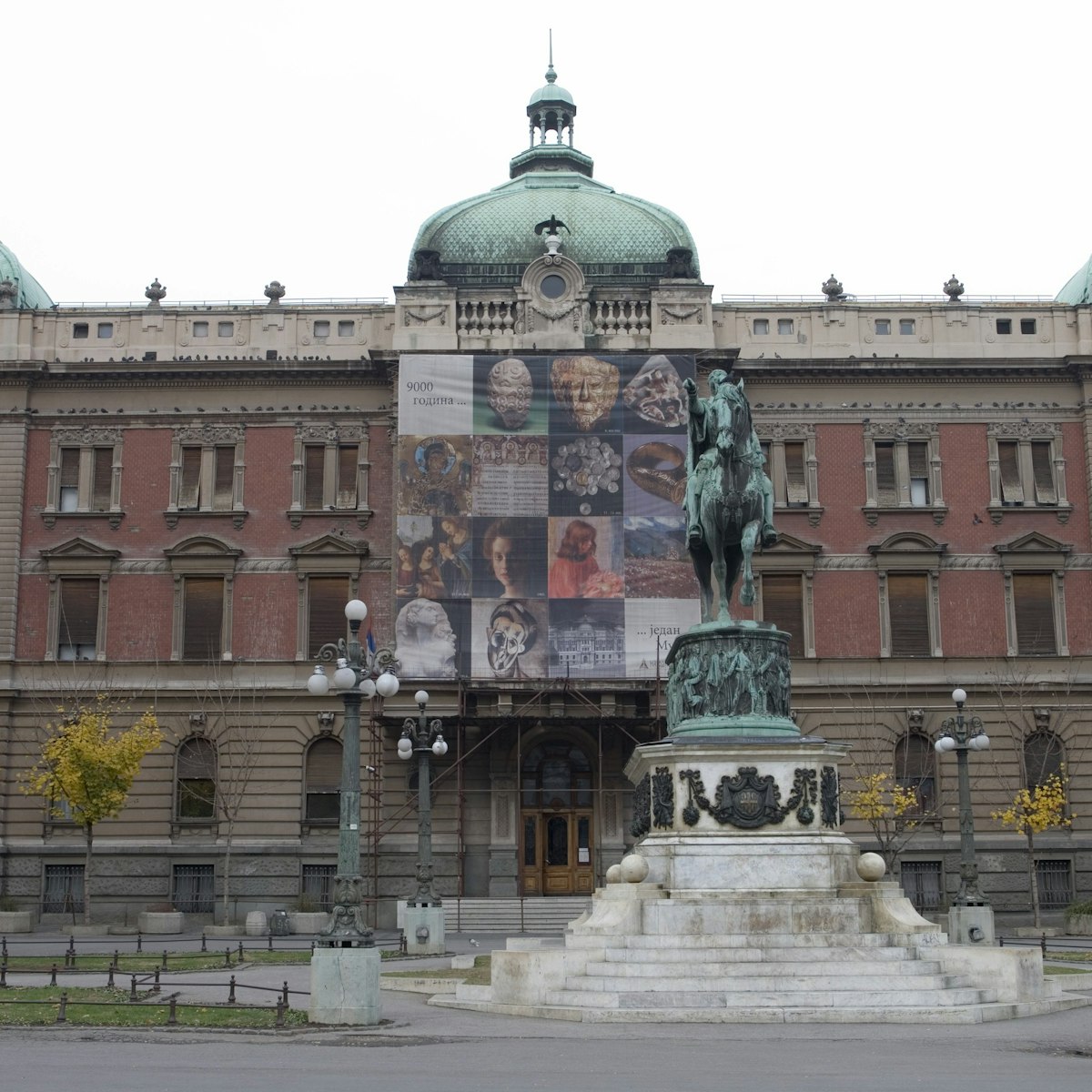
National Museum
Lack of funding for renovations kept Serbia's National Museum mostly shuttered for 15 years, but its much ballyhooed 2018 reopening has been a great…
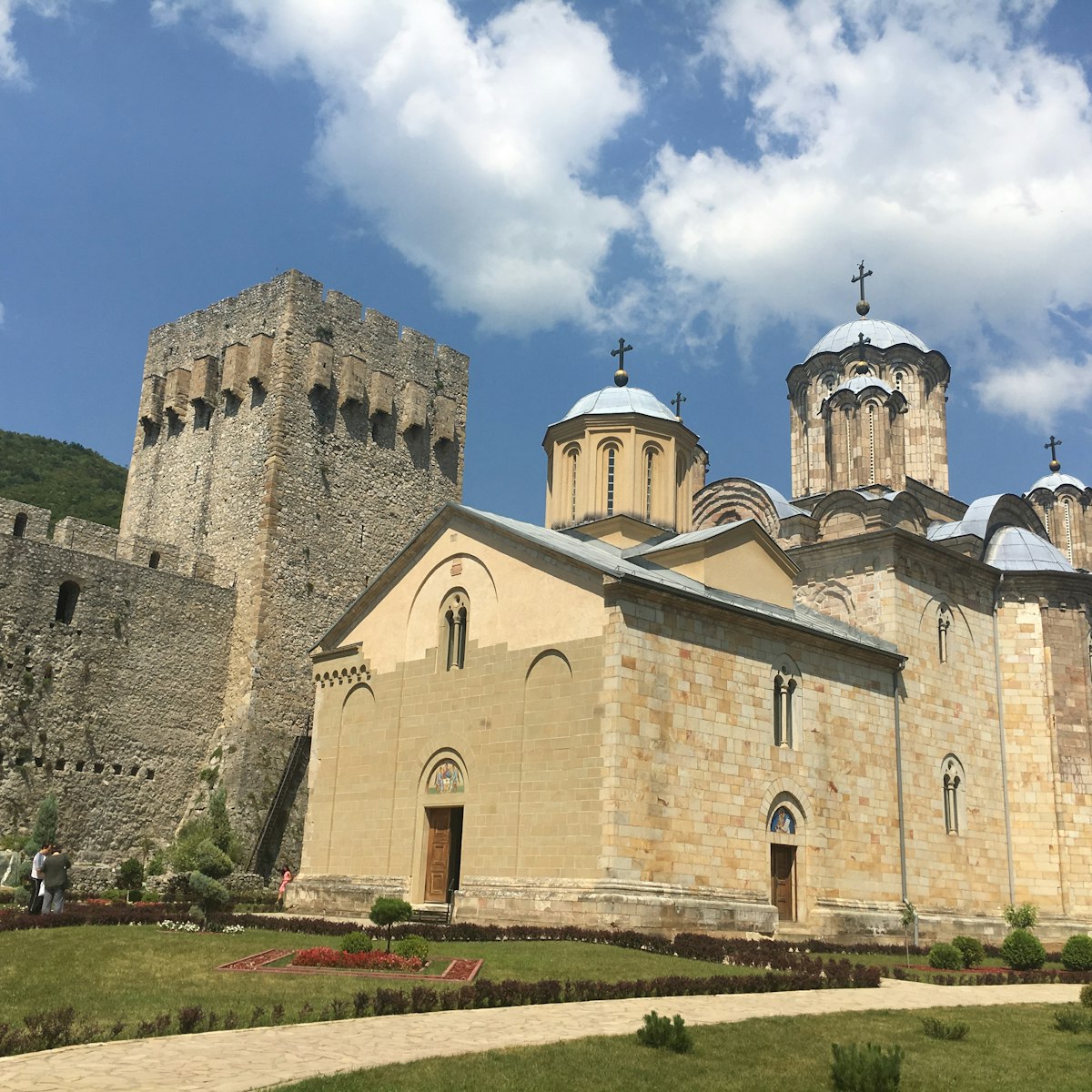
Manasija Monastery
Hemmed in by mammoth walls with 11 towers, Manasija (1418) was a fortified hideout for artists and writers fleeing the Turkish invasion. Many consider its…
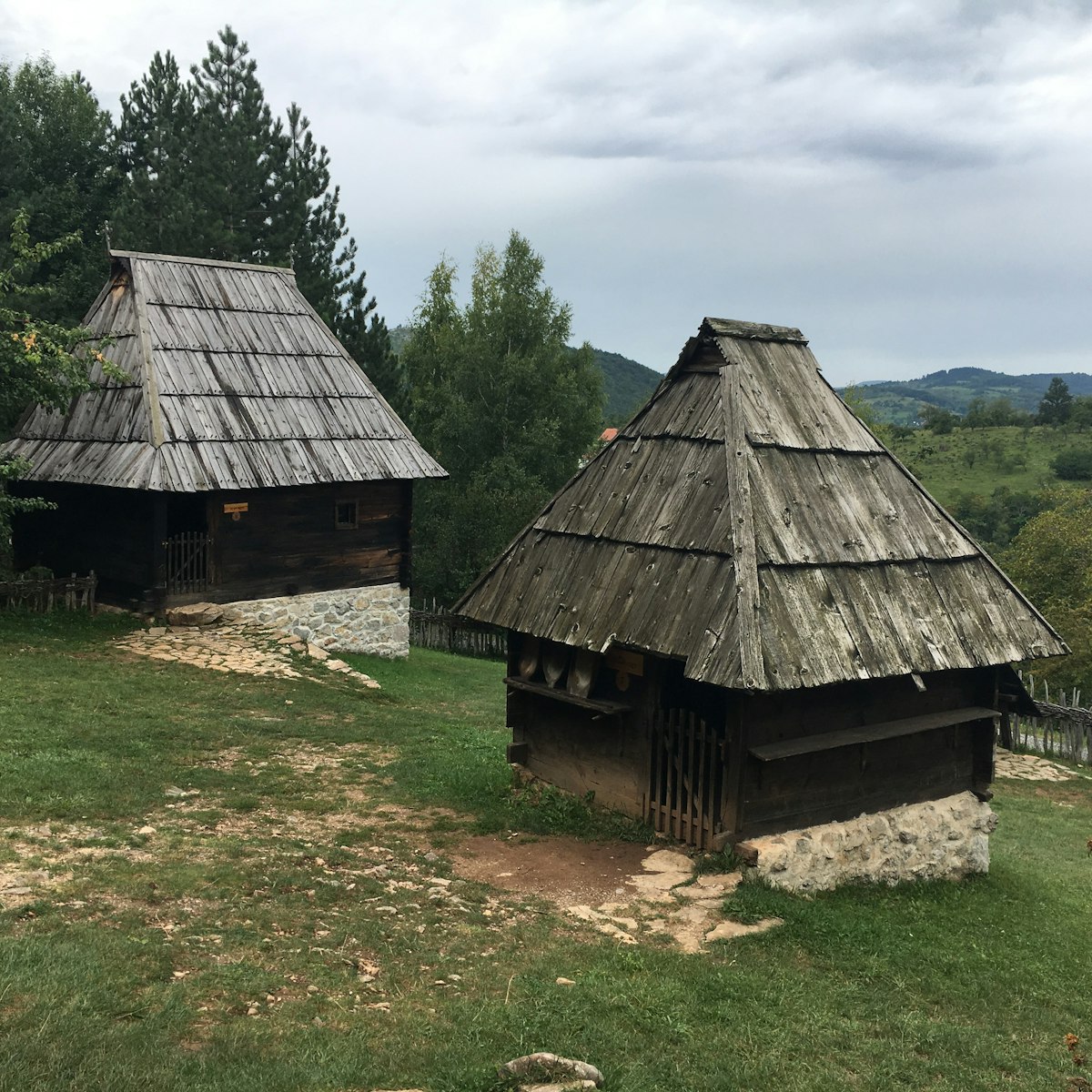
Sirogojno Open-Air Museum
Tumble back in time to 19th-century Serbia at the open-air museum in the village of Sirogojno near Zlatibor. High-roofed, fully furnished wooden houses…
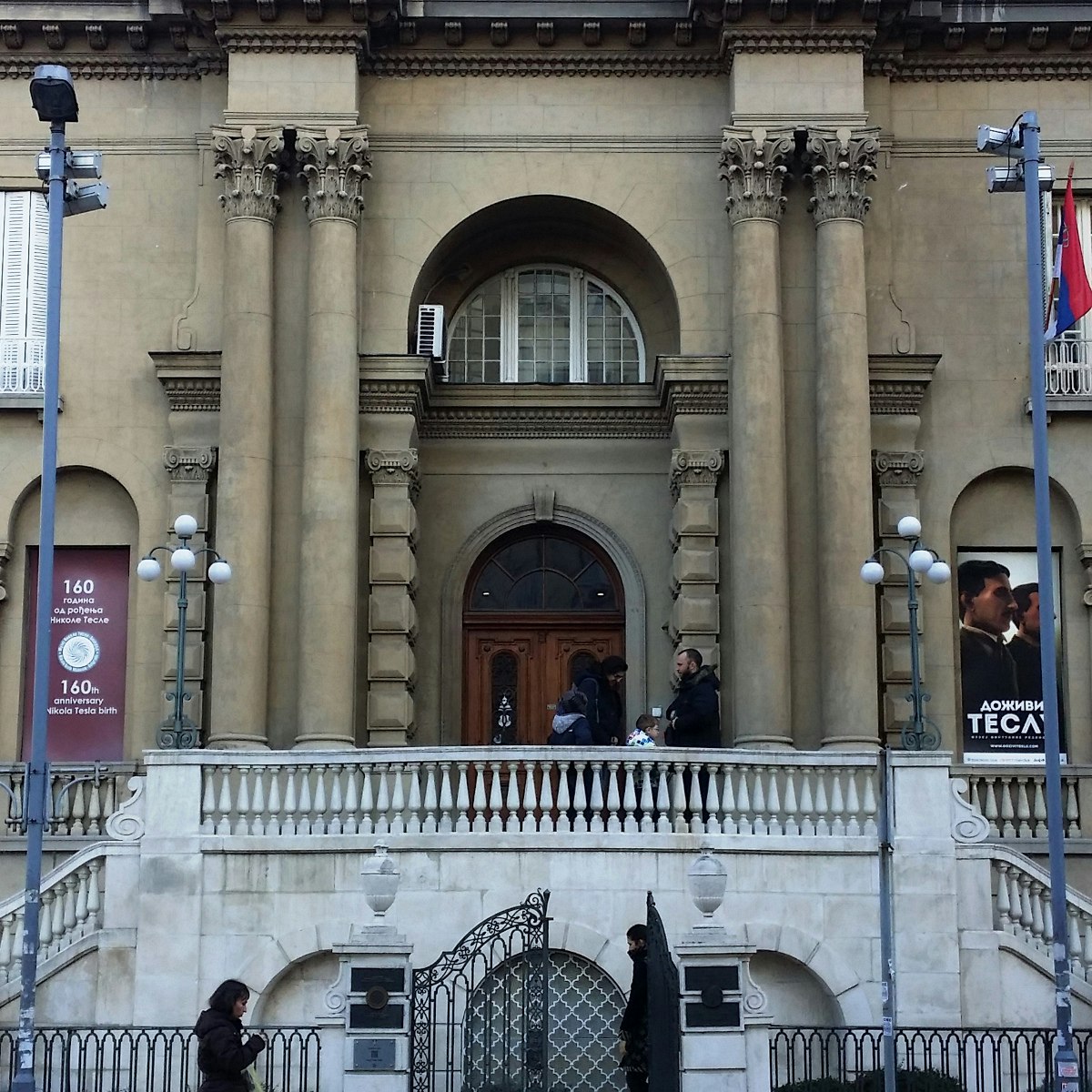
Nikola Tesla Museum
Meet the man on the 100RSD note at one of Belgrade's best museums, where you can release your inner nerd with some wondrously sci-fi-ish interactive…
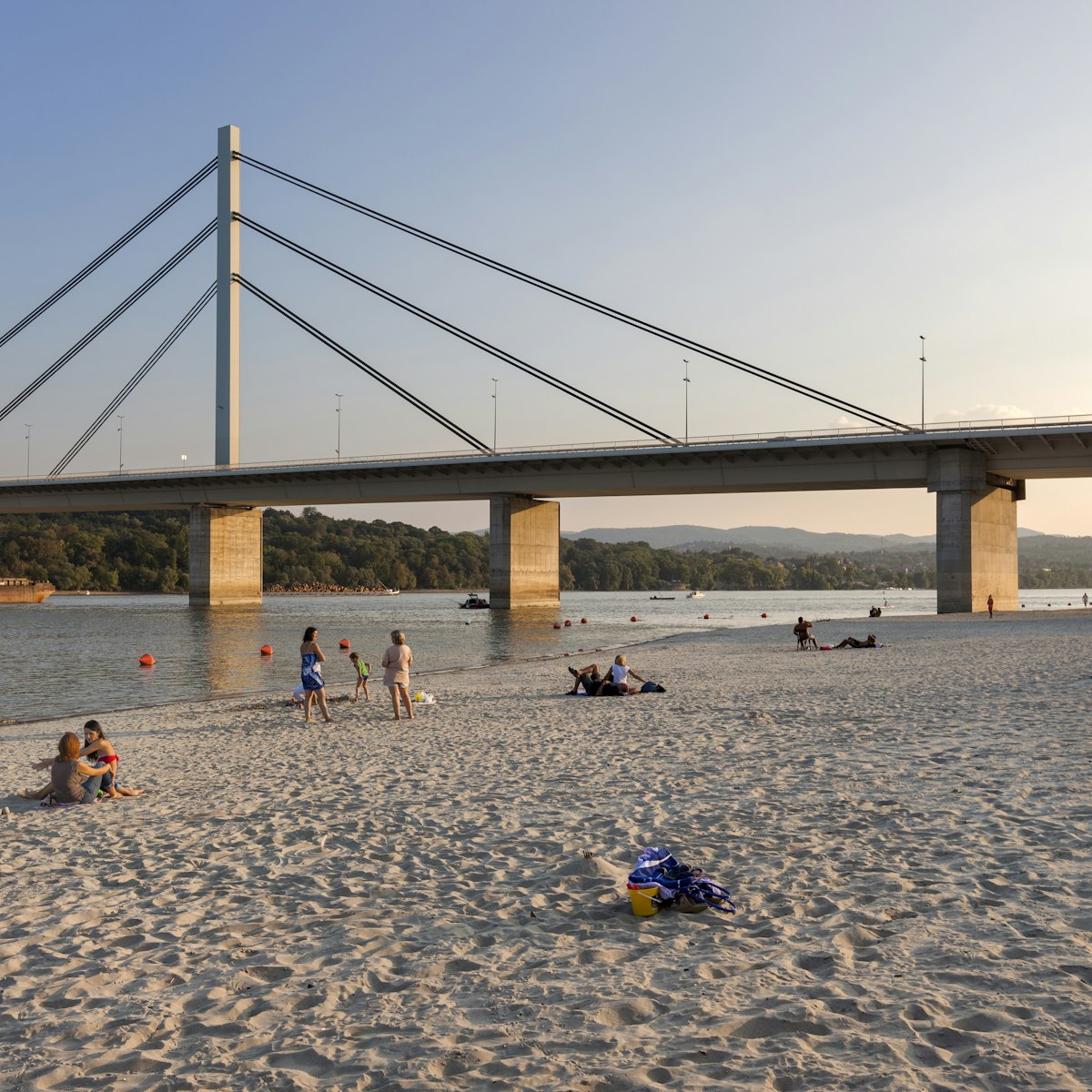
One of Europe's best by-the-Danube beaches, this 700m-long stretch morphs into a city of its own come summertime, with bars, stalls and all manner of…
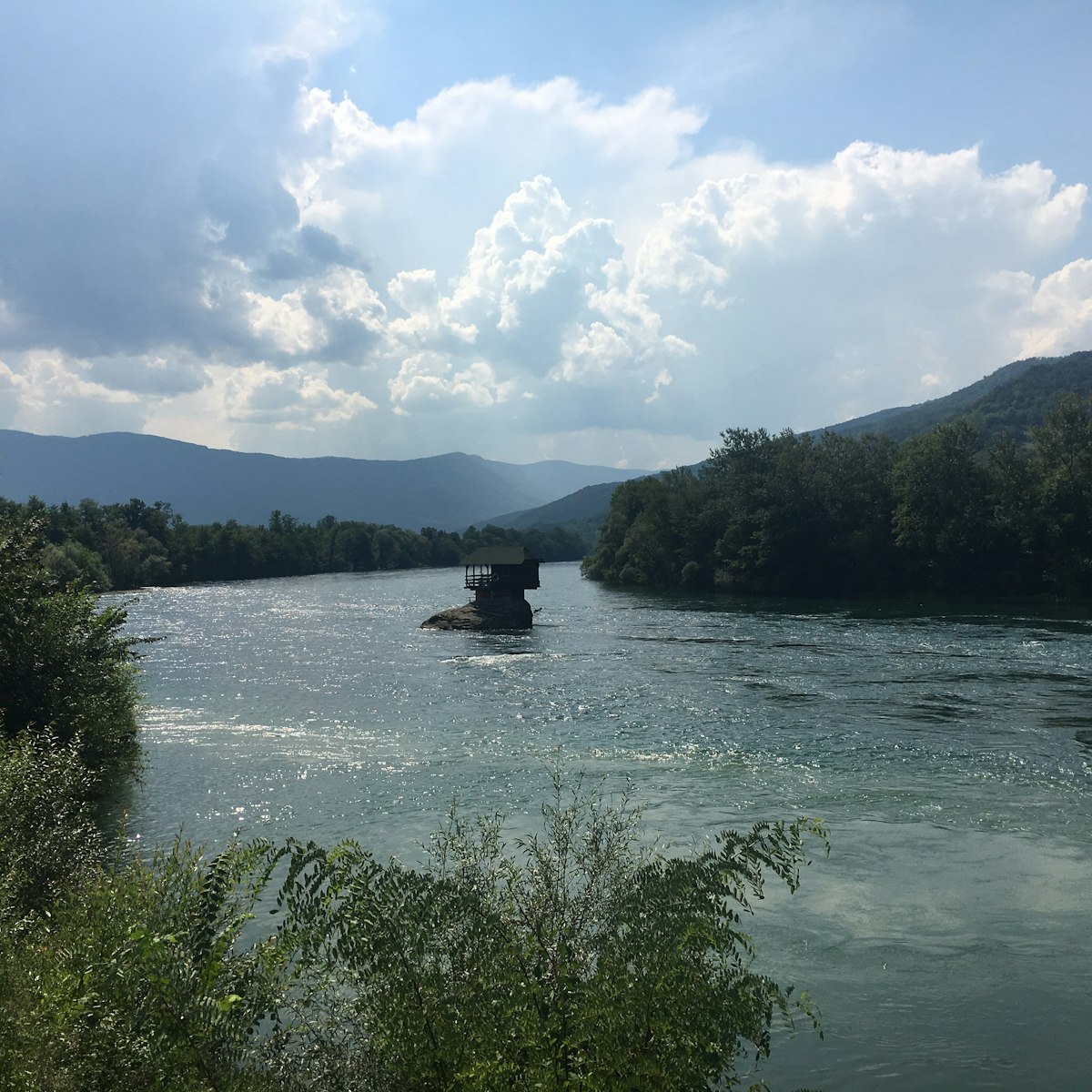
Little House on the Drina
Tara National Park
Many people harbour dreams of building a log cabin in the middle of a forest, but how about one in the middle of a river? Almost 50 years ago, a group of…
Maglič Fortress
A forlorn guardian of the Ibar valley (20km south of Kraljevo), Maglič is one of Serbia's best-preserved medieval fortifications. Built in the 13th…
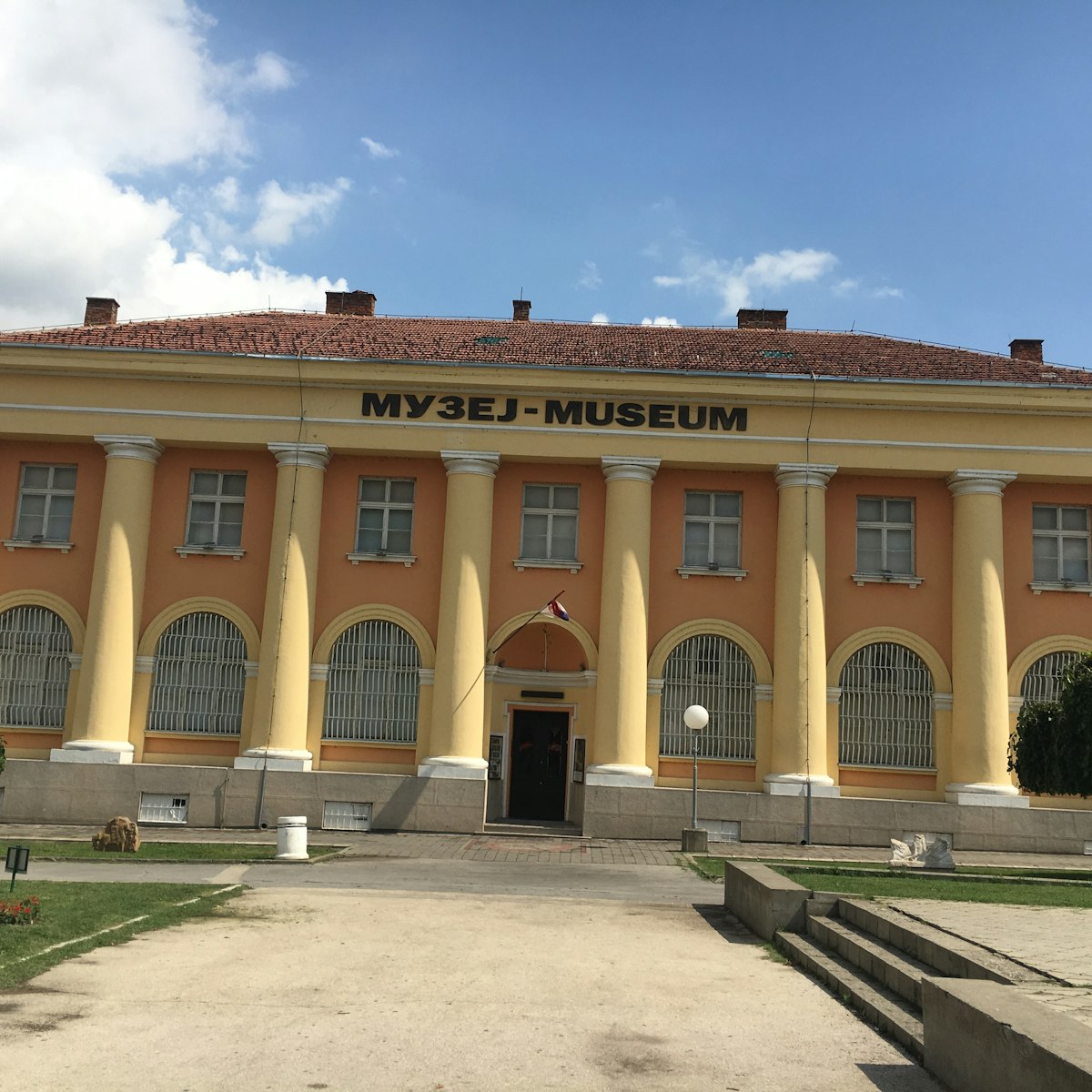
National Museum Zaječar
Zaječar's National Museum is where you can admire numerous findings from the Felix Romuliana archaeological site. They include the marble busts of…
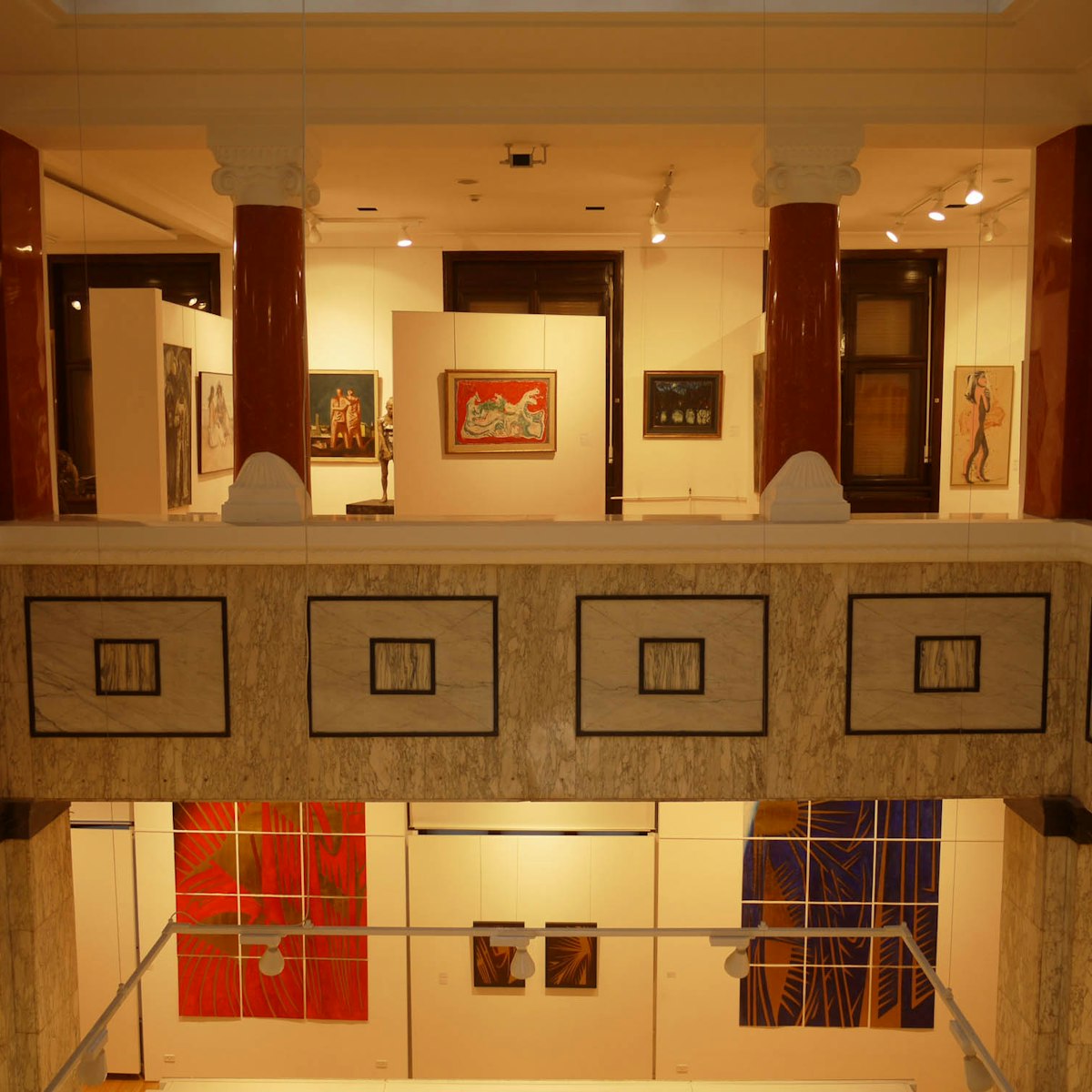
Zepter Museum
This impressive collection of works by contemporary Serbian artists became Serbia’s first private museum in 2010, but remains somewhat hidden even though…
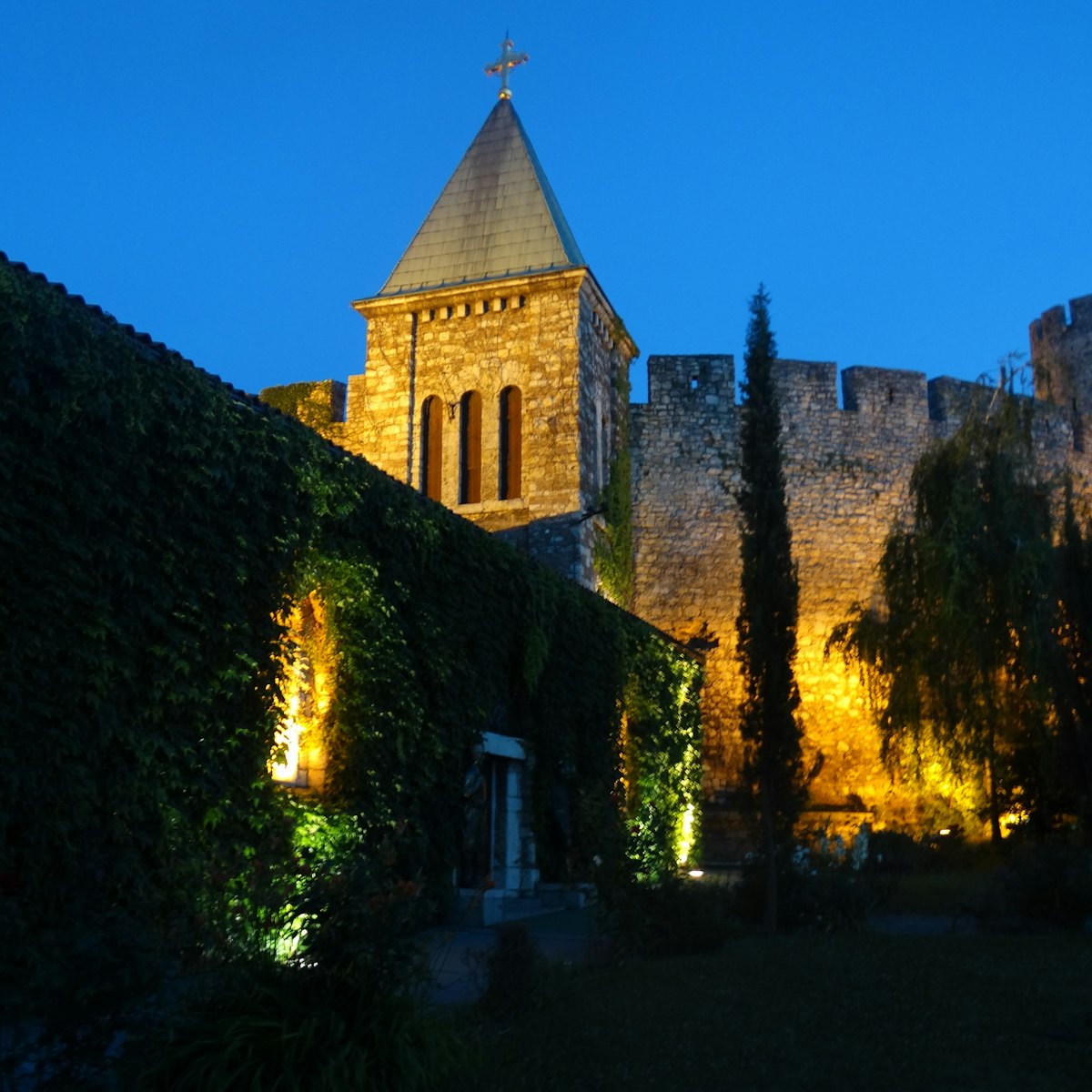
Ružica Church
The ivy-swathed Ružica Church looks innocuous from the outside; inside, you'll find chandeliers made by WWI Serbian soldiers from spent bullet casings,…
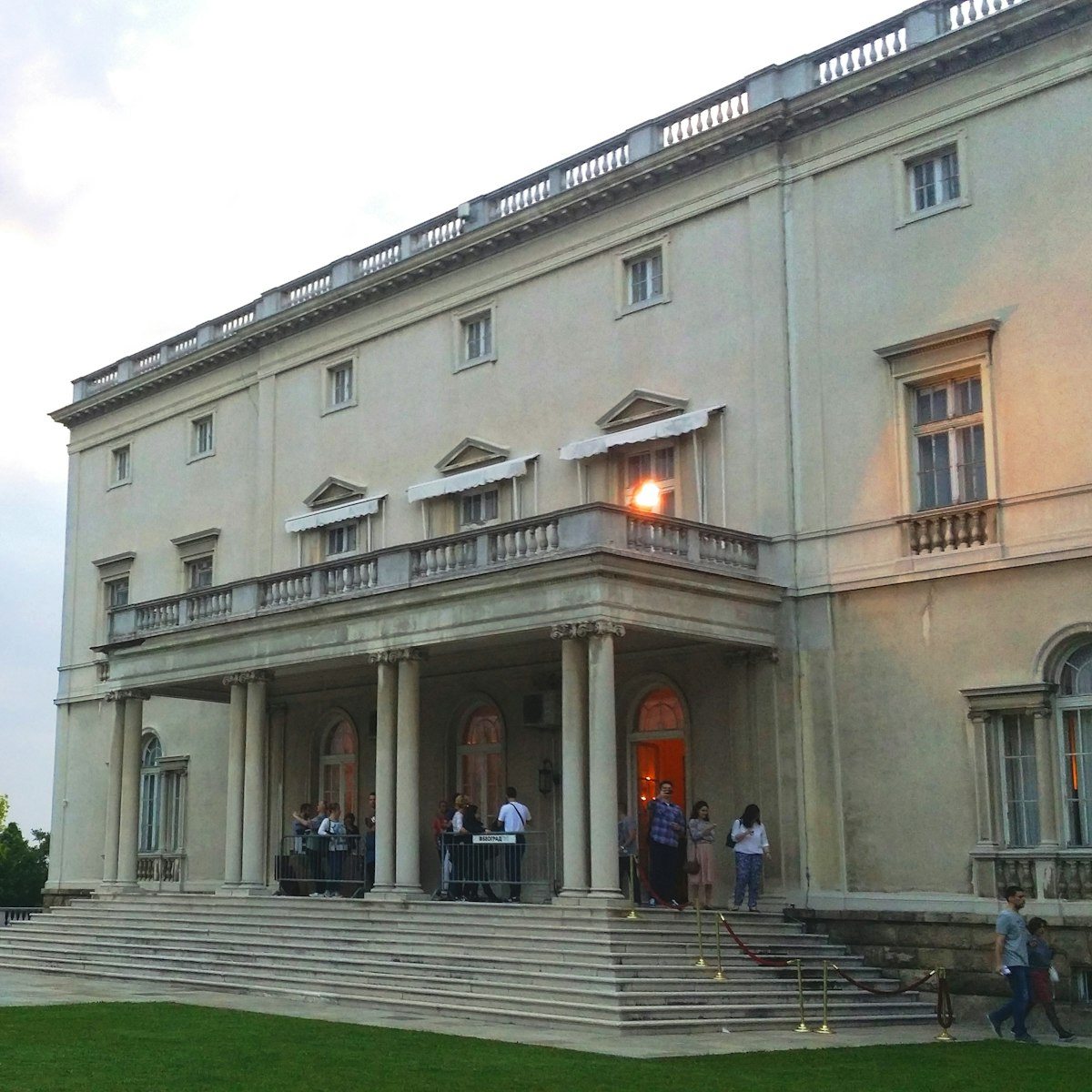
Royal Compound
Commissioned between the two world wars by soon-to-be-assassinated King Alexander I of Yugoslavia, the Royal and White Palaces in Belgrade's exclusive…
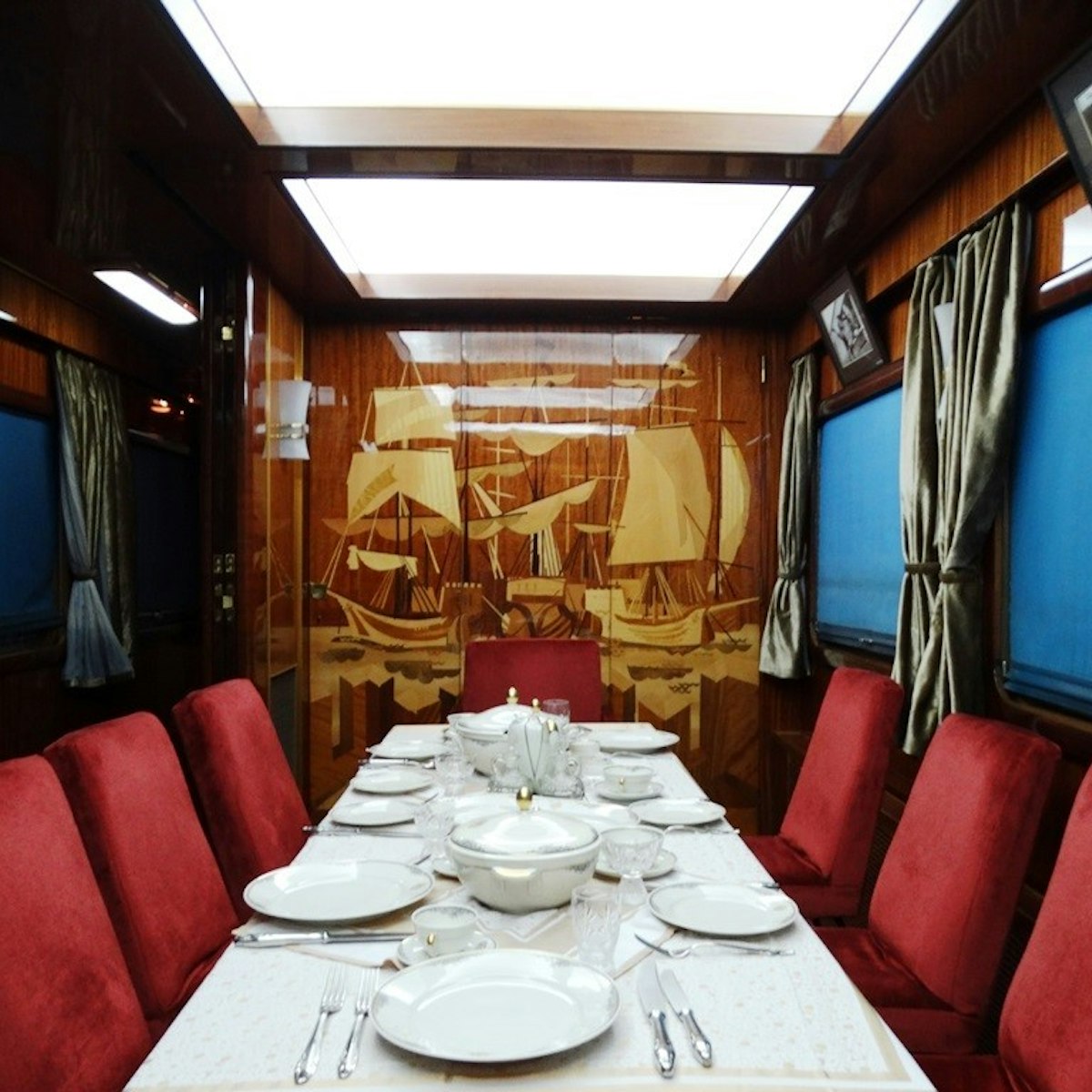
One of the few remaining symbols of ex-Yugoslavia, Marshal Tito's Blue Train nowadays serves as a mostly inaccessible museum but can be rented for travel…
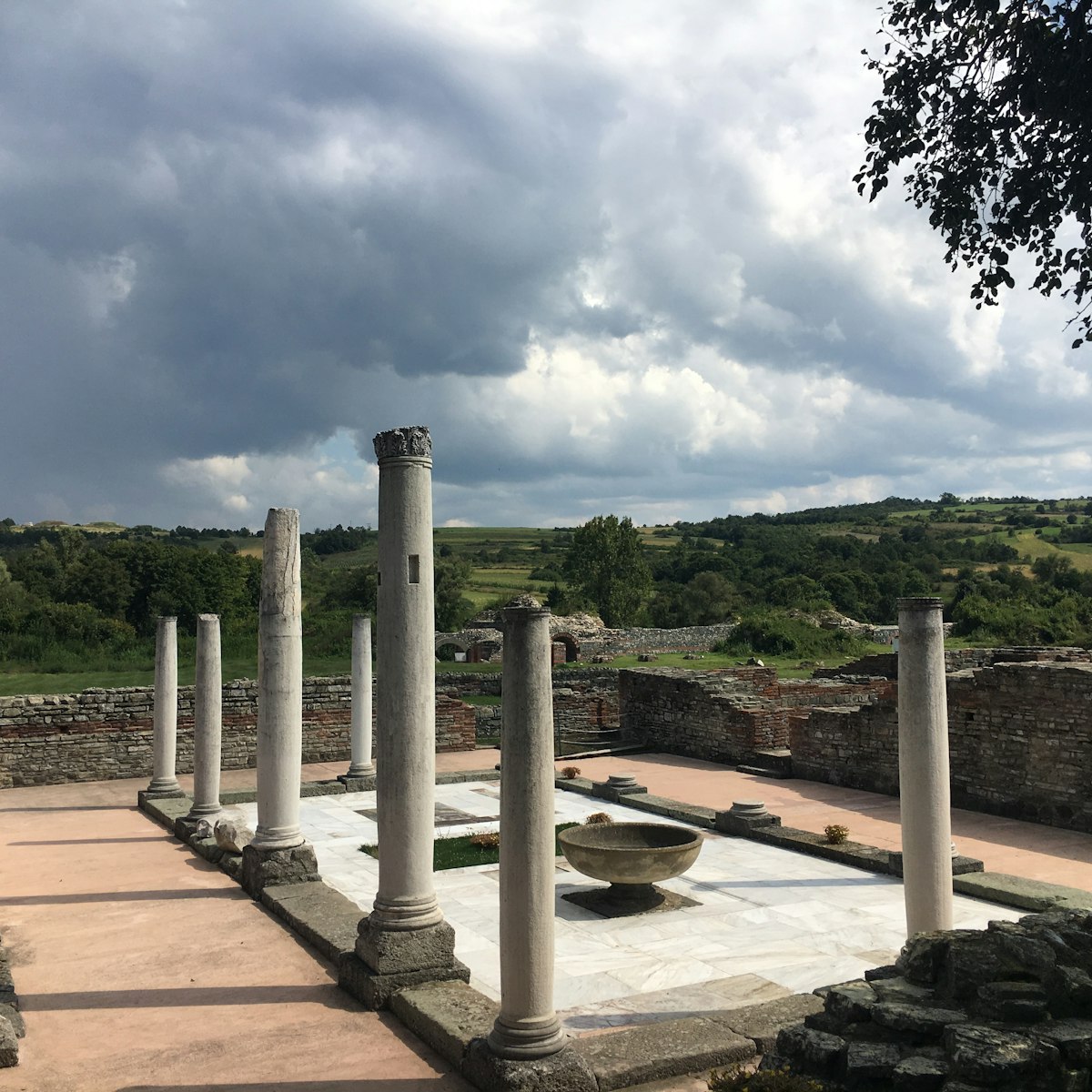
Felix Romuliana
Unesco-listed Felix Romuliana was built for the Roman emperor Galerius and completed around AD 313. Ravaged by the Huns in the 5th century and abandoned…
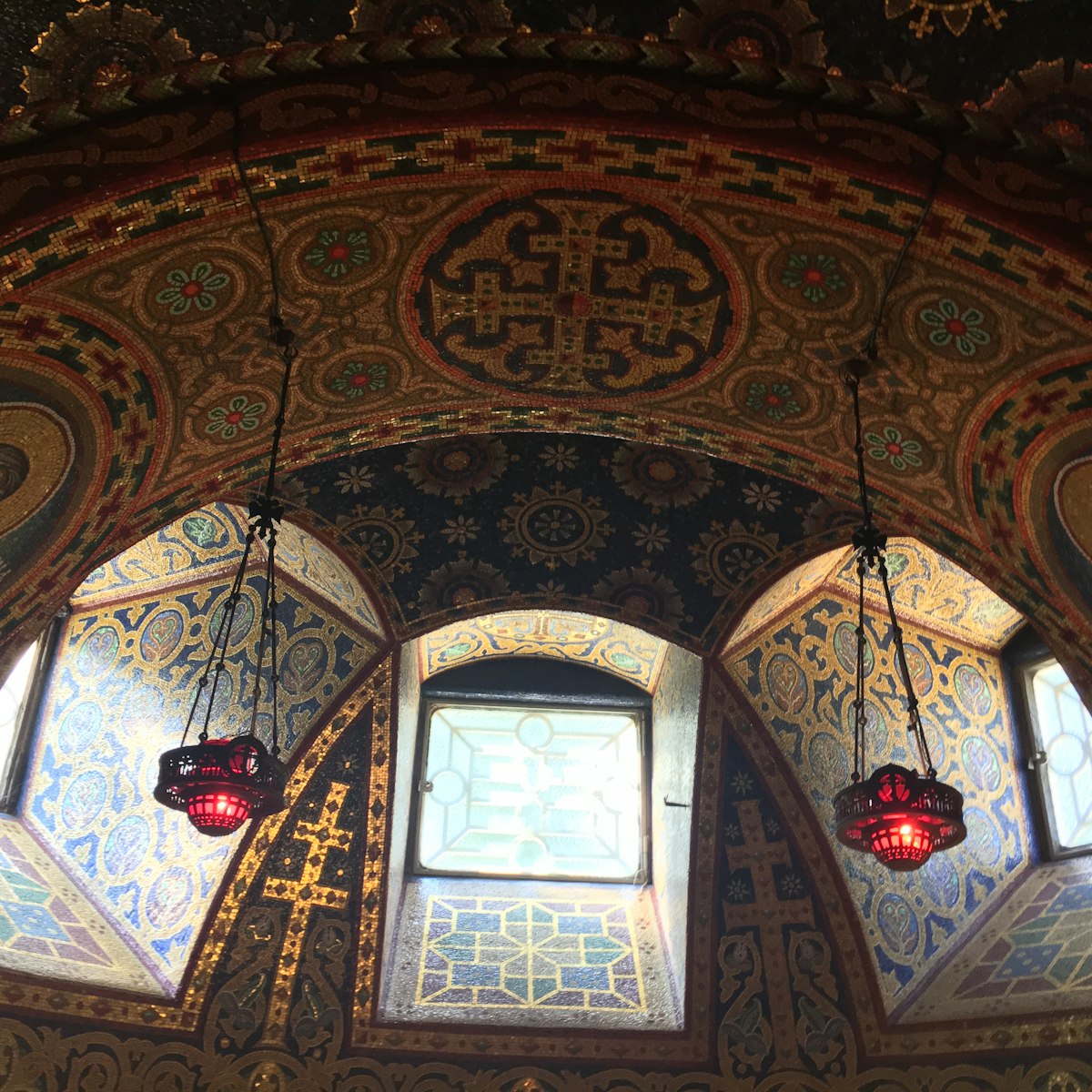
Oplenac Royal Complex
Oplenac, in the town of Topola, is where Karađorđe plotted the Serbian insurrection against the Turks in 1804. One ticket grants access to all attractions…
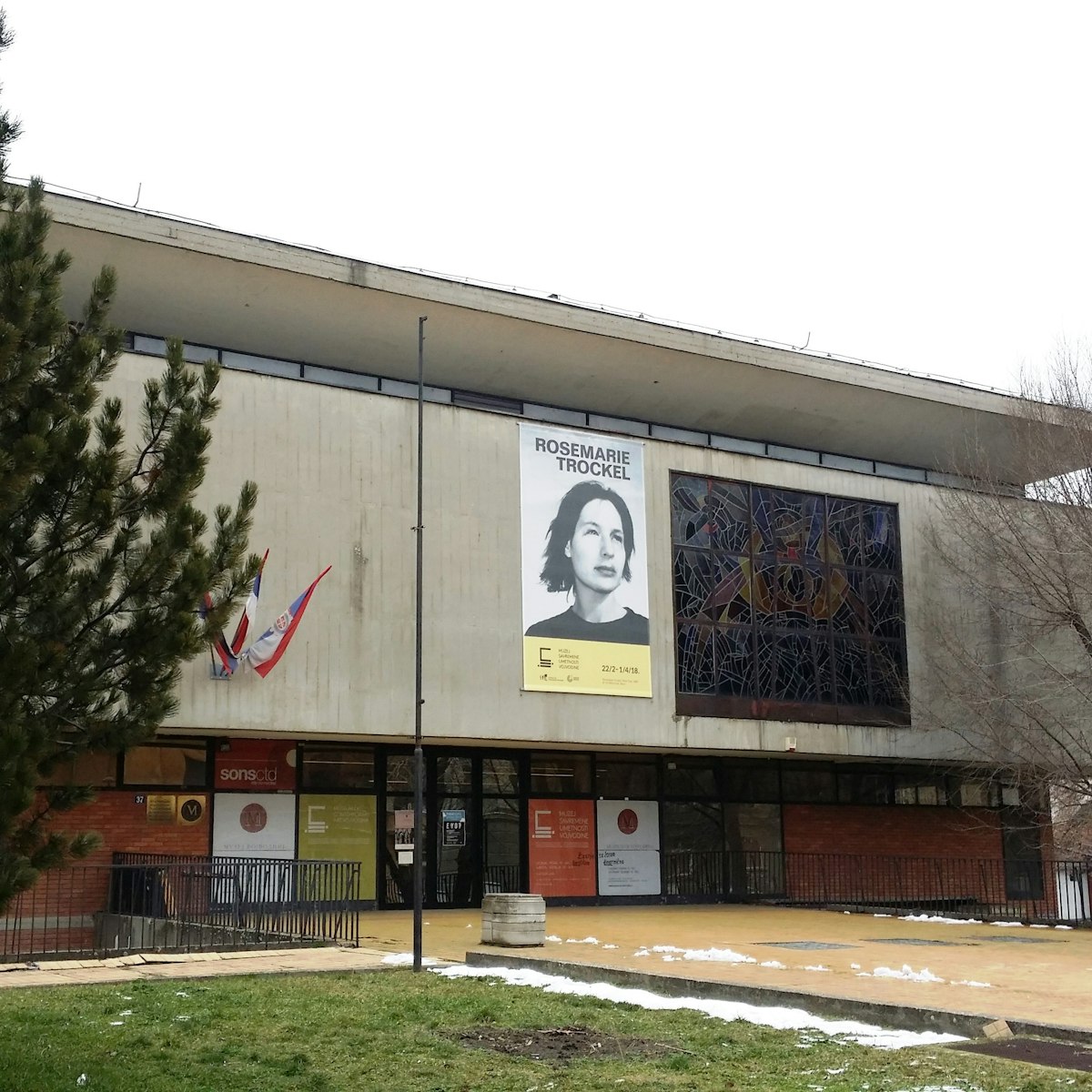
Museum of Contemporary Art Vojvodina
Near to the Museum of Vojvodina's main building is this annexe. It is home to the city's premier collection of Serbian (particularly Vojvodinian) and…

Bač Fortress
For a concentrated hit of Vojvodina’s history, head to Bač, 65km west of Novi Sad. The town’s star attraction is its partially ruined fortress. Records…
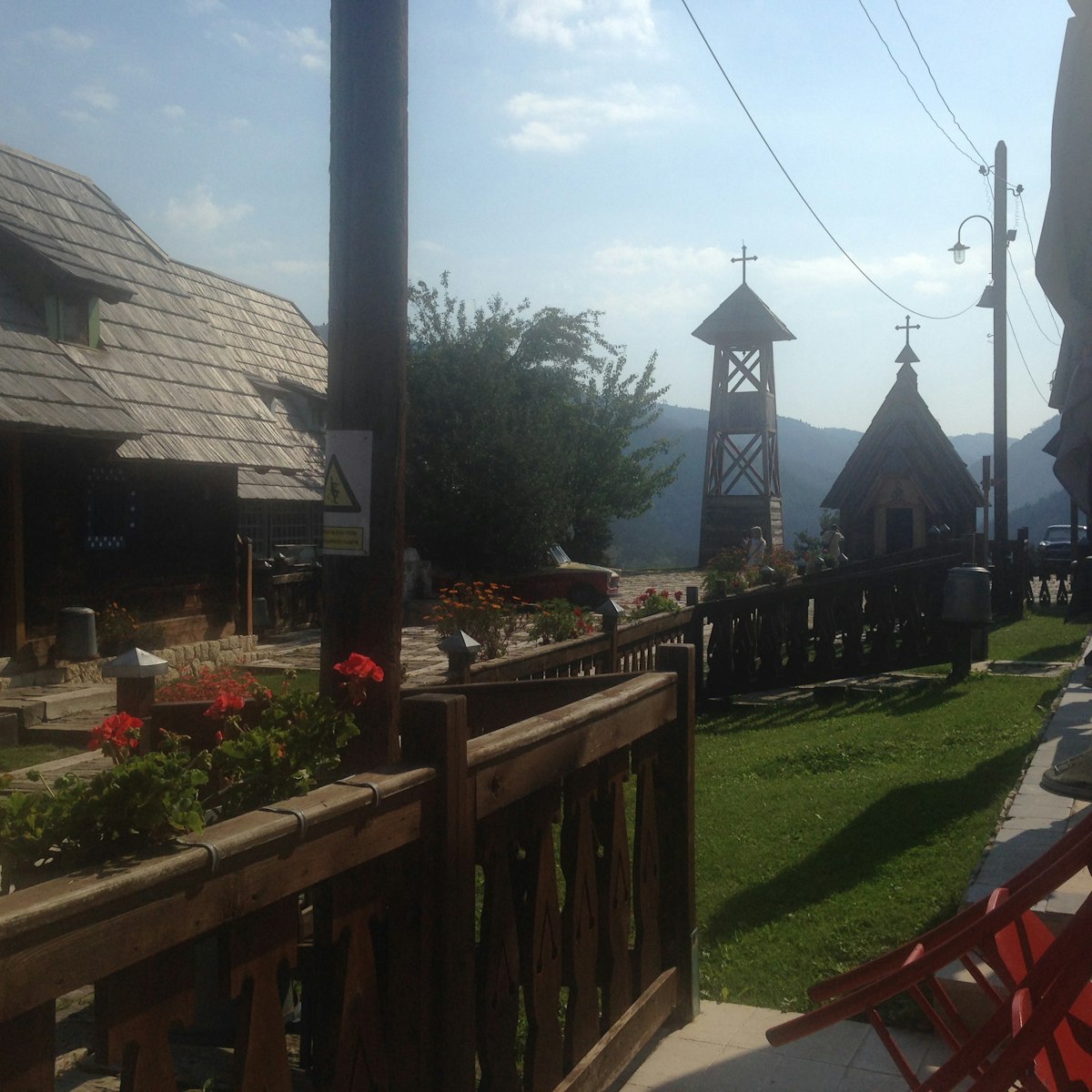
Drvengrad ('Timbertown') in Mokra Gora was built by enigmatic filmmaker Emir Kusturica in 2002 for his film Life Is a Miracle. Quirky flourishes are…

Mileševa Monastery
The most cherished of Serbian medieval frescoes, Beli Anđeo (White Angel) can be admired – but not photographed! – inside the (fittingly) gleaming-white…
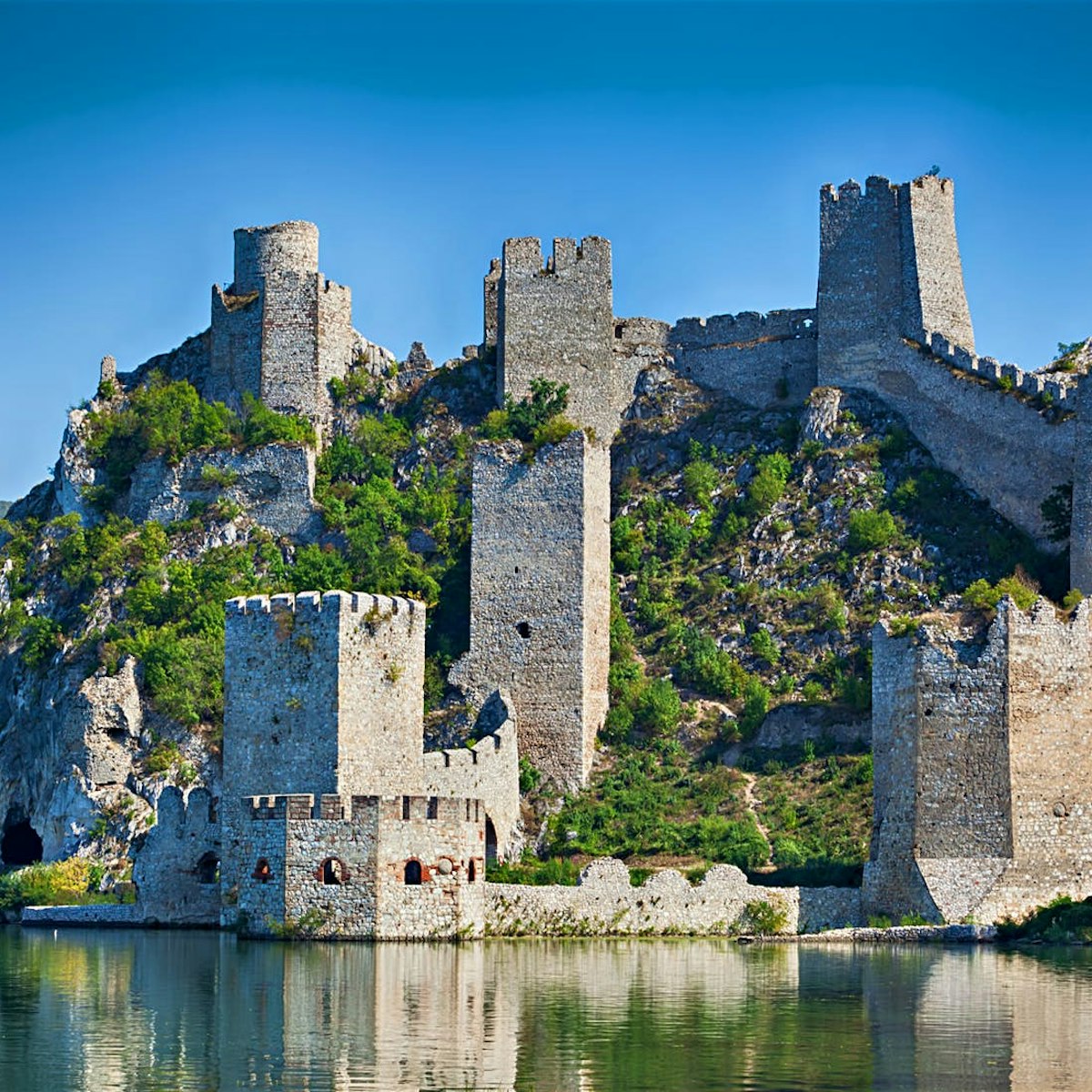
Golubac Fortress
The remains of this 10-tower fortified town brood majestically by the entrance to Đerdap National Park. Originally a Roman settlement, the fortress was…

Sveti Sava Temple
Sveti Sava is the Balkans' biggest (and the world's second biggest) Orthodox church, a fact made entirely obvious when looking at the city skyline from a…
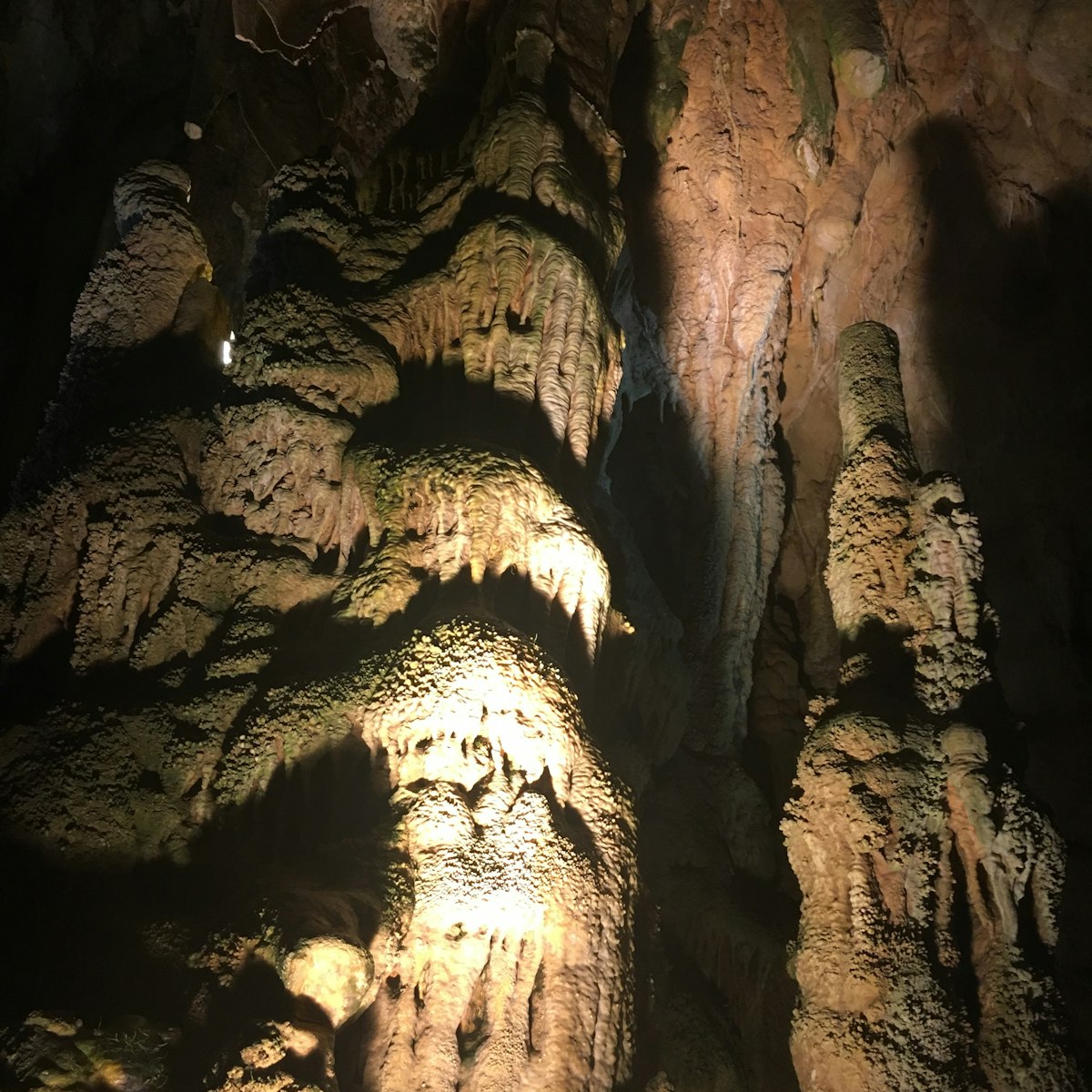
Resava Cave
A winding 20km beyond Despotovac, the eight-million-year-old Resava Cave has 40-minute guided tours through impressive underground halls, featuring…
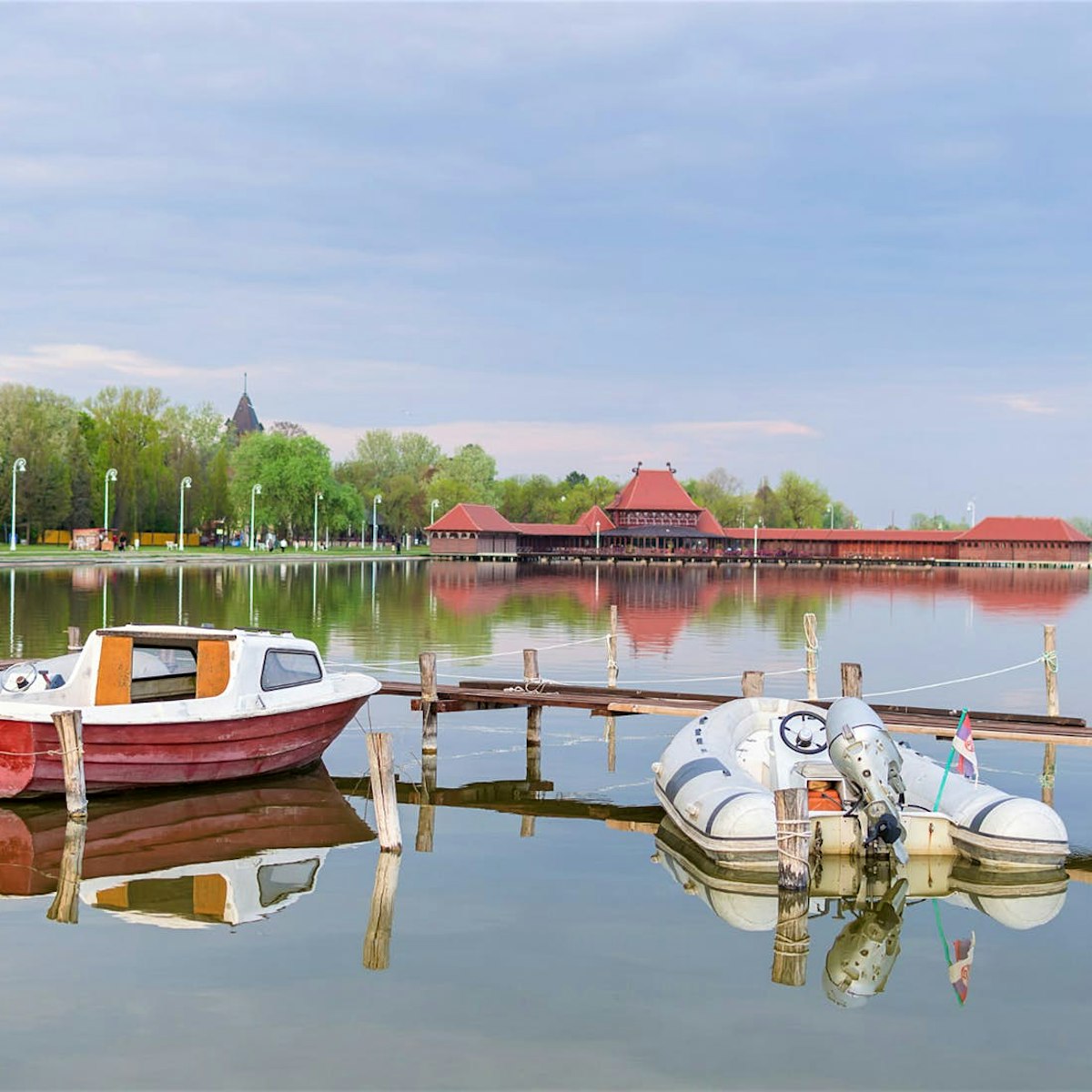
The resort town of Palić, 8km from Subotica, is home to a 5-sq-km lake popular with boaters, fisherfolk and afternoon amblers; its water isn't approved…
More destinations you need to see
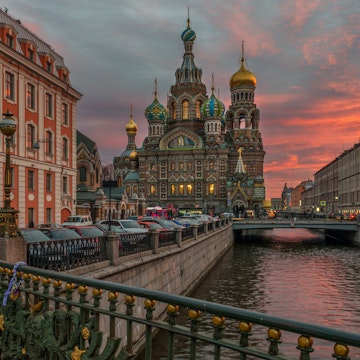

18 Most Beautiful Places in Serbia
Serbia is a very diverse country, with attractions that vary from its stunning natural sites, picturesque towns, and some of the best foods in the region. Serbia is home to unique nature attractions including the largest desert in continental Europe and the most amazing archaeological site that provides a glimpse into prehistoric times.
In this list, I have put together the most beautiful places in Serbia so that you can plan your holidays making sure to check the most popular destinations in the country. I personally love towns like Sombor and Apatin where life is slow-paced and unhurried, as well as the hiking trails and diverse terrains in national parks such as Tara and Fruska Gora.
But Serbia is so diverse that I am sure you will find something that fits your taste as well. Without further ado, here is my list of the most beautiful places in Serbia.
The ultimate list of the 18 most beautiful places in Serbia
1. belgrade.

The capital of Serbia, Belgrade is a vibrant metropolis known for its beautiful architecture, fabulous museums, and exciting nightlife. There is no shortage of tourist attractions here.
I know it may sound like a cliché to say that Belgrade is one of the most beautiful places to visit in Serbia, but the old town is so well-preserved and lively that I truly believe it belongs on this list.
Learn about the history of Yugoslavia at the Museum of Yugoslavia, see the iconic Kalemegdan Fortress, visit the bohemian Skadarlija, or spend a hot summer day at Ada Ciganlij where you can go swimming and kayaking. In the evening, dress to the nines and dance the night away at one of the trendy nightclubs.
- 3 Days in Belgrade: A Perfect 3-Day Itinerary
- The Ultimate Guide to Public Transport in Belgrade
- 14 Free Things to Do in Belgrade – by a Local
- Best Area to Stay in Belgrade: Top Hotels per Neighborhood
2. Novi Sad

Nestled on the banks of the Danube River, Novi Sad is the capital of Vojvodina and the second-largest city in the country. From the amazing Petrovaradin Fortress where the world-famous Exit festival takes place every summer to the picturesque city center and several amazing parks, the town is packed with attractions worth visiting.
Beach-goers can spend a day on Strand , while shopaholics can pay a visit to the newish Promenada mall. To shop for local produce, get up early in the morning and go to Riblja Pijaca. The nearby Dunavska Street is a great place to go for a stroll. Novi Sad is also home to several museums and art galleries.
3. Lepenski Vir
Welcome to Lepenski Vir, a famous Mesolithic and Early Neolithic archaeological site located on the right bank of the Danube River in Serbia . NY Times actually wrote about this place, calling it “An Archaeological Puzzle on the Danube”. The culture of this archaeological site is around 8,000 years old .
Discovered back in the 1960s, Lepenski Vir provides a glimpse into prehistoric times with unique sculptures, rivers stones, and shrines. I have to admit that the carved faces with round eyes and fish motives look quite haunting.
4. Deliblatska Pescara
Many people don’t know this, but Serbia is home to the largest desert in continental Europe . Located in the Northwest of Serbia, Deliblatska Pescara dates back to the Ice Age and is one of the most unique nature reserves in the region.
This Geo-morphological formation is spread across an area of 300 square kilometers. It’s actually a perfect picnic spot for nature lovers, so it is a destination that definitely deserves its spot among the list of the most beautiful places in Serbia.
Pay a visit to this 12,000-year-old site to admire the beauty of its sandy terrain. Often called “the European Sahara”, Deliblatska Pescara is also home to more than 1,000 plant species. Book a tour of Deliblatska Pescara here .
5. Fruška Gora National Park

Nature lovers searching for a perfect weekend getaway in Serbia can spend a day at the beautiful Fruška Gora National Park . Located just a short drive from the city of Novi Sad, this national park is known for its scenic hiking trails, vineyard-covered hills, and pristine lakes.
Whether you wish to visit wine estates , enjoy panoramic mountain views from viewpoints like Orlovo Bojiste, or just hike along well-marked trails, there is so much to look forward to when visiting this place. Fruška Gora National Park is also home to more than 15 Orthodox monasteries.
Read also : The best hikes in Serbia
6. Đavolja Varoš

Next on my list of the most beautiful places in Serbia is Đavolja Varoš or Devil’s Town . You will find this unusual rock formation created by soil erosion on Mount Radan in southern Serbia. According to local legend, these 200 unique rock formations are actually the remains of wedding guests who refused the Devil’s orders to accept a wedding between a brother and a sister.
There is also another explanation, a more reasonable one. This geologic phenomenon was created by soil erosion. From 2 to 15 meters tall, these strange rock columns vary in size.
7. Sremski Karlovci

Wine lovers on vacation in Serbia will want to pay a visit to Sremski Karlovci. This picturesque town in Vojvodina is known for its baroque architecture, gorgeous squares, and rich cultural heritage. Admire the beauty of the Patriarchate Court building, snap a photo in front of the charming Four Lions Fountain, or have a memorable gastronomic experience at the Pasent Restaurant in Sremski Karlovci.
The town is also home to many cool wineries. Travelers can spend the entire day visiting wine cellars and tasting rooms. Make sure you try the local Bermet dessert wine which is only made here in Sremski Karlovci. This spiced wine was extremely popular among Austro-Hungarian royalty in the 18th century. It was even served on Titanic!
Check out this day tour from Belgrade including a stop in Sremski Karlovci.
8. Tara National Park

With dense forests, charming waterfalls, and pristine lakes, Tara National Park is a mecca for nature lovers visiting Serbia. This expansive park is a great place to enjoy activities like hiking, rafting, and bird-watching.
No visit to Tara is complete without checking out the park’s beautiful lakes, Perućac and Zaovine. Here, you can rent accommodation right on the water and spend the day swimming and kayaking on the lakes. Tara National Park is also home to the rare European brown bear.
You can visit Tara National Park as a day trip from Belgrade if you don’t have much time available in the country. This is a great tour option to do so.
9. Gornje Podunavlje
Located in the northwest of Serbia, Gornje Podunavlje is one of the best-hidden gems in Vojvodina . If you are an outdoorsy person and wish to reconnect with nature, this nature reserve will leave you breathless with its wetland forests, meadows, river islands, swamps, and ponds.
Looking for accommodation? You will find rural households available for rent in weekend settlements like Kenđija and Baračka. Gornje Podunavlje is the perfect place for nature lovers; you will find more than 260 species of birds and over 1,000 plant species here.
10. Drvengrad

Have you heard of the renowned film director Emir Kusturica? Well, Drvengrad was built as a film set for one of his movies. Nestled high up in the mountains, this picturesque village oozes charm at every turn with its quaint squares and cute wooden houses.
It’s basically an ethnic open-air museum known for its rustic charm. The mountain views from the village are simply breathtaking. Drvengrad is also a place that hosts a wide range of cultural events like concerts, film festivals, workshops, art classes, and much more.
11. Uvac Gorge

Uvac Gorge is not only one of the most beautiful places in Serbia; I dare to say it is also one of the most beautiful places in the entire Balkan region .
Uvac Gorge is, without a doubt, one of the most photographed spots in the country. If you are after the perfect photo, go to one of the twelve lookout points above the gorge. If you have a drone, this place will be paradise for you.
The views of the majestic hills and the pristine river are spectacular, especially from the Molitva Peak viewpoint . Travelers can also hop on a boat ride to experience this special nature reserve from a different perspective.
12. Golubac Fortress

History buffs vacationing in Serbia can look forward to visiting the 14th-century Golubac Fortress . Nestled on the edge of the Danube River in Eastern Serbia, the fortress is one of the most important historic sites in the country.
It was built to protect the Serbian state from conquerors. The fortress was also a place where the Ottoman Empire and Hungary clashed . Today, Golubac Fortress is a popular weekend getaway spot for both local and international tourists visiting the country.
Most travelers visit Golubac Fortress as a day trip from Belgrade. If you are interested in the same, check out this tour option .
13. Studenica Monastery
There is no shortage of awesome monasteries in Serbia and Studenica is one of the most beautiful ones .
Established in the 12th century, this medieval monastery is a UNESCO World Heritage Site which consists of two white-marble churches and a few other historic buildings. The larger church is called the Church of the Virgin, and the smaller one is the Church of the King.
The monastery was founded by Stefan Nemanja, the first ruler of the medieval Serbian state. Step inside to find several amazing thirteenth and fourteenth-century frescoes including the famous Studenica Crucifixion. You can visit Studenica on this day tour from Belgrade.
14. Vrnjačka Banja

The town of Vrnjačka Banja is one of my favorite weekend getaway spots in Serbia . With many hot springs , it is the most popular bath town in the country. Travelers can look forward to visiting healing and recreational hot springs properties here in Vrnjačka Banja.
In addition to hot springs, Vrnjacka Banja has many cute bars, restaurants, and green areas where visitors can enjoy nature. In summer, the town hosts a few music festivals worth checking out. If you are visiting Serbia in winter, you will be pleased to hear that some of the best ski resort towns in the country are located just a short drive from Vrnjacka Banja.
15. Zasavica Nature Reserve
Add a visit to Zasavica Nature Reserve to your Serbia travel itinerary and you won’t be disappointed. A great place to reconnect with nature, this protected and special nature reserve is an ideal destination to enjoy a wide range of outdoor activities.
Whether you wish to hop on a boat ride on the Umbra Boat, enjoy activities like sport fishing and hiking, or stay in one of the campsites equipped with water and electricity, there is something for everyone. Zasavica is home to more than 200 bird species, as well as 600 plant species.
Stop by the amazing Visitor’s Center, a large building where you will find a cool ethnic room that is fitted with a bunch of interesting agricultural tools from the early 20th century. The visitor center also has a nice restaurant, as well as a few accommodation options.
16. Kopaonik
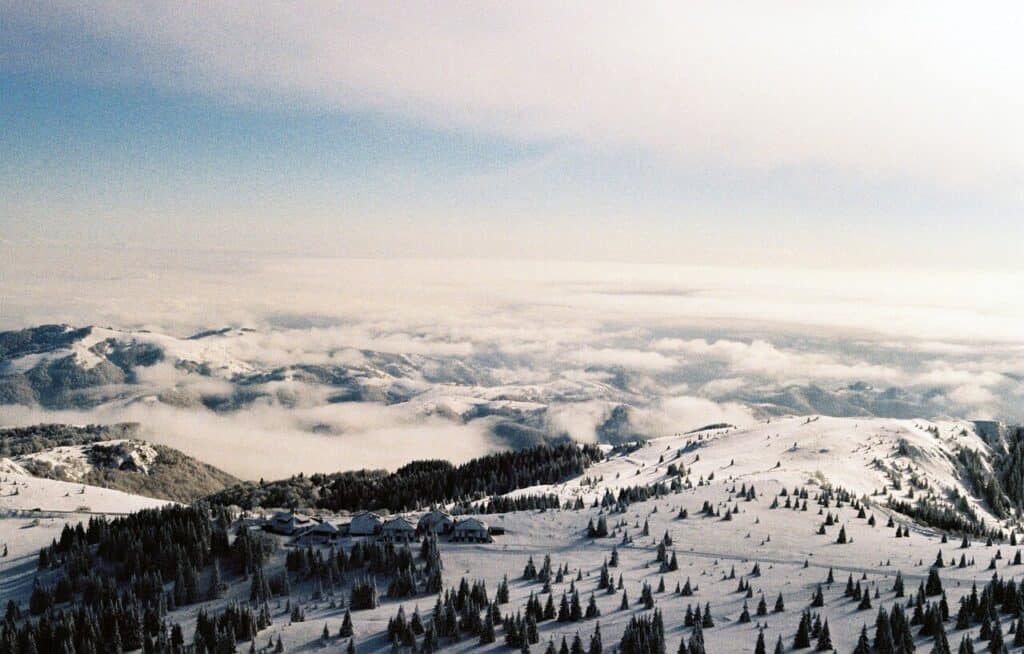
If you are into winter sports like skiing and snowboarding , spend a few days in Kopaonik. What I like about this skiing resort is that it is reasonably priced, especially when you compare it to other popular ski resorts in France, Switzerland, and Austria.
The ski resort in Kopaonik is typically open from December to April, has around 20 lifts, and many options of places where you can rent skiing equipment. Even though Kopaonik is one of the most beautiful places in Serbia during the winter, you can also visit Kopaonik in summer to enjoy outdoor activities like bird watching, mountain climbing, and hiking.

I think that Sombor is one of the most underrated and beautiful places in Serbia . Known for its lovely downtown area, impressive architecture, and delicious cuisine, this picturesque town in Vojvodina truly has it all.
Sombor is also one of the greenest cities in the region with hundreds of giant trees scattered throughout the city center. Art lovers should visit the 19th-century Milan Konjović Gallery in Sombor. Foodies will want to go to “ Carda Andric ” which is located on the outskirts of the city and try the signature fish stew (paprikash).
18. Palic Lake
Last on my list of the most beautiful places in Serbia is the picturesque Palic Lake . Located just a short drive from the city of Subotica and the border with Hungary, Palic Lake is the perfect place to enjoy the great outdoors on the weekends.
With a beautiful lake, art nouveau architecture, and a few wineries, Palic is a destination to get away from it all and enjoy some peace and quiet. If you are visiting in summer, see a movie at the Palic Film Festival which is one of the oldest film festivals in the region.
And this is a wrap on the list of the most beautiful places in Serbia . Even though all of these 18 locations are definitely worth a visit, I did my best to make this list as diverse as possible so it can cater to everyone’s preferences.
Whether you prefer nature or city vibes, I am sure you will find incredibly beautiful locations in Serbia for your next vacation.
Need more help planning your Serbia trip?
We have put together many travel resources to plan your trip! Check below some travel guides that may be useful for you:
- Serbia 5-7 Days Road Trip Itinerary
- Best Things to Do in Novi Sad: One-Day Itinerary
- 18 Most Beautiful Places to Visit in Serbia
- Driving in Serbia as a foreigner
- How many days should you spend in Serbia
- Belgrade vs Sarajevo
- Belgrade vs Sofia
Organizing your trip
To help you plan your trip to Serbia, we have put together our favorite planning resources:
- Flights : Get affordable flights to Serbia on Skyscanner.com .
- Travel insurance : Make sure you are protected during your trip. We use VisitorsCoverage whenever we are traveling abroad.
- Renting a car : We always use Discover Cars to get the best car deals.
- Accommodation : Find the best hotels and apartments on Booking.com .
- Activities : Get fun ideas of what to do and buy unique activities with Get Your Guide.
- SIM Card : Stay connected during your trip with Airalo.
Disclosure: This post may contain affiliate links. This means that we get a small commission from any purchase you make, at no additional cost to you!
Passionate traveler and long-term travel writer who enjoys translating his adventures into exciting content.
Similar Posts

Which is the Best Airport in Brussels: Zaventem vs Charleroi
Planning your trip starts with the flight ticket – more precisely, where to fly to.

How is Driving in Bulgaria: A Guide for Foreigners
Prepare for your Bulgaria trip by learning all the basics about driving and renting a car in the country.

Best SIM Card for the Balkans
Get our personal recommendation for the best SIM card alternative in the Balkans.

Porto: The Best 2-Days Travel Itinerary
The best of Porto in a nutshell – find out what should you see and visit in Porto with our 2-Day travel itinerary.

Best Prepaid Serbia SIM Cards for Tourists
Compare the options of prepaid SIM cards offered by all Serbian mobile providers.
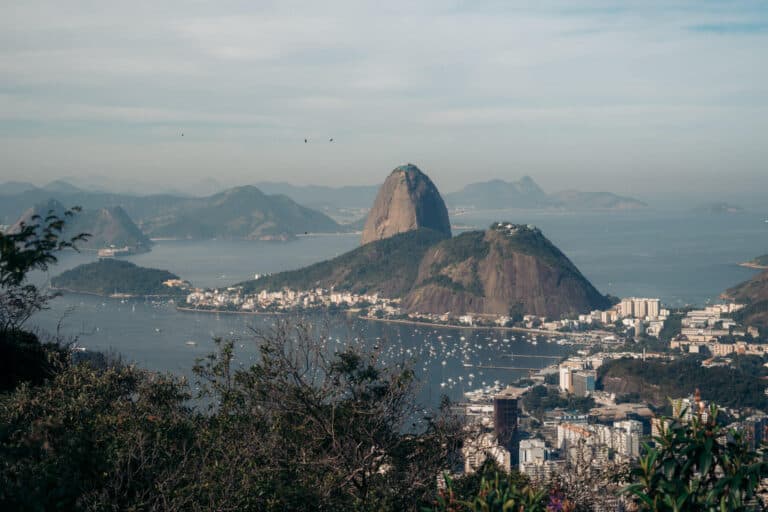
Dona Marta Viewpoint: How and When to Visit
Experience the best free viewpoint in Rio.
Regions [ edit ]
Serbia can be divided into five regions and one de facto independent republic:

Disputed territory [ edit ]
The status of Kosovo — an Albanian-majority land today though historically part of Serbia and the site of the 1389 Battle of Kosovo, to this day a highly charged event in which the Serbian defenders were annihilated but also killed most of the attacking Ottoman forces and the Ottoman Sultan in the process — is quite controversial in Serbia, which does not recognise the region as independent.
Understand [ edit ]

Serbs are a warm people and welcoming towards foreigners. Most younger Serbs will speak some English and will be eager to practise it (seniors, however, are more likely to speak German and/or French), so you will be able to find your way around by asking directions. Most tourists come to Serbia in the summer and you can often hear German, Italian, French and English in the streets of Belgrade, while Slovenian tourists pour in for the New Year holidays.
Climate [ edit ]
In the north: continental climate (cold winters and hot, humid summers with well distributed rainfall); central portion: moderate continental climate; and to the south: hot, dry summers and autumns and relatively cold winters with heavy snowfall.
Geography [ edit ]
Extremely varied: to the north, rich fertile plains; to the east, limestone ranges and basins; to the southeast, ancient mountains and hills. Although the region around the town of Mionica has been known for some earthquakes, these were by no means destructive. The highest point is Đeravica at 2656 m.
History [ edit ]
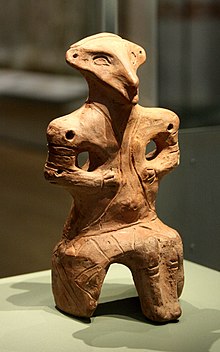
There were seventeen Roman emperors born in the territory of today's Serbia, more than in Gaul ( France and Belgium ), Iberia ( Spain and Portugal ) or indeed any other modern country's territory but Italy , and they all left monuments and built palaces in or close to their birthplaces. It may well be that the oldest ever found human settlements in Europe, if not in the world, can be found in country of Serbia. The longest stretch of the river Danube, longer than in any other European country is in Serbia. The giant hydroelectric dam of Đerdap has created a lake stretching for many miles out of the Đerdap Canyon with its famous Roman road to the East build by the Emperor Trajan.
The first Serbian state under that name was formed in the late 8th century, becoming a kingdom in the 12th century and expanding by the mid-14th century to an empire that comprised most of the Balkans. In 1389, however, the Serbs lost a decisive battle in the Kosovo field against the Ottoman Empire . Serbia managed to preserve its freedom for another seventy years, only to be finally overwhelmed by the Turks in 1459.
With several brief interludes of 2-5 years each and one longer one (1717-1739) when the territory of Serbia south of the rivers Danube and Sava was incorporated into the Austrian Empire , it remained under Ottoman rule until an uprising in the early 1800s grew into a full-scale war (Serbian Revolution aka First Serbian Uprising) led to the restoration of Serbian autonomy in 1815 and full independence in 1837. However, after 160 years under the Turks (the same as most of Croatia and Hungary), Northern Serbia (Vojvodina) was under the Austrian rule from the 1690s.
The 1914 Austro-Hungarian invasion of Serbia following the assassination of Archduke Ferdinand by an ethnic Serb high school student precipitated the first World War . In its aftermath in 1918, victorious Serbia gathered all south Slav lands (Croatia, Slovenia, Slavonia, Dalmatia, Bosnia and Hercegovina, and Montenegro) into the Kingdom of Serbs, Croats, and Slovenes; The country's name was changed to Yugoslavia in 1929. Invasion and occupation by Germany and Italy in 1941 during World War II was resisted by the communist-led guerrilla (Yugoslav Partisans), and at times by the Royal Yugoslav Army in fatherland (Chetniks), commanded by Lt.-Gen Dragoljub Mihajlović; Chetniks at times fought both invaders and Partisans, switching sides between resisting to openly collaborating with the invaders. The Partisans, commanded by Field-Marshal Josip Broz Tito, emerged victorious and formed a provisional government that abolished the monarchy and proclaimed a republic in 1946 after a dubious referendum. At the end of the war, nearly all ethnic Germans left the country. Although pro-Communist, J.B. Tito's new government was heavily anti-Stalinist and successfully steered its own delicate path between the Warsaw Pact nations and the West for the next four and a half decades.
In the early 1990s, post-Tito Yugoslavia began to unravel along ethnic lines: Slovenia , Croatia , and the Former Yugoslav Republic of Macedonia all split from the Yugoslav Union in 1991; and Bosnia and Herzegovina in 1992. All of efforts to preserve Yugoslavia were unsuccessful and bloody civil wars broke out in Croatia and in Bosnia. The remaining republics of Serbia and Montenegro declared a new "Federal Republic of Yugoslavia" (FRY) in 1992. Slobodan Milošević was elected the first president of Serbia.
In the late 1990s, the conflict with the Albanian separatist movement in Kosovo led to a NATO bombing campaign and direct intervention in support of the separatists, which left the placement of Kosovo under a UN administration. Slobodan Milošević, by this time elected for the president of the federation, lost in the Federal elections in the fall of 2000 to Vojislav Koštunica. The country reestablished its membership in the UN and started preparations to join the EU. However, progress on EU accession talks has been slow, as the EU has demanded that Serbia recognise Kosovo's independence as a prerequisite for membership.
In 2002, the republics of Serbia and Montenegro began negotiations to forge a looser relationship, which led to the 2003 name change of the country to "Serbia and Montenegro". Serbia and Montenegro dissolved in June 2006 when the Montenegrin independence referendum was approved by a narrow margin. Kosovo unilaterally declared its independence from Serbia in 2008; however, this act remains unrecognised by Serbia and many other countries.
National holidays [ edit ]
January 1–2 (New Year's Day), January 7 (Eastern Orthodox Christmas), January 14 (working day) (Orthodox New Year), January 27 (working day) (Saint Sava's Feast Day), February 15–16 (Sretenje/Groundhog Day (Candlemas)/Serbian National Day), Good Friday and Easter Monday (according to Orthodox calendar), May 1–2 (Labour Day), May 9 (working day) (Victory Day), June 28 (working day) (Vidovdan/St Vitus Day) and November 11 (Armistice Day) are designated as state holidays. Major retail establishments such as supermarkets and shopping malls remain open on all of these days except January 1 and January 7. There are also several officially designated days on which only the members of certain religious minorities have the right for a day off. In practice this means that in the northernmost areas of the country, including Subotica , where there is a sizeable Catholic population, many shops close on December 25 - Christmas Day according to the Gregorian calendar.
Measures [ edit ]
Serbia, like most countries in the world, uses the Metric system .
Visitor information [ edit ]
- Experience Serbia
Talk [ edit ]
The official Serbian language is similar to Croatian and Bosnian, and mutually intelligible with them to a very high degree. Before the era of nationalist linguistic policies and the breakup of the former Yugoslavia, all of those dialects were all known as Serbo-Croatian. Today, people in the former Yugoslavia no longer use this general term for what remains a common language. The written form is officially written with Cyrillic script in the country but occasionally in non-governmental situations, the Roman alphabet is used.
English is commonly spoken by younger adults who grew after the fall of communism, and they are also quite willing to practise it with foreigners. On the other hand, older people who grew up under communist rule rarely speak any English. You can also try with German, French, Russian, Spanish or Italian which are taught in school.
If you speak other South Slavic languages such as Bulgarian and Macedonian, it can prove to be occasionally helpful for you, as those languages have many similarities with Serbian. Older people may speak Russian or German as they were the main foreign languages taught in school during the Yugoslav era, though they have been largely supplanted by English among the younger generation.
In Vojvodina, most people speak Serbian, but other languages are also used. In some towns near the Hungarian border, you are more likely to hear Hungarian. There are many smaller minorities (Slovaks, Romanians, Roma people), who often speak their native languages.
In churches, the liturgical language is Church Slavonic , which differs significantly from any modern Slavic language.
Get in [ edit ]
Entry requirements [ edit ].

Foreign nationals of the following countries/territories can enter Serbia visa-free ( Government website ):
- For up to 90 days in 6 months: Albania , Andorra , Argentina , Armenia , Australia , Austria , Azerbaijan , Bahrain , Belgium , Bolivia , Bosnia and Herzegovina , Brazil , Bulgaria , Canada , Chile , Costa Rica , Croatia , Cuba , Cyprus , Czech Republic , Denmark , Estonia , Finland , France , Germany , Greece , Holy See , Hungary , Iceland , Ireland , Israel , Italy , Japan , Latvia , Liechtenstein , Lithuania , Luxembourg , Macau , Malta , Mexico , Moldova , Monaco , Mongolia , Montenegro , Netherlands , New Zealand , North Macedonia , Norway , Oman , Peru , Poland , Portugal , Qatar , Romania , San Marino , Seychelles , Singapore , Slovakia , Slovenia , South Korea , Spain , Sweden , Switzerland , Tunisia , Turkey , United Arab Emirates , United Kingdom , United States , Uruguay
- For up to 30 days, extendable up to 90 days within any 180 day period: Belarus , China , Kazakhstan , Russia
- For up to 30 days within any 60 day period: Ukraine
- For up to 30 days within one year: Bahamas , Barbados , Colombia , Georgia , Guinea-Bissau , India , Indonesia , Iran , Jamaica , Paraguay , Saint Vincent and the Grenadines , Suriname
- For up to 14 days: Hong Kong
Citizens of the following countries can enter and stay up to 90 days in 6 months with their National ID card: Austria , Belgium , Bosnia and Herzegovina , Bulgaria , Croatia , Cyprus , Czech Republic , Denmark , Estonia , Finland , France , Germany , Greece , Hungary , Iceland , Ireland , Italy , Latvia , Lithuania , Luxembourg , Malta , Montenegro , Netherlands , North Macedonia , Norway , Poland , Portugal , Romania , Slovakia , Slovenia , Spain , Sweden , Switzerland , United Kingdom .
Valid visa holders and residents of the European Union and Schengen Area member states and the United States can enter Serbia without a visa for a maximum stay of 90 days within 180 days, provided the visa remains valid for the entire length of stay.
Serbia has announced that visitors with Kosovar visas or passport stamps will not be allowed into the country. However, it seems that instead, the visas and stamps will be overstamped with a "cancelled" stamp. Entering Serbia through Kosovo without a Serbian entry stamp is considered as an illegal entry and can be met with stiff penalties; however, leaving Serbia via Kosovo is not a problem.
Customs controls are fairly straightforward, but a notable regulation is that you are allowed to move only 120,000 Serbian dinars (RSD) into and out of the country, and notes larger than RSD 1000 are not allowed to move across the border. You can take up to €10,000 through the border without declaration. Since bank transfers from Serbia are still difficult cash is still the easiest option for medium sums.
By plane [ edit ]
- Belgrade The main airport of Serbia is the Belgrade Nikola Tesla Airport ( BEG IATA ), 15 km from downtown Belgrade. Major European airlines fly to Belgrade. Serbian national airline Air Serbia flies to all major cities in Europe, northern Africa and the Middle East. Another airline with many destinations from Belgrade is Wizz Air .
- Niš - Serbia's second international airport is in Niš: Niš Constantine the Great International Airport ( INI IATA ). Air Serbia, Ryanair and Wizz Air operate here several routes. Airplane tickets to Niš tend to be very cheap, but planes fly there only from a few European destinations.
- Kraljevo (Morava Airport, also known as Lađevci) - small regional but international airport ( KVO IATA ), served by Air Serbia from Istanbul, Tivat, Vienna and Thessaloniki. There are no direct connections to town apart from taxi or rental cars. However, buses on the Belgrade-Kraljevo service pass along the highway 1km from the airport. To get there from Belgrade, buy ticket to Lađevci, ask the driver to be dropped off at the Tavnik gas station and walk 1 km to the terminal.
By train [ edit ]
Serbian railways are not in the best condition these days - as of summer 2022, most international train routes are closed, with direct trains from to Belgrade from Zagreb, Budapest, Skopje, Sofia, Athens, Vienna, Timisoara etc no longer operating. This might get better in the future, when the respective railways are upgraded/rebuilt. There might be some regional cross border services operating, but these are of a little interest to most visitors. The most useful one would probably be the Szeged-Subotica service, innaugurated in 2023.
The only international IC level train operating is one night express per day from Bar. The daytime express that offers scenic views on route operates only during the summer.
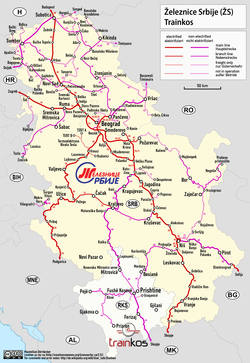
For timetables and all other infos check website of the Serbian passenger railway company .
A cheap way of travelling to or from Serbia might be the Balkan Flexipass .
By car [ edit ]

If your vehicle is registered and insured in an EU country you do not need a green card. Otherwise, make sure that your Green Card has an uncancelled "SRB" box. Coming in from Hungary, the Szeged/Horgos border crossing is notorious for its congestion. If crossing the border from Hungary, try the Tompa/Kelebija crossing point, about 20 km west.
Police are generally stationed at major junctions or at underpasses to control traffic and speed. Drivers commonly warn others of a police presence by flicking the high-beams on two or three times. Police interceptors patrol all major highways. Drivers speeding and/or driving aggressively are stopped. Speeds of up to 140 km/h in 120 km/h zones are usually, but not always, tolerated.
The traffic law is strict. No person under age of 14 is permitted to ride in the front seat, seat belts are obligatory for all passengers, blood alcohol content is limited to 0.03% and fines start at €30 for smaller violations and go up to 60 days in prison and €5,000 for causing a larger traffic accident (both locals and foreigners). Keep in mind that if you kill someone in an accident, a prison sentence will be almost unavoidable. If you are driving on country and local roads, pay attention to the bicycle riders, tractors and other heavy agricultural machines, especially at night! They can be without proper light signalisation and hard to see, so slow down at night.
The highway is tolled, but the toll is no longer higher for foreigners than for locals. Highway tolls cost on average €0.03/km and can be paid in Serbian dinars or euros. They are charged by road section, so it's possible to pay more if only part of section is used. Main roads and populated areas are well covered with gas stations providing you wide range of common fuels (eurodiesel, unleaded petrol, etc.) LPG stations are not so numerous, but are in satisfying numbers on main roads and major cities.
Serbian Auto-Moto Association (AMSS) phone number is 1987 and they provide all kinds of services (information, tows, repairs). Private tow services can be expensive, some a blunt rip-off. Most of the major car companies have their appointed services in Serbia.
By bus [ edit ]
Vienna - Buses leave from Vienna International Busterminal (Erdberg) almost every day. For destinations south of Belgrade, Zoran Reisen coaches leave at 15:00 on Friday, and charge around €45 for a one-way trip.
For more information, see the timetable in English [dead link] (arrivals/departures) of the Belgrade bus station, the Novi Sad public transport company page under "polasci sa autobuske stanice". Polazak.rs also has accurate timetables.
By boat [ edit ]
There are boat tours, which pass through Belgrade. These are Trafalgar Tours in English, which cruise along the Danube and have a two-day stopover in Belgrade.
By thumb [ edit ]
Hitchhiking across Serbia is still acceptable and most drivers will treat you like a friend. However, necessary precautions should still be taken. Generally, it is easy to hitchhike through Vojvodina and much more difficult to hitch a ride from Belgrade to the south, to Kosovo, or North Macedonia and Montenegro. The Hitchhiker's Guide to Serbia [dead link] offers a collection of hitchhiking tips for a number of cities and towns in Serbia. It was made by the members of the Serbia Travel Club, an association of independent travellers from Serbia, and is available in English and Serbian.
By bike [ edit ]
The cycling route EuroVelo 6 which runs from the Atlantic Ocean to the Black Sea, crosses Serbia by following the Danube river. Most of the advised itinerary follows minor paved roads, and directions are clearly indicated by a specific EuroVelo 6 signage.
Although too few cities offer appropriate cyclist-friendly infrastructures, cycling is slowly gaining interest among the population as an economic and sustainable alternative way of touring and commuting.
Get around [ edit ]
Public transportation is generally not in very good shape outside of Belgrade. Trams and newer buses are exclusive to the capital, while intercity transport and transport whithin other smaller cities and towns uses older buses or more expensive minibuses. The coverage, however, is still pretty good in other towns as well. The quality of public transport whithin Belgrade itself is good and has vastly improved lately as most of the bus fleet was replaced by brand new gas powered buses.
The capital itself has around 120 public transport lines which can get you anywhere whithin the city you might want to go. A majority of these lines are bus lines, but some are trolleybus, tram and minibus lines.
Minibuses are way more expensive (~€2 per ride) than regular public transport as they are owned by private companies.
Public transport cost in Belgrade fluctuates depending on the zone you're in. A map of the zones can be found here [dead link] .
A public transport ticket can be either bought directly from the driver upon entering the vehicle or by using a BeoGRADSKA card on one of the card readers inside the vehicle. The card itself costs RSD250 and can be topped up with any amount of money. This card can be bought in kiosks around the city. The money is then deducted from the card every time its scanned. This form of ticket is valid for 90 minutes.
If you intend on buying the ticket from the driver make sure you have the exact amount in rsd as drivers are more often than not unable to give back change.
The cost of a ticket is as follows (as of Jan 2023):
- BeoGRADSKA card : valid for 90 minutes.
Zones 1 and 2: RSD90,
Zone 3: RSD90,
Zone 4: RSD90,
Zones 1—3: RSD130,
Zones 1—4: RSD270,
Zones 3 and 4: RSD180.
- One time ticket bought from the driver : valid until you get off the bus.
Zones 1 and 2: RSD150,
Zone 3: RSD150,
Zones 1—3: RSD300,
Zones 3 and 4: RSD300,
Zones 1—4: RSD400
On minibus lines you must buy tickets from the driver. They cost RSD200 for regular minibus lines and RSD400 for the airport minibus line (A1).
The most common and convenient way of getting around Serbia is by bus. See Bus travel in the former Yugoslavia for more information. For timetables (though not the prices) you can check polazak.rs

Trains in Serbia are considerably slower than most of Western/Central Europe, but they can be a quite scenic way of seeing the country. On most of the routes trains are also slower than buses, exceptions being the lines running from Belgrade to Novi Sad, and to the Croatian border (Šid). They can be a lot cheaper (up to 40%), however. Trains are considerably more often on time, but the intensity of rail services has been decreased on most lines (with some international lines being suspended).
Most railways journeys are operated by new trains (Stadler Flirt for electrified lines and Metrovagonmash RA-2 for non-electrified ones, but you can still find some of the older trains in use on peripheral lines (JŽ class 412/416 made in the Soviet Union), and even some of the old East German diesel rail-buses (Šinobus), latter, mostly in regional use in Banat) and more regular locomotive-hauled trains serving international lines.
All trains are operated by Serbian Railways' passenger branch SrbijaVoz [dead link] . (timetables available, though, for some reason, prices are available just for certain routes. For train prices for all routes you can check polazak.rs . You would need to choose a railway station in the places you are travelling to (marked with a train symbol, and followed by ŽS .
In 2022 a train line from Novi Sad to Belgrade was opened. This is a semi-high speed rail, reaching Novi Sad in around 30 minutes. The ticket costs RSD400.
Train types [ edit ]
There are several train types in regular passenger service, but the type of the train rarely influences the actual journey time, or train speed. They also differ slightly in prices.
Brzi (Fast) trains (marked with a B on timetables), which theoretically stop on fewer stops (though this mostly means, the most peripheral ones).
RegioEkspres trains (marked with a Re on timetables), which stop on most stations (this usually means all).
These two types of trains have a supplement that is added to the ticket (50 RSD for journeys up to 50 km, and 100 RSD for journeys over 50 km, for Re trains, and 100 RSD for B trains)
Putnički (Passenger) (marked with a PT on timetables) trains, which stop at all stations and don't have a supplement. This type is becoming increasingly uncommon as ŽS is phasing it out in favour of Re trains.
Train travel times and prices [ edit ]
Train travel in most of Serbia is in no way time-saving, though it can be a very good option for budget travelers. There are (in theory) two classes in B and Re trains (1st and 2nd, 1st being 20% more expensive)), though this is increasingly meaningless as new Stadler and Metrovagonmash trains have very few 1st class seats (4 in every train), and they are almost always taken by the conductors, and getting them to move can be challenging. There is almost never a 1st class carriage on most international trains either.
Travel times on most lines are much longer than travelling by bus, and many cities in Central Serbia aren't connected to Belgrade directly (and timetable planners don't make it a priority to allow for fast and easy changes). This situation leaves a prospective train traveler with few possibilities of enjoying rail travel to smaller cities.
Generally, it is easier, cheaper and more comfortable (and sometimes faster) to take a train from Belgrade to Novi Sad (40 mins, ~400 RSD one way). Traveling from Belgrade to Niš is another option, though this journey is much longer than by bus (~5½ hr opposed to ~3 hr), and can get very uncomfortable if you're traveling in newer Stadler trains, as their seats were built for shorter travel times (it can also be very frustrating to sit in a completely modern train with an LCD screen constantly showing you travel speeds of 45 km/hr). This journey can, on the other hand, be a very nice, and scenic experience, if you, for example, take a PT train from Zemun (departing Belgrade Centre station at 15:22 and arriving at 20:52, costing 784 RSD) which is still operated by old compartment carriages and locomotive hauled (and almost always completely empty (June 2022).
The long-lasting change (starting in the 1980s) of Railway Terminals from Glavna Železnička Stanica Beograd (Belgrade Main Railway Station) to Beograd Centar/Prokop (Belgrade Centre/Prokop) has been (as of the 2017/18 timetable) completed. All trains go to Beograd Centar, the old station has been closed permanently. The problem with this is that Beograd Centar is mostly unbuilt, having only the platforms and no station building, and being infamously hard to reach (as Belgrade locals like to say, it has only 1½ bus lines going to it (one going from nowhere to nowhere and another (very irregularly) going from nowhere to Slavija square). If you are going from Novi Sad, Subotica or Šid, you should consider exiting the train at Novi Beograd and taking a bus or a tram to the city centre. Or you could take the city railway (BG:Voz from Beograd Centar either to Novi Beograd or Karađorđev Park/Vukov spomenik, which are more centrally located. Avoid trains arriving late at night because neither Novi Beograd Station nor Belgrade Centre are a good place to be at night, and there is virtually no public transport there after 23:00. Beograd Centar was built as a railway hub for the Yugoslav Railways, and was planned for many more and much bigger trains that it sees now, so be sure you're waiting at the right platform and stay close to the middle, because otherwise you might miss your train.
You must buy tickets at the train station before boarding the train (unless the ticket window is closed (usually only very late at night, and never in main cities). A ticket is valid for a specific train, not (as is common in Western Europe, a line), so you can't hop-on hop-off. Tickets are not sold online.
The cashiers usually speak little English, so you should have a piece of paper with your destination written on it, and if you don't want to the next train, the number of that train. The cashier will sometimes ask you if you want a reservation, and if you speak no Serbo-Croatian, they will usually put it without asking. This reservation costs RSD110, and has no real purpose, as it only guarantees you a seat, and trains are almost never full (except the Belgrade-Novi Sad line). Also, even if you have it, conductors can be unwilling to fight other passengers to give you the seat, and you can bet that no one on the train will have a reservation for a particular seat you take. If you don't wish to take the reservation you should just say bez rezervacije (bez rezervatsiye) when buying a ticket.
Roads are in a good shape. The main motorways are completed, going in East/West and North/South direction, with toll gates at every exit and before major cities. When going outside the motorways, the roads are well maintained, but full of pedestrians, and somewhat erratic drivers. Aside from the motorways, the roads usually go through the centers of towns and villages, which slows down most journeys. As the public transportation is often lacking, cars tends to be the only viable way of getting to more remote parts of the country. Police checks are common like in other European countries (not very common). Google Maps and other major navigation providers work well in Serbia, just prepare yourself with offline maps if you don't want to spend a fortune on data roaming.
Gas is usually slightly cheaper than in nearby EU countries, but still expensive by non-european standards.Shopping around for cheaper gas is not necessary.
In Serbia, there have been attempts to scam motorists by stopping a car and telling them it is faulty. Tourists are advised to go to a local garage to have their car repaired, where exorbitant repair prices are charged. Scam attempts have been made on the Belgrade-Nis motorway, among others. It is advisable to use only authorised repairers.
See [ edit ]

Serbia's many sights include stunning castles, Medieval monasteries, lovely traditional villages and bustling cities with baroque parks and art-deco architecture.
Cities and villages [ edit ]
Its capital, Belgrade , is a lively and upcoming European city with the Sava and Danube rivers running right through it. Certainly not a boring city, it has a plethora of interesting destinations, old and new.. Stroll through Prince Michael Street, the cities main pedestrian street, or stop by for a drink in one of Skadarlija 's many restaurants. There are a lot of old buildings on all four banks, including the huge Kalemegdan Fortress , that has been built, modeled and remodeled by the Celts, Romans, Byzantines, Serbs, Austrians and Turks in a time span of over 2000 years. Once an important military fortification, it now serves as a central park of Belgrade with beautiful views facing the north-west. Within the fort is a zoo, a military museum, a couple churches rich in history, galleries, parks, sports fields, etc. It has a multitude of various towers and ports, and two long walking/biking paths along both rivers. Other Belgrade sights include the modern Temple of Saint Sava , the National Museum and the Old Court Palace . The river island Ada Ciganlija has an artificial lake and an 8 km long gravel beach, and is a close option if one doesn't want to bathe in pools. Should one want the contrary, Tasmajdan park is, along with the famous church of St. Mark, filled with pools and even houses a water polo team. It's a lively place with lots of sports and entertainment, cafes and restaurants, some of which are opened the whole year round. Zemun , now part of the Belgrade urban area, developed under Hungarian and later Habsburg influence for most of its history and is a pleasant area with a distinct feeling dissimilar to Belgrade. It offers plenty of entertainment and restaurants on its Zemun quay , on the bank of the Danube.
Novi Sad is another delightful city, with the Petrovaradin Fortress (one of the greatest and best preserved 18th-century fortresses in Europe) as its main sight. The city also has a number of lovely parks that just ask for a long afternoon stroll or picnic. Sremski Karlovci near Novi Sad has a rich history, numerous monuments, museums, churches, galleries and famous wine cellars. Town of Novi Pazar , your last stop before Kosovo , has a distinct Turkish heritage and a bunch of great monasteries in the surrounding area.
Mokra Gora is a village reconstructed in a traditional style in the popular mountain region of Zlatibor . The village of Sirogojno is in the same region, with a nice open air museum and lots of traditional crafts on display. Very nearby is the traditional village of Drvengrad , also known as Mećavnik , which the Serbian film director Emir Kusturica built for his film Life is a Miracle . After you see the villages, Zlatibor offers some great ski-resorts, hiking trails and landscapes. Or hop on the Šargan Eight , a narrow-gauge heritage railway running from Mokra Gora to Šargan Vitasi station (Zlatibor and Tara mountains). When it comes to the number of bridges and tunnels, and the rise of 18 per thousand, Sargan Eight is unique in Europe and a ride on the 8-shaped track is a popular pass time for tourists.
Monasteries [ edit ]
Serbia is home to a great number of Medieval orthodox monasteries, many with excellent fresco masterpieces inside. The 12th-century monastery of Studenica (near Kraljevo ) is one of the finest examples and recognised by UNESCO as a World Heritage Site. Its two churches are built in white marble and boast some stunning 13th and 14th century Byzantine paintings. Žiča , also near Kraljevo , was founded around 1207 and painted red as a symbol of the blood of the martyrs of the early Christian church. The frescos at Sopoćani (near Novi Pazar ) are considered some of the finest examples of their time, and the monastery is on the World Heritage list together with ruins of ancient Stari Ras , once the capital of the Serbian state of Raška but deserted in the 13th century. The fortified Manasija monastery near Despotovac is protected by massive walls and towers, and although much of its original frescos were damaged beyond repair during the Ottoman rule, it's still well worth a visit. In the beautiful Kučaj mountains, Ravanica near Ćuprija was assaulted, damaged and rebuilt time and again during history. It is the burial place of Lazar of Serbia, who is a saint of the orthodox Serbian church and a hero in Serbian epic poetry. Other fine monasteries include the Mileševa monastery near Prijepolje , with its world famous "White Angel" fresco, and Krušedol near Syrmia . The famous medieval monasteries were protected by UNESCO are: The Pec Patriarchate (monastery), Gracanica monastery, and the monastery of Visoki Decani.
If you stay only in Belgrade, be sure to visit Frescoes museum in the centre which will provide you with a glimpse of a Serbian fresco paintings as it holds copies of the most famous and beautiful frescoes from various monasteries.
National parks [ edit ]

Of the several national parks and natural areas in the country, Fruška Gora is undoubtedly one of the best. Dotted with ancient monasteries and wineries, it combines orchards and vineyards on its vast plains with tight forests on its plains. The Tara National Park covers some 20,000 hectares in the west of the country. There, the steep gorges of the Drina river and the high mountain peaks provide some stunning views that make a long hike well worth your effort. The mountainous landscape of Kopaonik , in the south, offers some great ski and snowboard opportunities, great views and a rich flora.
Largest national park in the country is Đerdap in the eastern part of the country, on the border with Romania. It consists of the Djerdap (Iron Gate) gorge thru which the river Danube runs and its beautiful surroundings of almost untouched nature. It is simply breathtaking and best experienced from a boat cruise. It can be also toured by bus or a car with many belvederes to stop and enjoy its views. EuroVelo 6 cycling route also runs through it.
Spas and resorts [ edit ]
Serbia is the land of spas. There are many thermal and mineral water springs and most of them are turned into healing and resting resorts. Vrnjačka Banja is the largest and most popular of them and is traditionally very attractive tourist resort for rest and recreation. It's the only mineral spa with a water temperature to match that of the human body, 36.5 °C. Sokobanja is another famous spa and tourist place in Serbia known for its moderate continental climate and untouched nature - immense surfaces of woods, fresh air and a lot of thermo-mineral sources. Palić is a lovely city in the north. Its baroque parks, monuments of art nouveau architecture and a long tradition in catering made it a fashionable summer resort and spa for the 19th and 20th century elite.
Archeological sites [ edit ]

Viminacium near the village of Stari Kostolac is an important archaeological site and was Serbia's first excavation project in the 1880s. It was once the provincial capital of the Roman province of Moesia (today's Serbia) and dates back to the 1st century. At the site you'll find archaeological remains of temples, streets, squares, a large amphitheatre, palaces, hippodromes and Roman baths. Another major archaeological site (and doubling as a spa) is that of Gamzigrad . It hosts the remnants of an ancient Roman complex of palaces and temples called Felix Romuliana , and is considered one of the most prominent and best preserved late-Roman sites.
Lepenski Vir , situated in national park Đerdap, 160 km east of Belgrade, between towns of Golubac and Donji Milanovac, is the site of oldest neolithic settlement in Europe and is part of UNESCO world heritage. It is very well preserved and famous for its fish-like sculptures. From neolithic period there is also an archaeological site Vinča, less spectacular though, but a must - see. It is in Belgrade suburb of Vinča, 20 km from city centre.
Sremska Mitrovica is a town over the remainings of Sirmium, a provincial capital of the Roman Empire , destroyed in attacks by Avars in 505 AD. The remainings are under the whole town, but there are exposed excavations on several places. Ten Roman emperors were born in or around Sirmium. It was the capital of the Panonnia province and the Praetorian prefecture of Illyricum.
Festivals and nightlife [ edit ]
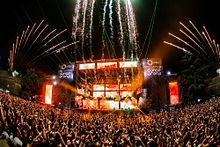
Foam Fest - Belgrade Foam Fest is a spectacular electronic music stage event. It began in 2009 and more than 60,000 people have visited it since then. LED screens arranged all over the Arena, with hundreds of light guns, lasers, robo heads and other light and sound equipment, numerous foamfalls and foam guns will classify this event again as a manifestation that sets new production standards in Serbia and the region Belgrade Foam Fest [dead link] .
Exit festival – Biggest music festival in SE Europe, that is happening in the beginning of July, in Novi Sad, on Petrovaradin fortress [1] .

Festival of traditional brass bands, "Trumpet Festival" in Guca village is held every year at the beginning of August.Festival of traditional brass bands, "Trumpet Festival" in Guca village 20 km from the town of Cacak. During the festival in this small town a few days to go over half a million visitors.The festival in Guca is perhaps the biggest festival of this type, including a lot of visitors from abroad.

Belgrade Beer Fest , which takes place at Ušće every August offers a taste of domestic and foreign beers and some good rock music [2] .
Belgrade is very famous for its all-night-party clubs. If you are looking for a place to feel the local atmosphere and good vibes, visit bohemian street “Skadarlija”. Please have a look at the Belgrade article for further options.
New Year's Eve [ edit ]
Restaurants, clubs, cafés and hotels are usually full-booked and organise New Years celebrations with food and live music.
However, Serbian New Year's celebrations are most known for the outdoors festivities in Belgrade, and several other major cities such as Novi Sad, Niš and Jagodina. As of mid-December, cities are extensively decorated and lit. The decorations remain until way into January due to the persistent influence of the old Julian calendar. Throughout the region, especially amongst former Yugoslav republics, Belgrade is known as the place to be for major parties, concerts and happenings. It has become common for large groups of Slovenes to visit their former capital and celebrate the beginning of a new year. Especially since the mid-1990s, street celebrations grew into mass gatherings with hundreds of thousands of people, celebrating New Year on one of several locations throughout Belgrade.
Also, on January 14, Serbians celebrate the so-called Serbian New Year, which is New Year's Eve by the Eastern Church calendar. In the night between January 13 and 14, you can re-live New Year's Eve.
Tipping [ edit ]
Tips are never considered a strict obligation since service charges are always included in the bill, however rounding up or leaving a tip (10-15%) is common in restaurants (not in fast-food restaurants) if the customer is satisfied with the service. Tips are also accepted in bars and taxicabs (usually by rounding up the amount paid - e.g. if the taximeter displays RSD 592, give 600).
Shopping [ edit ]
Imported western food is available in many supermarkets, especially in the "Idea" chain.
In nearly all Serbian pharmacies ( apoteka ), you can buy prescription drugs without prescription.
Prices tend to be on par with the rest of the Balkans. However, import taxes make clothes and shoes in Serbia very expensive.
Eat [ edit ]
Serbian food is a typical Balkan mix of Central European, Mediterranean, and Middle Eastern dishes. Serbs are very proud of their food, which is heavy on grilled meats and sausages, local cheeses and bread. Serbia is predominantly a meat-loving nation. In all major cities, there are many international restaurants, such as Italian, Chinese, Mexican, Thai, Lebanese. In Belgrade you can even find sushi or kosher food.
There are international fast-food franchises such as McDonald's, KFC, and Pizza Hut. On the whole, prices are cheap compared to Western Europe with main dishes ranging from RSD 600 to 2400 per person.
Vegetarian foods [ edit ]
Pure vegetarian restaurants are rare, but many places will provide you with non-meat food (just ask for 'posno'-general term for non - meat foods). Numerous fast-food stands (burgers, barbecue, pizza, hot dog, pancakes...) and bakeries (Asian and European pastry, pitas...) are usually very good and will satisfy your needs at a reasonable price. Pizza, sandwiches, and pancakes (crepes) are also commonly found. Salads are primarily tomato, cucumber, and onion, or cabbage. Local produce is fresh and organic.
Serbian-style coffee [ edit ]
Coffee culture in Belgrade is particularly developed; walking about the central areas of the city you will find sprawling terraces and cafés, serving all types of coffee and sweets, particularly Viennese type cakes and local specialties. Be sure to try Serbian Turkish-style coffee, and chestnut purée with whipped cream, a local specialty especially at Republic Square (available mostly during winter).
Sleep [ edit ]
Stay safe [ edit ].

Serbia is generally a safe place to visit. The locals are incredibly polite and helpful in case you require any assistance. (If you need any help finding/reaching a place, it's best to ask a younger person for help, as they are more likely to speak English.) However, you should always be aware of pickpockets, mainly in crowded tourist places and on public transportation. Street robberies, assaults or murders are highly unusual, even in dark or remote parts of a city/town. One should always watch out for drivers, who can be very rude to pedestrians or cyclists. There is also widespread intolerance against LGBT people.
Emergency phone numbers are: 192 - police; 193 - fire dept. and 194 - ambulance.
Following the Yugoslav wars of the 1990s, reports of UXOs (unexploded ordnance) have occurred outside the major cities. Keep an eye out for markings which may signify a potential UXO zone when outside the cities and always stick to well-trod paths. If you find a suspicious object resembling a bomb/mortar/landmine, don't touch it . Report it to the nearest police station immediately. Most UXOs have been cleared, though, so it is very unlikely that you will find any.
Floods are common in spring and autumn in river basins - the Danube, Sava, Tisza and Drina.
Serbia is located in a seismically active area, so earthquakes are possible. However, earthquakes causing major damage are rare. The last recorded earthquake was in Kraljevo in November 2010.
Stay healthy [ edit ]
Tap water is perfectly safe to drink, and mainly of a good quality, too. There are also many springs and fountains with excellent-quality drinking water - the most popular ones being the fountain on Knez Mihailova in Belgrade, and the many fountains in the city of Nis . One must pay attention when it comes to water in Vojvodina. Some regions (like Kikinda and Zrenjanin) have heavily polluted water that is not even used for cooking, only as industrial water.
Respect [ edit ]
Serbs are a very friendly, polite and hospitable people, especially in the southern parts of the country.
When you are invited into a Serbian home, make sure to bring them a gift if you are coming for the first time. Anything is fine from flowers to chocolate or something representative from your country. When you arrive at a rural house, take off your shoes unless the owner explicitly tells you to keep them on. When inside the house, don't ask for anything, for they will surely offer it. If you are thirsty it is polite to ask for a glass of water. The host probably forgot to offer you a drink and will do so.
In a bus or a tram it is considered polite to offer an elderly person or a pregnant woman a place to sit.
Because many Serbs feel frustrated by the 1990s Yugoslavian Wars or the NATO bombing of Serbia, it is best to avoid discussion of them. If someone brings the topic up, try to avoid giving any strong opinions until you can assess your acquaintance's views. Do not voice support for Kosovo's independence. The U.S.'s vocal support of Kosovar independence and the 1999 air strikes caused some ill will directed towards the West, particularly towards the U.S. (though this is rarely extrapolated to individual American tourists). However, if you share the views of most Serbs, some may be willing to discuss the subject and many will be happy speaking to a Westerner who shares their views.
On the other hand, talking about Socialist Yugoslavia and Tito will not raise as many eyebrows, as most will not hesitate to talk about it and some may even approach it with a strong degree of affection towards that more stable and more peaceful era. Serbia does not recognise the independence of Kosovo but maintains diplomatic relations with Slovenia, Croatia, Bosnia-Herzegovina, Montenegro, and North Macedonia.
Like the citizens of other ex-Yugoslavia countries, Serbs do not like their country to be described as part of "Eastern Europe". A common misconception is that Serbia was part of the Soviet Bloc (in fact, it was part of Yugoslavia, which split with the Eastern bloc in 1948). Unlike in most other European nations east of the Iron Curtain where anti-Russia sentiment is high due to Soviet dominance over those nations during the Cold War, in Serbia, Russians are generally seen as friendly brotherly people. People have no problems talking about the communist period or Tito and often express nostalgia for it. Serbian views of the Russian invasion of Ukraine are also pretty mixed and there are quite a few (very vocal) people who support the invasion. This however does not necessarily apply to the entire nation and many people who have experienced the Yugoslav wars will be against the war despite disliking Western countries (especially the U.S.).
When toasting in Serbia, as in most European countries, make sure you make eye contact. You may be invited to drink gallons but are expected to be able to hold your drink. Being obviously drunk is a sign of bad taste, lack of character, and worse. Be careful: "rakija", a plum spirit (usually about 53% alcohol content), is stronger than you might expect, and will make you drunk fast! It is always nice to toast in your companion's native tongue. Cheers is živeli in Serbian.
Don't point with your finger at someone. This is considered rude.
Socially, displays of affection among the younger generation are as in Western Europe, but the older generation (over 65) is quite conservative.
The word molim (please) is key to polite conversation in Serbian. It basically means please , but also you're welcome , an appropriate response when somebody thanks you (and says hvala ). It also means I beg your pardon? . Just saying Šta ? ( What?) can sound rude. It may be said that the usage of the word molim is similar to the usage of bitte in German.
Like most European languages, Serbian has formal and informal ways of saying you ( Vi and ti ). Use the formal Vi version when addressing older people. People are normally not addressed or referred to by their first names, except among friends or relatives.
Connect [ edit ]
There are three GSM/UMTS mobile phone networks in Serbia: MTS, Telenor and Vip. Prepaid SIM cards usually cost RSD 200-300 and there is no need for identification when buying them at a store in person. Most small stores and kiosks that sell newspapers and cigarettes in Belgrade offer the SIM cards. A good option (as of April 2018) is the VIP 7-day card for 300RSD including 8GB of LTE Internet (but no call or SMS credit).
But you need to have a valid Serbian ID for online order of prepaid SIM card from Telenor (the only operator known which takes online orders).
In some stores you can buy a simple mobile phone packaged with prepaid SIM card for RSD 2000–3000.
Don't forget that Serbia is not in the EU, so using a SIM card issued in an EU country will cost you a fortune.
Most hotels have internet connections, and plenty of restaurants have Wi-Fi hotspots.
Go next [ edit ]
The land border can be crossed to Croatia , Hungary , Romania , Bulgaria , North Macedonia , Kosovo , Montenegro and Bosnia and Herzegovina .
Serbia has ultra-low-cost flights to several European countries and from Belgrade to Abu Dhabi in the United Arab Emirates . (updated May 2022)
- Has custom banner
- Has mapframe
- Maps with non-default size
- Has map markers
- Airport code pages missing
- Articles with dead external links
- Has Geo parameter
- All destination articles
- Outline countries
- Outline articles
- Country articles
- Pages with maps
Navigation menu
Stay up to date with notifications from The Independent
Notifications can be managed in browser preferences.
UK Edition Change
- UK Politics
- News Videos
- Paris 2024 Olympics
- Rugby Union
- Sport Videos
- John Rentoul
- Mary Dejevsky
- Andrew Grice
- Sean O’Grady
- Photography
- Theatre & Dance
- Culture Videos
- Food & Drink
- Health & Families
- Royal Family
- Electric Vehicles
- Car Insurance deals
- Lifestyle Videos
- UK Hotel Reviews
- News & Advice
- Simon Calder
- Australia & New Zealand
- South America
- C. America & Caribbean
- Middle East
- Politics Explained
- News Analysis
- Today’s Edition
- Home & Garden
- Broadband deals
- Fashion & Beauty
- Travel & Outdoors
- Sports & Fitness
- Sustainable Living
- Climate Videos
- Solar Panels
- Behind The Headlines
- On The Ground
- Decomplicated
- You Ask The Questions
- Binge Watch
- Travel Smart
- Watch on your TV
- Crosswords & Puzzles
- Most Commented
- Newsletters
- Ask Me Anything
- Virtual Events
- Betting Sites
- Online Casinos
- Wine Offers
Thank you for registering
Please refresh the page or navigate to another page on the site to be automatically logged in Please refresh your browser to be logged in
Serbia travel guide: Everything you need to know
Hospitality, history, untouched landscapes and fantastic-value meet in this eastern european gem, article bookmarked.
Find your bookmarks in your Independent Premium section, under my profile

Sign up to Simon Calder’s free travel email for expert advice and money-saving discounts
Get simon calder’s travel email, thanks for signing up to the simon calder’s travel email.
Buzzing cities, elegant architecture, a mind-bendingly varied history and some truly astonishing landscapes make Serbia one of the most compelling countries in Eastern Europe. It’s exuberant, hospitable (bring a big appetite) and crammed with cultural and culinary legacies from Ottoman and Habsburg times.
It’s also one of the most affordable places to visit: some of the prices, particularly food, drink and transport, will make you do a double take. Its national parks – encompassing river canyons, mountains, lakes, caves and forests – show off Serbia’s untamed nature and beauty.
Travel restrictions and entry requirements
Serbia no longer has any Covid entry requirements, including proof of vaccination or negative Covid test. Masks aren’t mandatory, although some parts of the population are still wearing them.
Best time to go
The months from spring to autumn are the best times, as winter can be cold and snowy (unless you want to go skiing in Serbia’s main ski resort of Kopaonik). Serbia has a busy schedule of festivals from May to September, especially in the capital, Belgrade, as well as the Exit Festival in Novi Sad in early July. Niš’s Nišville Jazz Festival takes place in August, as does the Belgrade Beer Festival and the riotous Guča Trumpet Festival. The Belgrade Book Fair in October is one of the biggest and oldest in the region. Christmas is also a popular time to come, especially Orthodox Christmas which is on 7 January (with the main festivities on 6 January).
Top regions and cities
Serbia’s capital hums with activity and is constantly on the move. With more and more of Stari Grad (Old Town) becoming pedestrianised, it’s a pleasure to wander its café-filled thoroughfares using the main artery, Knez Mihailova, as your starting point. Check out the fabulous art at the National Museum of Serbia in Republic Square before ambling along to Kalemegdan, the enormous and historic park that overlooks the confluence of the Danube and Sava rivers. You’ll see the riversides teeming with floating restaurants and clubs, while wide waterside paths invite lazy strolls and bike rides. Cross the Sava to the old Habsburg suburb of Zemun and wonderful views from its Gardoš Tower. Back in Stari Grad, you’ll be faced with the dizzying choices of places to eat and drink in the tree-lined streets of Dorćol. Further south in Vračar, you can’t miss the round white neo-Byzantine domes of Sveti Sava temple, whose fantastically glittering interior is finally nearly finished after more than a century in the making.
- Belgrade city guide: Where to stay and what to do in Serbia’s capital
There’s a wonderfully relaxed pace of life in Novi Sad, the European Capital of Culture for 2022 and the largest city in northern Serbia’s multicultural Vojvodina region. Its pedestrianised centre is filled with handsome Habsburg architecture harbouring café terraces, with more bars and restaurants tucked away in little alleyways and minuscule squares. Start off among the pastel-coloured townhouses of Zmaj Jovina and along to Dunavska where you’ll soon come to the Museum of Vojvodina – an excellent place to bone up on the history of the region. Cross the Danube to reach the massive 18 th -century Petrovaradin Fortress (where the Exit Festival takes place) and the Novi Sad City Museum within. When the weather warms up, follow the wide footpath along the Danube to reach the city’s beach at Štrand.
- Novi Sad guide: Where to eat, drink, shop and stay in Serbia’s second city
The southern Serbian birthplace of Constantine the Great has some fascinating things to see, including the imposing Niš Fortress built by the Turks in the 18 th century. It’s now part of a collection of sights in the main city park that features an amphitheatre for summertime events, the 16 th -century Bali-Beg Mosque, a zoo and a 15 th -century Turkish hammam that’s now a café. Join the evening korso (the Serbian version of the Italian passeggiata – a leisurely evening stroll) along pedestrianised Obrenovića and the Ottoman-style cafés and restaurants of Kopitareva. For a more sobering look at Serbian history, there’s the infamous Skull Tower, erected by the Turks in 1809, which is studded with the skulls of Serbs who died defying Ottoman rule.
Western Serbia
The region of western Serbia is packed with sights, including the mountains of Zlatibor, the Gostilje waterfall and the marvellous subterranean world of Stopića cave. You’ll find a few delightful oddities too: the open-air museum of Sirogojno reconstructed to look like a 19 th -century village, the feat of Austrian engineering that is the Šargan Eight heritage railway winding through the Mokra Gora mountain and the eccentric Drvengrad village created by the film director Emir Kusturica. The most spectacular sight, though, is the dramatic karst landscape of Tara National Park, which includes the Drina River that forms a natural border with Bosnia. It’s one of the most sublime places to hike and cycle along its 200km of trails. Hire a kayak and get a close-up look at the House on the Drina, a wooden fishing lodge perched on a rock in the middle of the river.
Fruška Gora National Park
Just south of Novi Sad is Fruška Gora, whose thickly forested mountains shelter 16 monasteries dating from the 15 th to the 18 th centuries, hiking and cycling trails and, in the foothills, vineyards producing top-class wines. Keep an eye out for wildlife including eagles, deer and lynx. It’s easy to visit from Novi Sad and the nearby town of Sremski Karlovci, the latter an enchanting place of baroque and neoclassical architecture.
Best under-the-radar destinations
You’re barely a dozen kilometres from the Hungarian border at Subotica, so it won’t come as a surprise to see this northern Serbian city decked out in bilingual signs. In fact, it was part of Hungary longer than it’s been in Serbia. It’s not just the liberal use of paprika in its restaurants that gives this city its spice. Subotica is a riot of colourful art nouveau/secessionist architecture, from its city hall (whose clocktower you can climb) to the wonderfully over-the-top Raichle Palace, now a modern art gallery. There’s more art nouveau loveliness in the neighbouring spa resort at Lake Palić, a 10km bus ride or cycle away.
At the point where the flatlands of Vojvodina’s Banat region get close to the Romanian border and the Carpathian mountains, the welcome sight of the Vršac hills come into view, with the attractive city of Vršac at its base. Some of Serbia’s best wine comes from the vineyards that cover the slopes above Vršac, and the city’s streets of 18 th -century classical and neo-gothic architecture make it a pleasure to explore. Go hiking in the Vršac hills and look out for the 14 th -century defensive tower from where you can get sweeping countryside views.
The Romans were among the first people to make use of Sokobanja’s thermal springs, and they’ve been enjoyed ever since. The hammam built by the Turks in the 17 th century is still in use today within this attractive spa resort an hour north of Niš. Surrounded by forested peaks and bisected by the Moravica River (which offers several river beaches to cool off in), Sokobanja is also in prime hiking and mountain biking territory. One of the trails leads to the ruins of Sokograd, a medieval fortress that offers impressive mountain vistas.
Best things to do
Explore uvac nature reserve.
The crazily serpentine Uvac River has the sort of twists and turns that can be best appreciated from one of several viewpoints above. Here you can see the steep forested slopes rising above vivid turquoise waters, while griffon vultures fly above. While you’re there, add a boat trip or a kayak journey along the river to your list of must-do activities.
Go to Djerdap National Park
Serbia’s largest national park hugs the right bank of the Danube and has several of the country’s most extraordinary sights. Nicknamed the Iron Gates, the Djerdap Gorge – actually a series of four gorges and three ravines – turns up on itineraries of river cruises and really is quite jaw dropping. At its head is the medieval Golubac Fortress, the sort of castle that belongs in a fairy tale. Soon you’ll come across one of Serbia’s most important historical sights: the Mesolithic and Neolithic Lepenski Vir archaeological site, which dates back to at least 7000BC.
Visit the monasteries
Serbia’s medieval monasteries are a fundamental part of the country’s heritage and history. One of the most visited is the 12 th -century Studenica Monastery in central Serbia, which is a Unesco World Heritage Site and is in the suitably peaceful setting of the Golija-Studenica biosphere reserve. It’s about an hour from one of Serbia’s prettiest monasteries, Žiča, which, like most of the others, is built in lavish neo-Byzantine style.
Follow the wine routes
Serbia makes superb wine that regularly wins international awards, but isn’t particularly well known outside its borders. Luckily there are official wine routes where you can visit vineyards for tastings, including around Subotica, Fruška Gora, Vršac and the Tuscan-like countryside outside Belgrade. In eastern Serbia where the borders of Romania and Bulgaria meet is Negotin; here, delectable Prokupac red wines are made in absurdly picturesque village stone cellars called pimnice .
Getting around
Serbia’s public transport is very affordable. While the Serbian Railways network is relatively limited, there’s a new high-speed train that connects Belgrade to Novi Sad in only 30 minutes. There are frequent buses around the country, although you might want to hire a car if you’re exploring beyond the major cities.
How to get there
The quickest way to get to Serbia is to fly to Belgrade, although flights can be very expensive unless booked far in advance. Other airports in Niš and Kraljevo are used for internal and regional flights. Getting there by train takes at least two days: take the Eurostar to Paris, change for the Munich train to Zagreb. Unfortunately, the Zagreb-Belgrade train is currently suspended and is replaced by a bus service.
Money-saving tip
If you arrive in Belgrade airport and need a taxi, order one from the official tourist information desk in the baggage claim area. You will pay a set price and avoid the touts outside the terminal charging more.
What’s the weather like?
Serbia has a typically Continental climate – long, hot summers and cold, snowy winters. It can get very hot in the summer and regularly is in the 30Cs.
What time zone is it in?
What currency do i need.
Serbian dinar.
What language is spoken?
Serbian is spoken, and many people in tourism and the hospitality business speak English.
Join our commenting forum
Join thought-provoking conversations, follow other Independent readers and see their replies
Subscribe to Independent Premium to bookmark this article
Want to bookmark your favourite articles and stories to read or reference later? Start your Independent Premium subscription today.
New to The Independent?
Or if you would prefer:
Want an ad-free experience?
Hi {{indy.fullName}}
- My Independent Premium
- Account details
- Help centre

IMAGES
VIDEO
COMMENTS
The 12 Most Beautiful Towns and Villages in Serbia. Belgrade and Novi Sad are undoubtedly the main draws of Serbia. The two biggest cities deserve more than they get, but even city-loving travellers will agree that it takes a lot more than metropolises to make a country. Pockets of Serbia are still delightfully traditional, and those who wisely ...
Photo by Photoaliona. 4. Kragujevac Was the First Capital of Modern Serbia. Kragujevac is an industrial city located in the region of Sumadija, in central Serbia, known for FIAT car manufacturing. Visit the museum "Old Gun Foundry" to learn more about the rich industrial heritage of Kragujevac.
To explore everything Serbia has to offer, make sure to wander off the beaten track and peek inside its hidden nooks and crannies.Here you will find traditional, rural households open to tourists wanting to experience the authentic atmosphere of a Serbian village.People living in these rural households enjoy a simple, traditional life, at harmony with nature and away from the hustle and bustle ...
16. Ottoman Era In Nis - Skull Tower. Located in the country's southeast, Nis is the third-largest city in Serbia. It is packed with relics and ruins dating back to the Ottoman era. Mediana, a former Roman town, a massive fortress, and the worryingly named Skull Tower, is close by.
2. Fruška Gora Mountain and National Park. Source: Lenar Musin / shutterstock. Fruška Gora Mountain and National Park. Located in the region of Syrmia, Fruška Gora Mountain is found on the border with neighbouring Croatia, and is affectionately known as the 'Jewel of Serbia'.
A bohemian village that is popular for its cafes and nightlife in the summer, but as I visited there during winter, the area was quiet, making it a nice place to stroll around and enjoy the view of the Danube river and even the picturesque landscape of Zemun from Gardos Hill. ... Serbian Ministry of Tourism and the then Yugoslav State Railway ...
From Belgrade's nightlife circuit to the mountains of Kopaonik National Park, Serbia has incredible scenery, people, food, architecture and history. Here are 11 of the best places to visit in ...
Tara National Park in Serbia's southwest is without a doubt the country's most beautiful spot. Luscious forests and mountain peaks up to 1600m-high are spread over 250 sq km while the clear water of the Drina river is shining in surreal turquoise. The diverse wildlife population of the park includes about 50 brown bears.
10. Mokra Gora village. One of the best things to do in Serbia is to visit the picturesque mountain village of Mokra Gora, located between the mountains of Tara and Zlatibor. A popular tourist attraction here is the Šargan Eight narrow railway track, which offers the best way to enjoy the local stunning scenery.
Mokra Gora is another wonderful spot in Zlatibor that is tied to Kusturica and Life is a Miracle (2004), albeit one that is slightly overshadowed by the relative modernity and ethno-splendour of Drvengrad. Mokra Gora is best known for its unique narrow gauge railway, the route of which looks like a figure eight when viewed from the sky.
3. Taste the Amazing Wines by the Danube at Sremski Karlovci. 4. Discover one of Grimmest Places to Visit in Serbia: Skull Tower, Niš. 5. Hear the Legends of the Devil's Town. 6. Take a Day Trip Down the Danube and Visit the Amazing Golubac Fortress. 7.
Explore Serbia. To explore everything Serbia has to offer, make sure to wander off the beaten track and peek inside its hidden nooks and crannies.Here you will find traditional, rural households open to tourists wanting to experience the authentic atmosphere of a Serbian village.People living in these rural households enjoy a simple, traditional life, at harmony with nature and away from the ...
The Serbian village of Mokra Gora was ranked among the best tourist villages in the world by the General Assembly of the World Tourism Organization at the end of last year. Chosen amongst 170 ...
Virtually every village in Serbia has at least one rural retreat that will welcome you on your quest to explore undiscovered areas far from the urban hustle and bustle and the crowded tourist resorts, and yet close to national parks, nature parks, rivers, lakes, monasteries, archaeological sites...
Serbia. Diverse, welcoming and a hell of a lot of fun - everything you never heard about Serbia is true. Best of all, this landlocked country in the heart of the Balkans is still delightfully off the tourist trail. While the feisty Serbian spirit is embodied in Belgrade's world-class nightlife and Novi Sad's epic EXIT Festival, look ...
Explore the 11 best places to visit in Serbia…. 1. Belgrade. St Sava Temple, Belgrade (Shutterstock) Belgrade is a mish-mash of grand architecture, bursts of green spaces, stylish stores, and brutalist buildings on the outskirts of the city. Its daytime to-do list is almost as impressive as the night's. For those not brave (or hip) enough ...
Lower fortress Suburbimum "Gradić", "Citadel", "Pentagon" with the Water City "Wasserstadt" 3. Island Fortress - Insel Shanze 4. Bridgehead - Brücke Shanze 5. Hornwerk What is behind her history is the biggest brand of Serbia is her underground, the famous Katakombe, actually a contram system consisting of about 1000 corridors, over 30 km ...
Lake Palić. Serbia. The resort town of Palić, 8km from Subotica, is home to a 5-sq-km lake popular with boaters, fisherfolk and afternoon amblers; its water isn't approved…. 1. 2. 3. Discover the best attractions in Serbia including Belgrade Fortress, Uvac Canyon, and Studenica Monastery.
9. Gornje Podunavlje. Located in the northwest of Serbia, Gornje Podunavlje is one of the best-hidden gems in Vojvodina. If you are an outdoorsy person and wish to reconnect with nature, this nature reserve will leave you breathless with its wetland forests, meadows, river islands, swamps, and ponds.
Sokobanja is situated in basin between the mountains Rtanj (1,560 m) and Ozren (1,117 m), 400 m above the sea level. Sokobanja is a famous spa and tourist place in Serbia for its moderate continental climate and immense surfaces of woods, fresh air and a lot of thermo-mineral sources. They all make Sokobanja an exceptional place in Serbia.
Serbia's public transport is very affordable. While the Serbian Railways network is relatively limited, there's a new high-speed train that connects Belgrade to Novi Sad in only 30 minutes ...